- Installation at Blue Mountain Center
The Gujarati word for sparrow is chakali. This is a linoleum block print of a chakali:
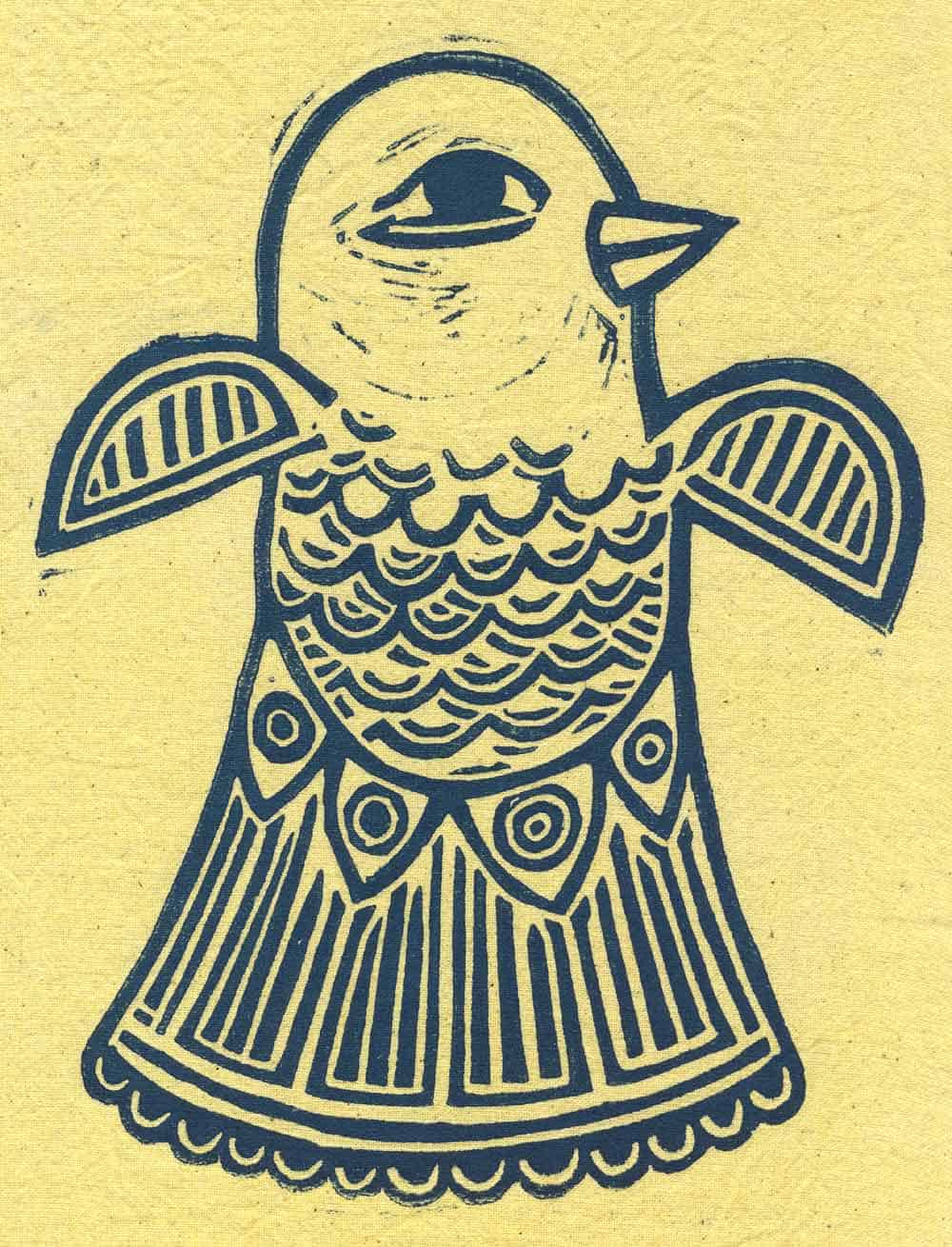
I made 100 of these prints while I was an Artist-in-Residence at Chhaap Foundation for Printmaking Trust.
I dyed them in turmeric,
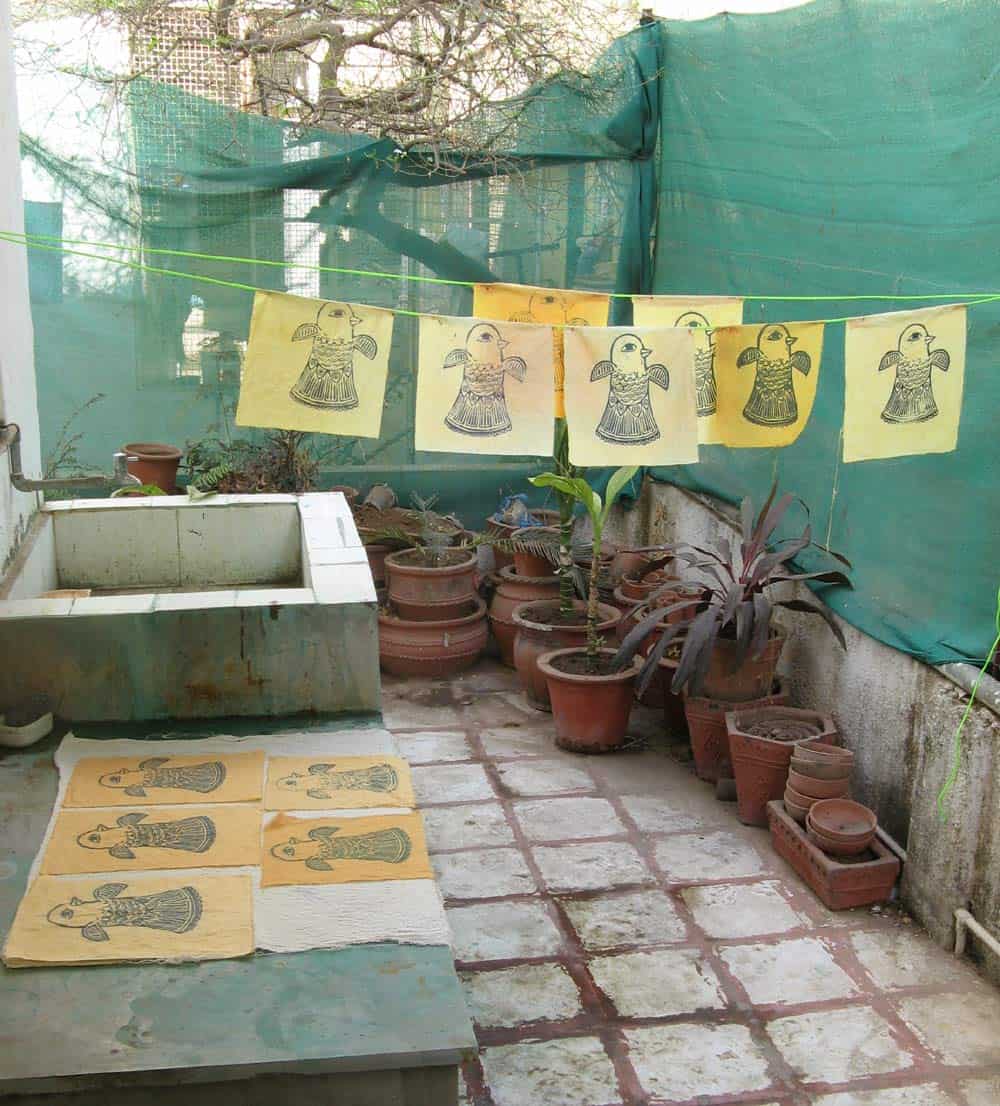
then had them stuffed and sewn up.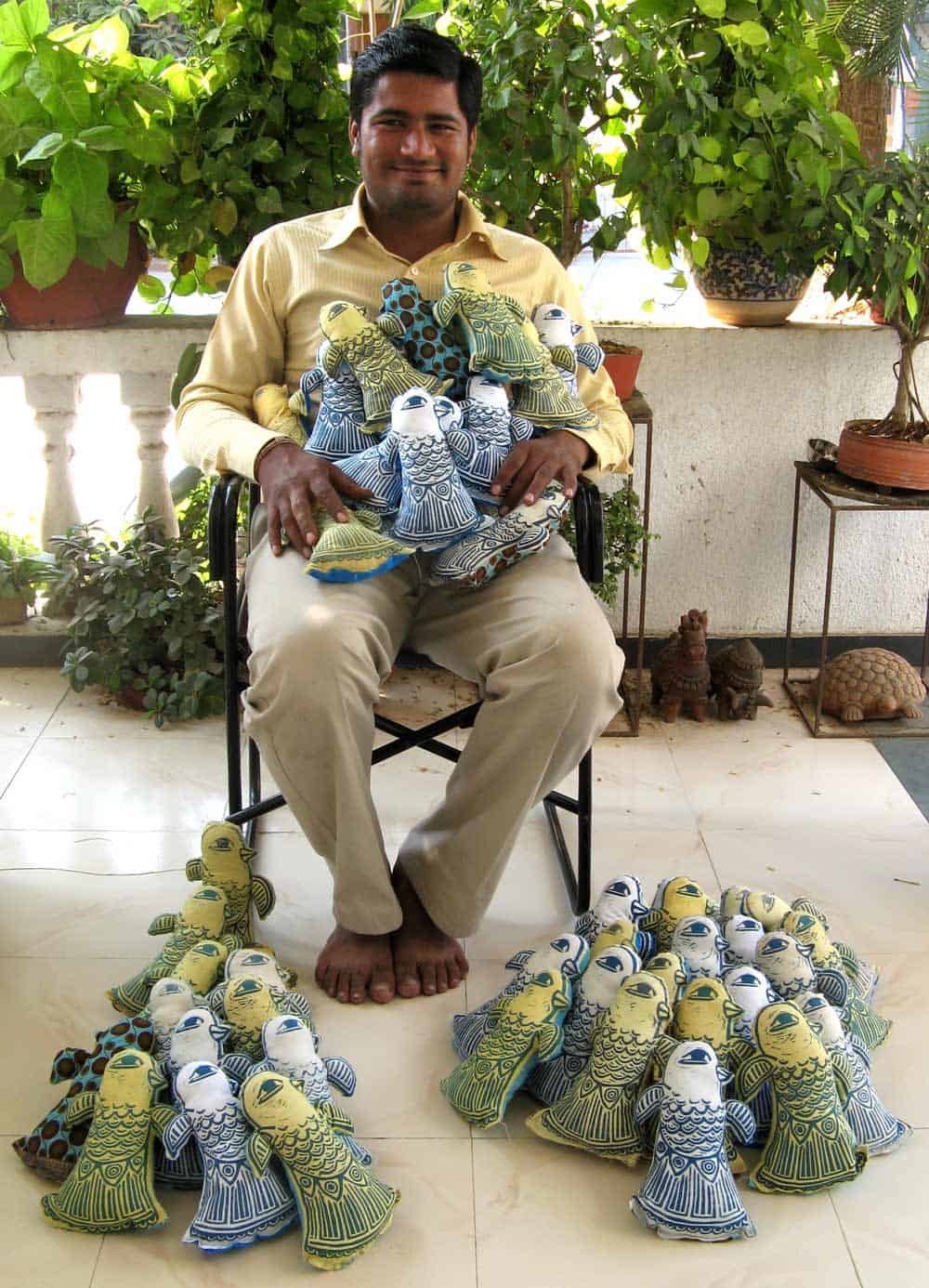
Meanwhile, through an introduction by the organization Koshish Milap, I was conducting art workshops at a nearby school.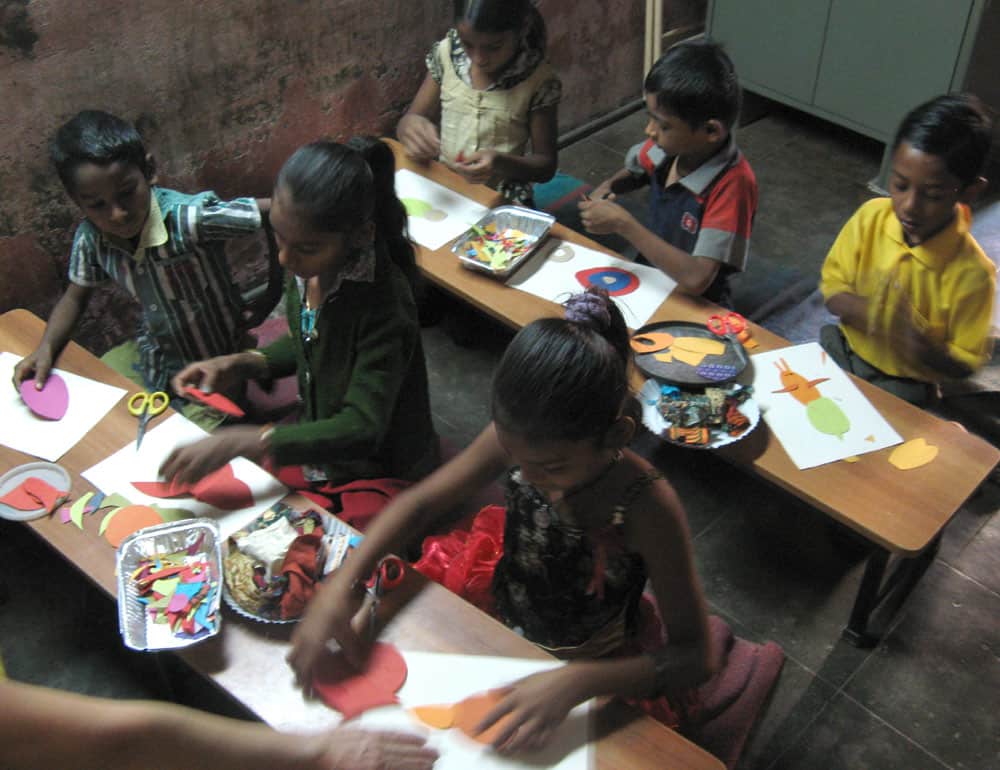
This extraordinary little one-room school was also a clinic in the evening.
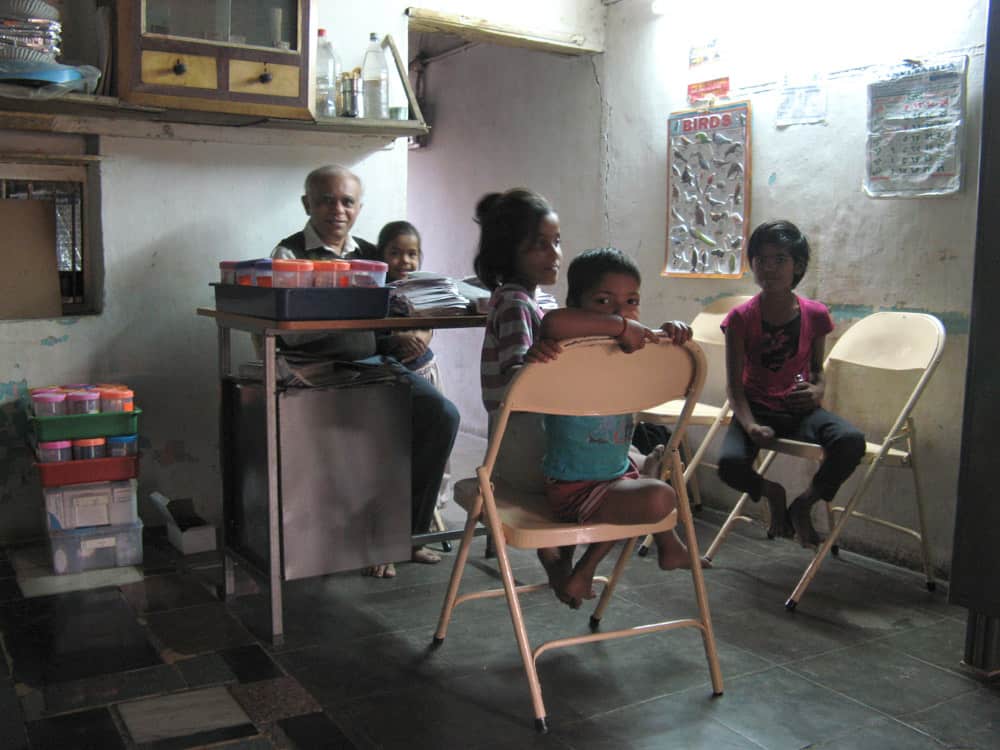
The mission of Koshish Milap, headed by Drs. Kishor and Varsha Mistry, is to educate and provide healthcare to the ‘slum’ community of Muj Mahuda.
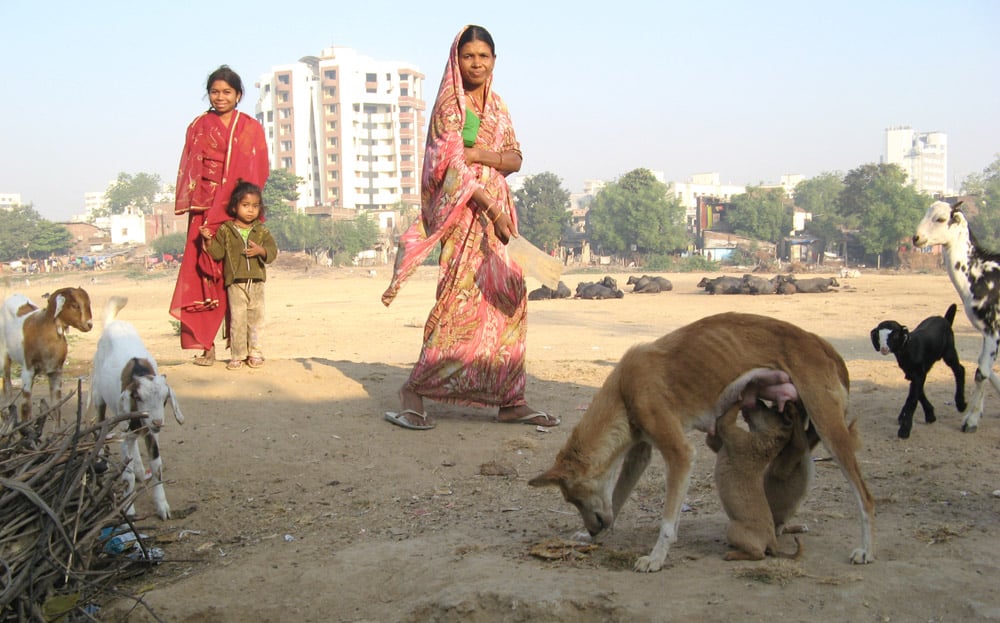
There are over 750 families in Muj Mahuda that use these medical and educational services.
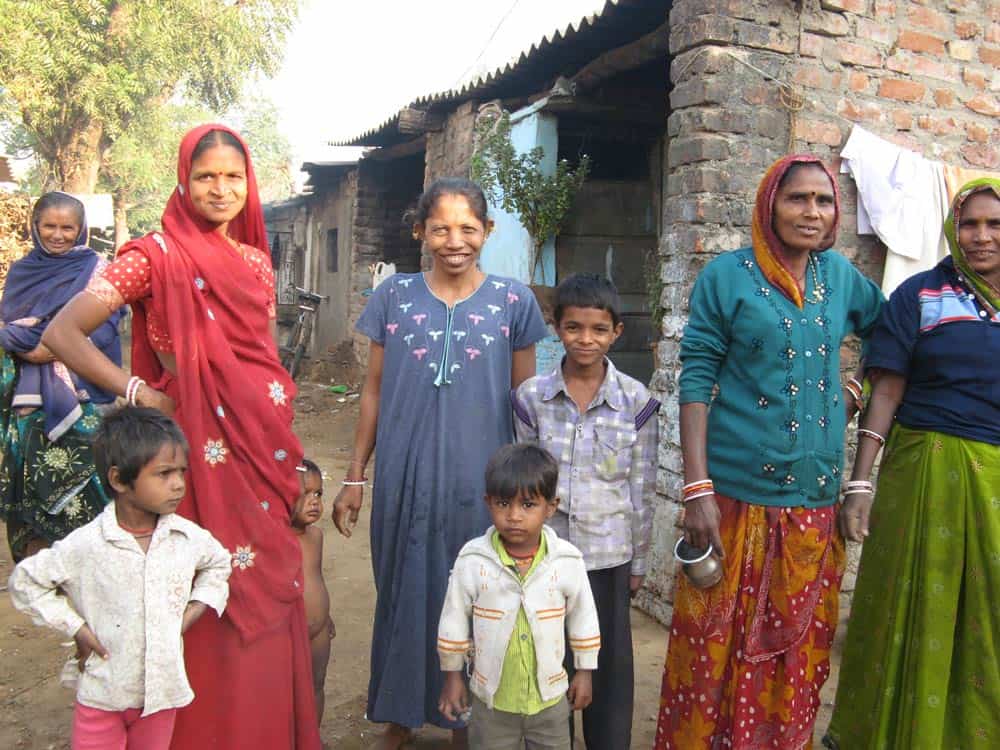
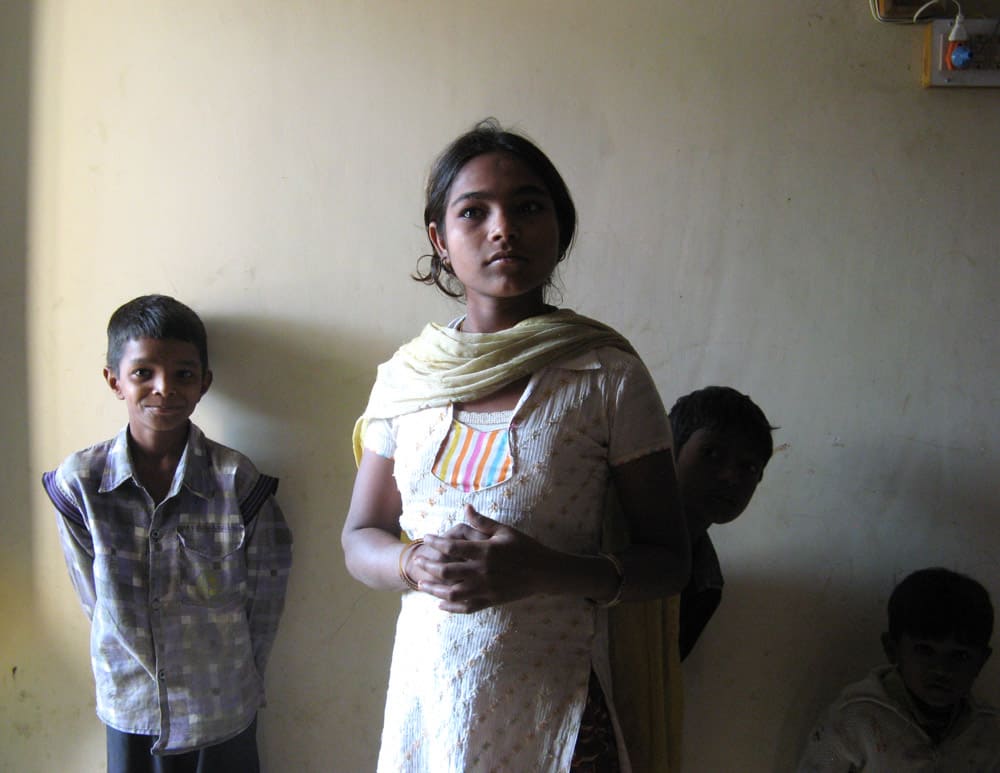
The children loved making collages.
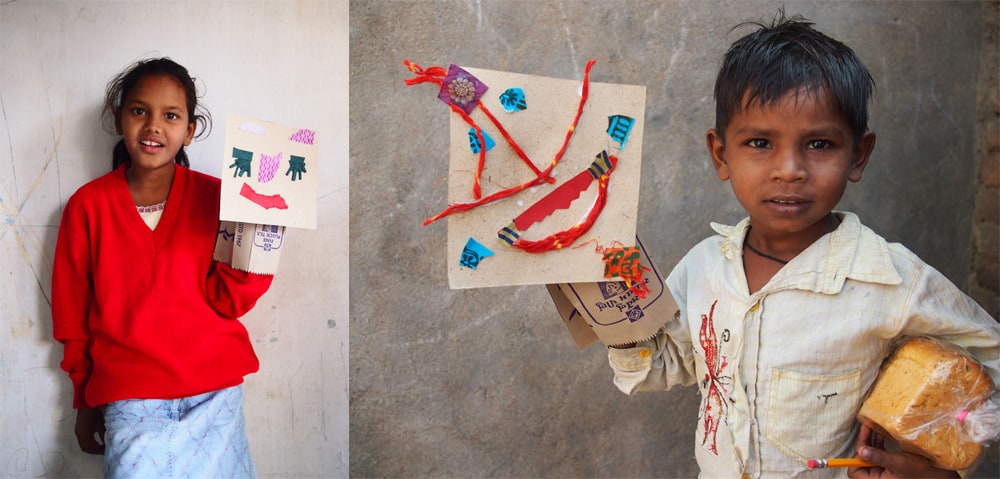
The word spread about their talent and enthusiasm, and the Times of India wrote an article about their good work!
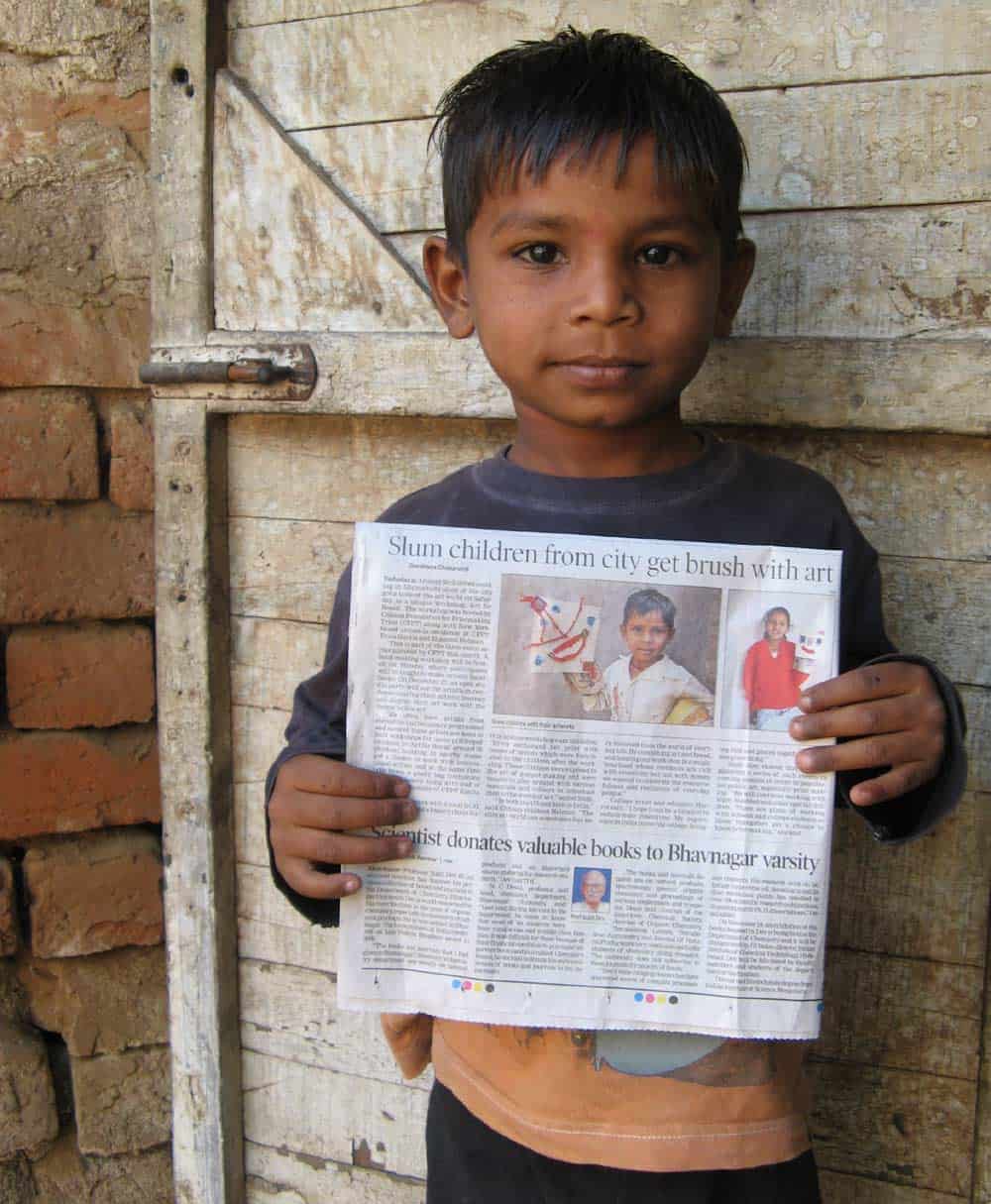
I thought we could collaborate on the subject of chakalis…
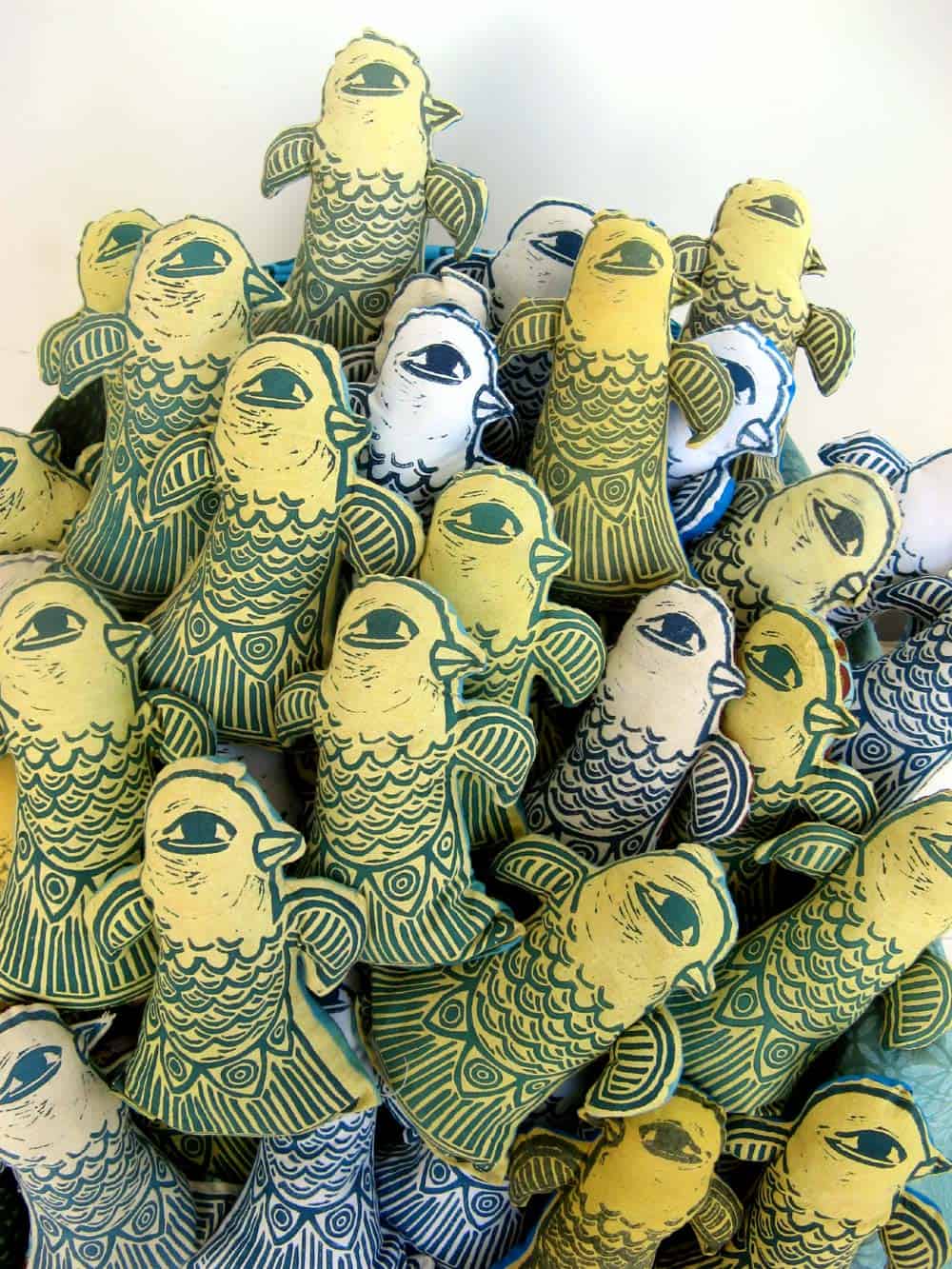
They made some excellent collage birds,
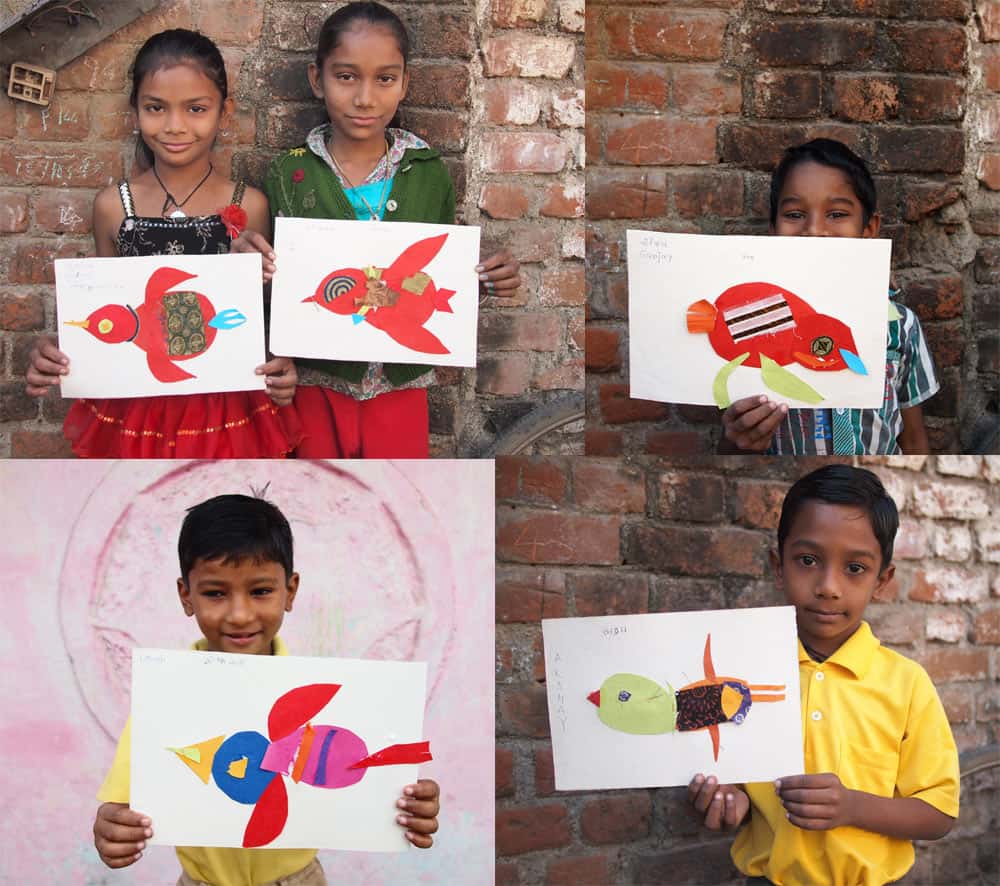
I mean, really excellent…
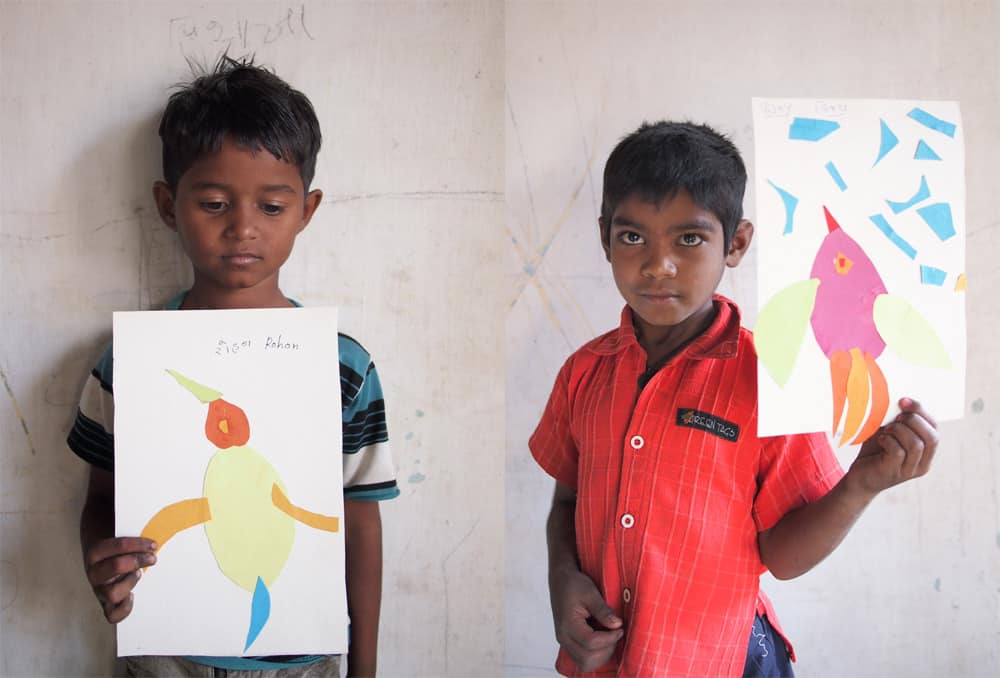
and loaned them to me for an exhibit at Chhaap.
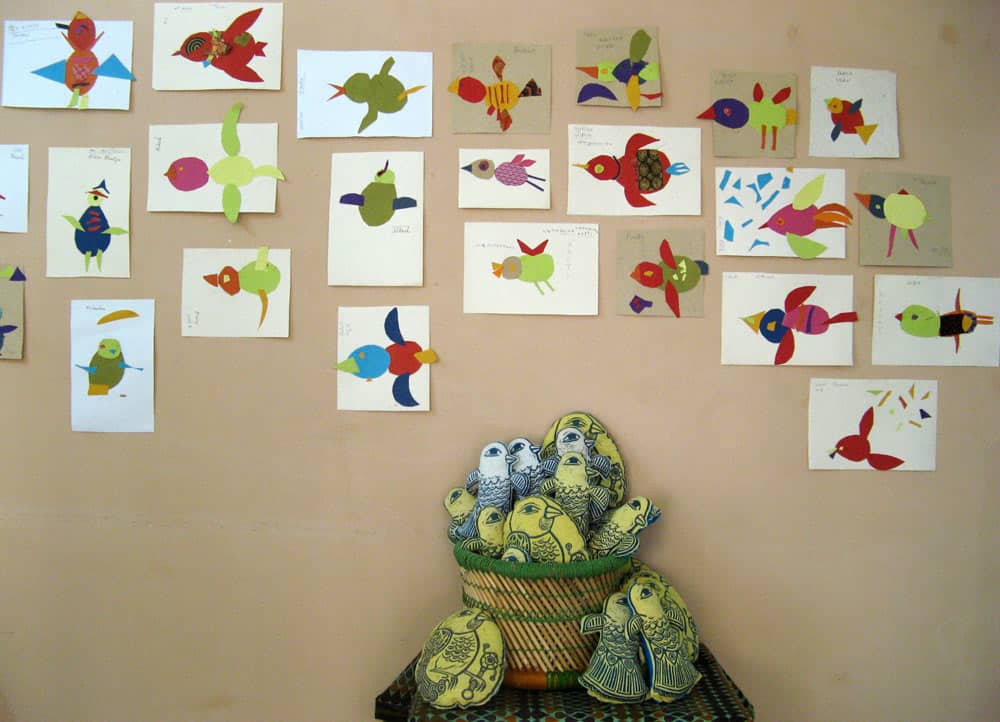
In exchange, all 50 students received one Chakali.
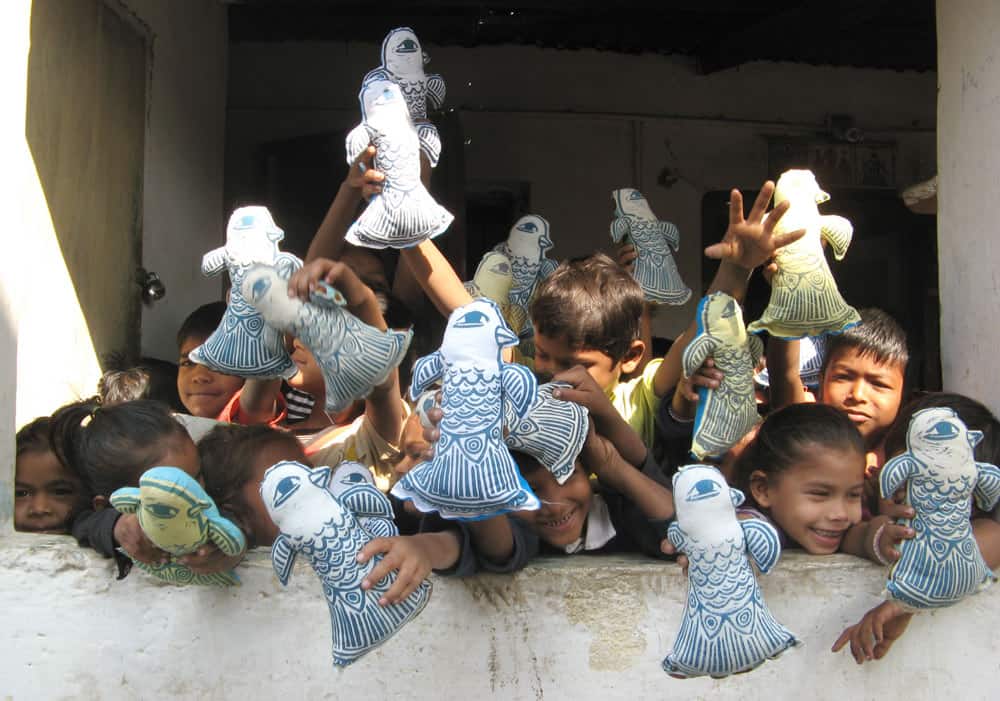
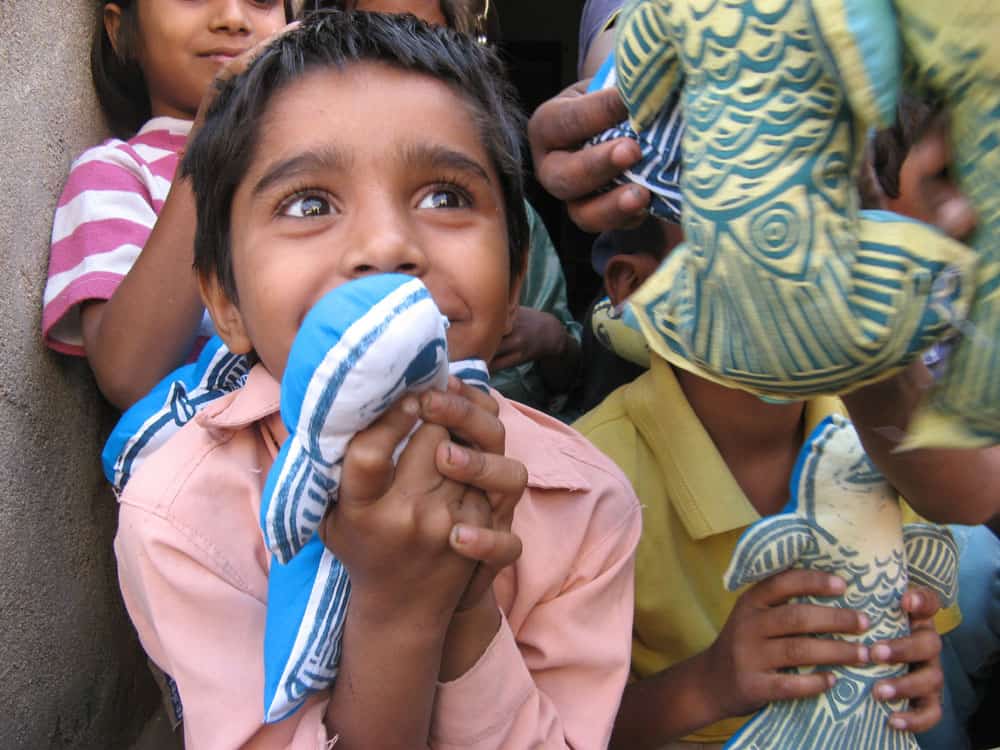
You can have one, too!
photo credits: Shannon Holman
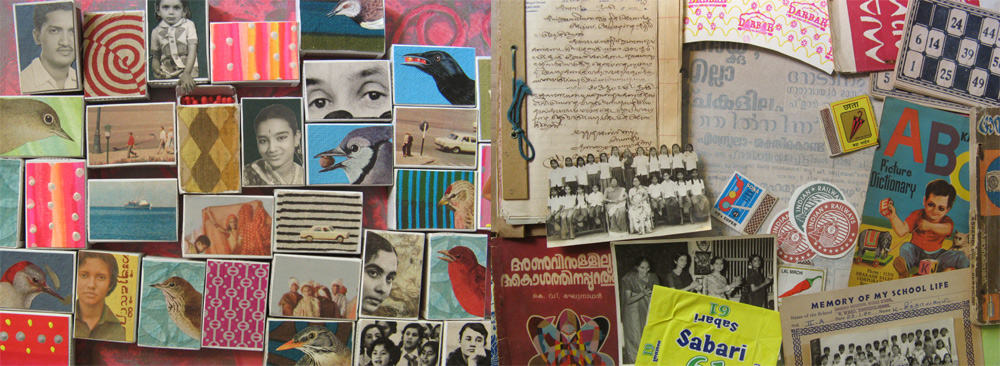
Many folks ask where I find my materials to make collages.
Here are some scraps, sources and experiences from my last trip to India.
While an Artist-In-residence at Chhaap Foundation for Printmaking Trust in Baroda, Gujarat, I used a batter of coffee grounds and tea leaves, bindi powder, turmeric, and Celluclay (a dried paper pulp) to experiment with paper sculpture. The texture was made with a fork.
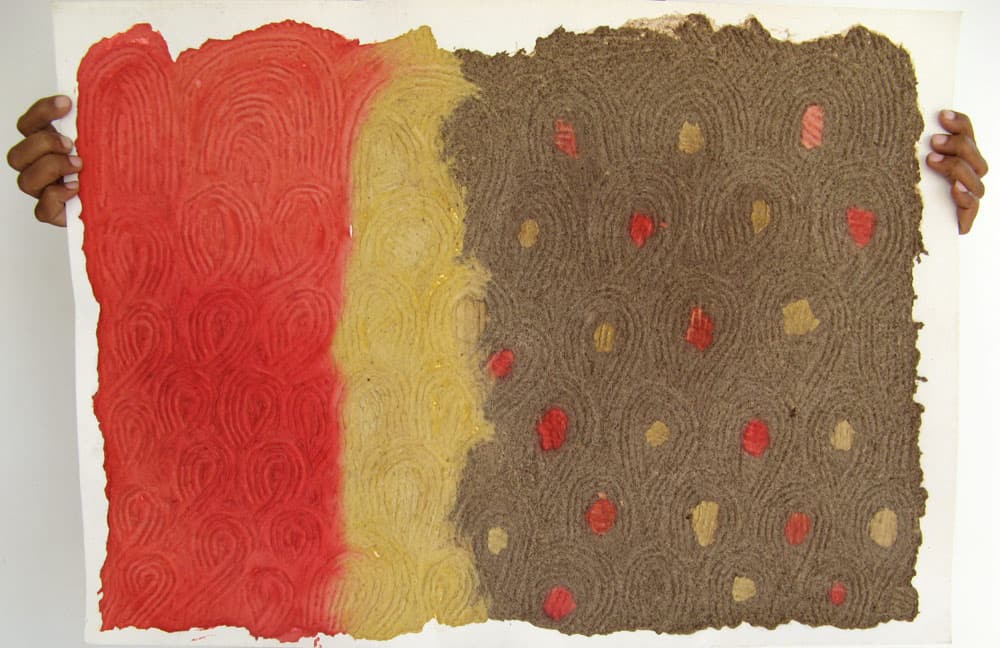
Some of this paper I’ve paired with old portraits:
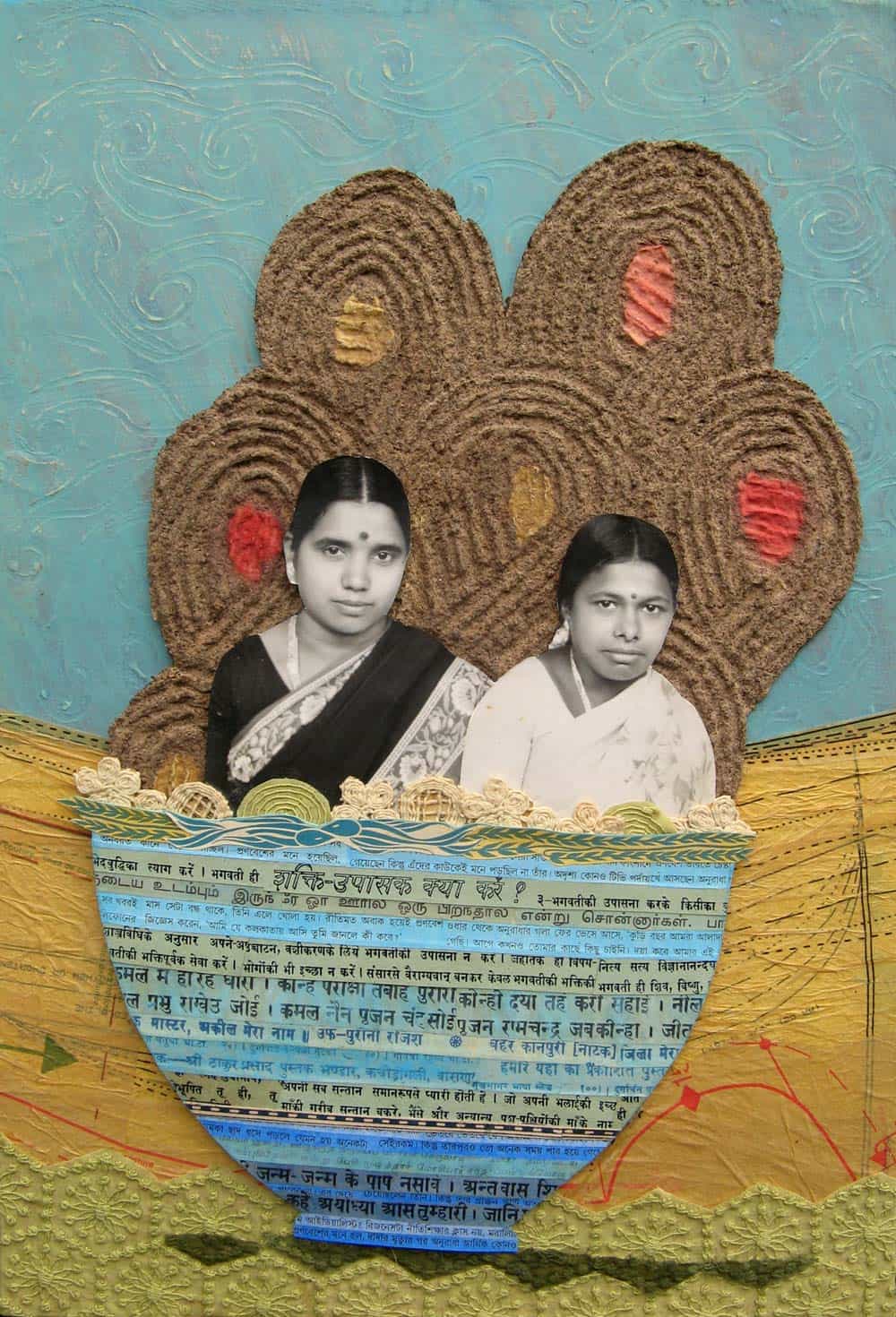
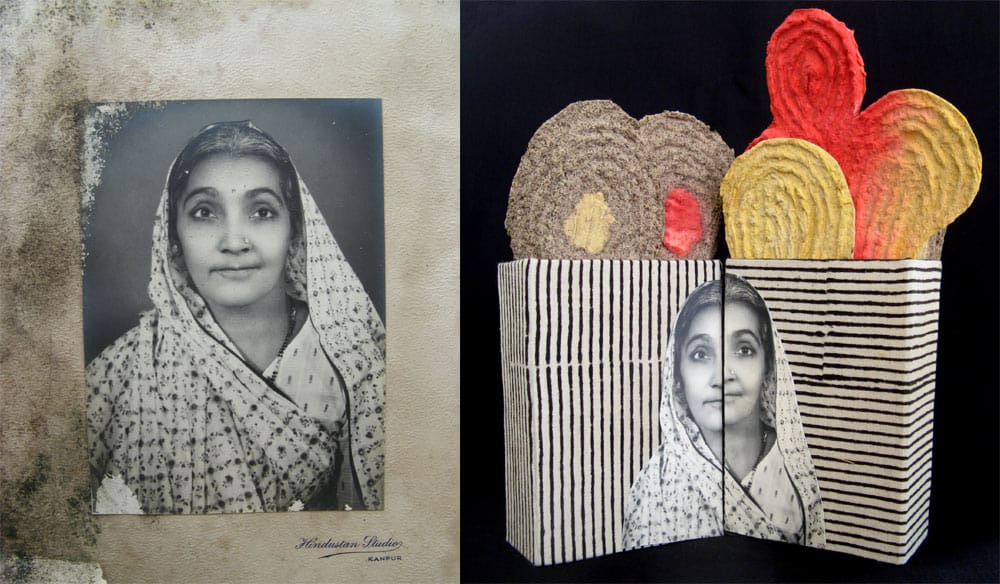
These were found at the exquisite ‘Friday Market’ on the outskirts of Baroda.
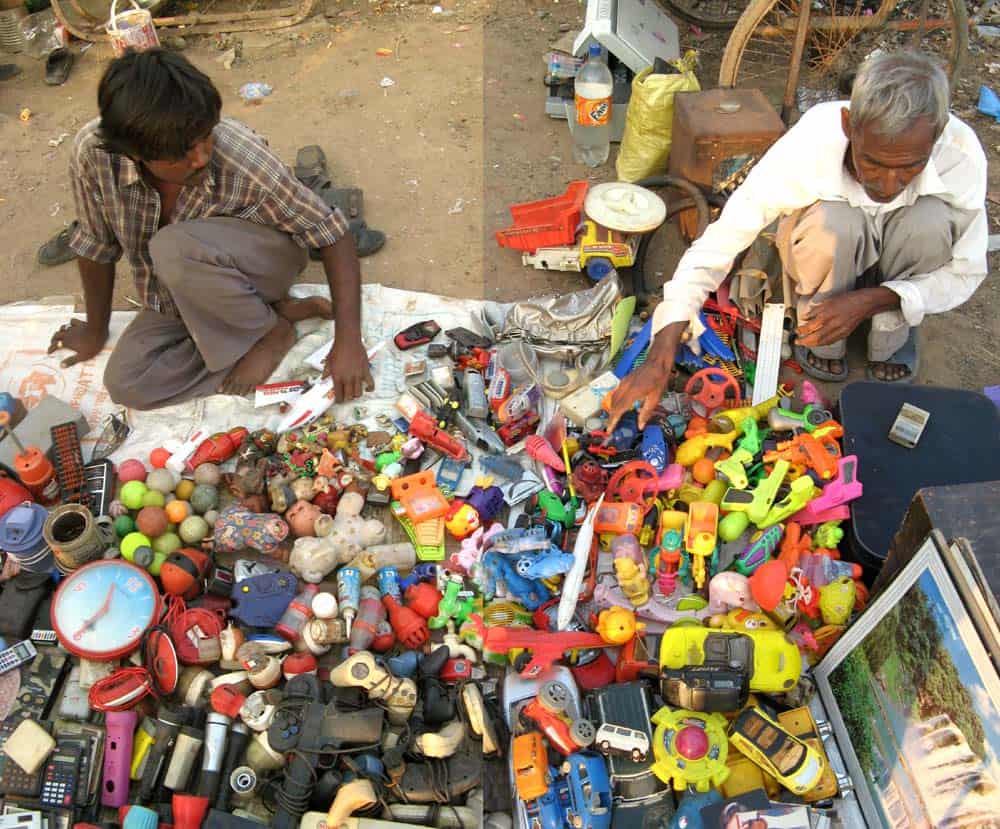
This is a sprawling maze of live goats, tin charms, chai carts, torn saris, wooden game pieces, broken toys and, most lovely for me, old photographs.
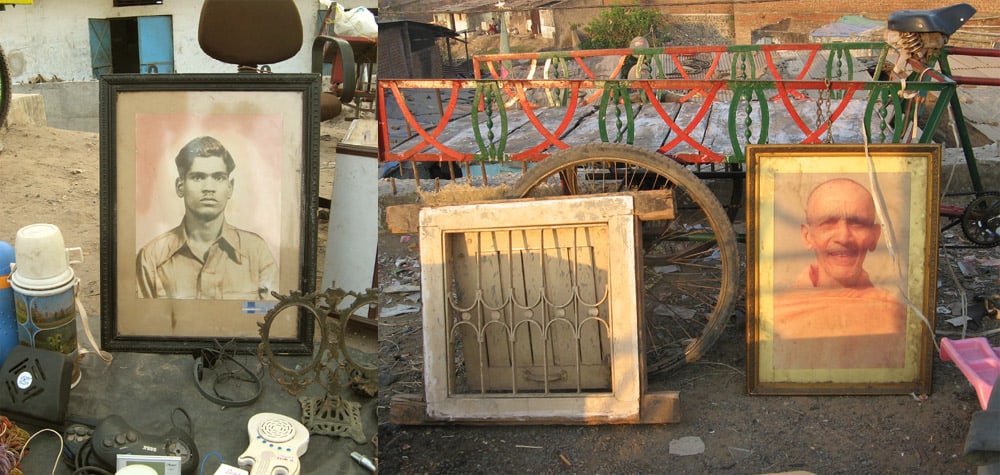
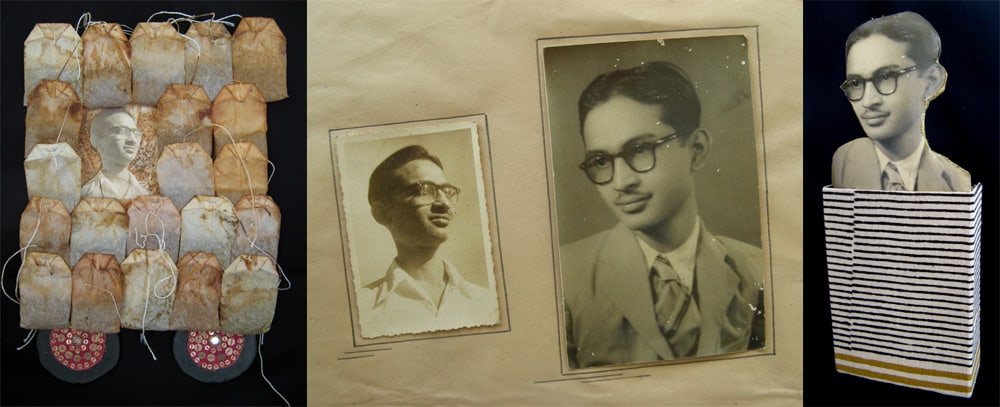
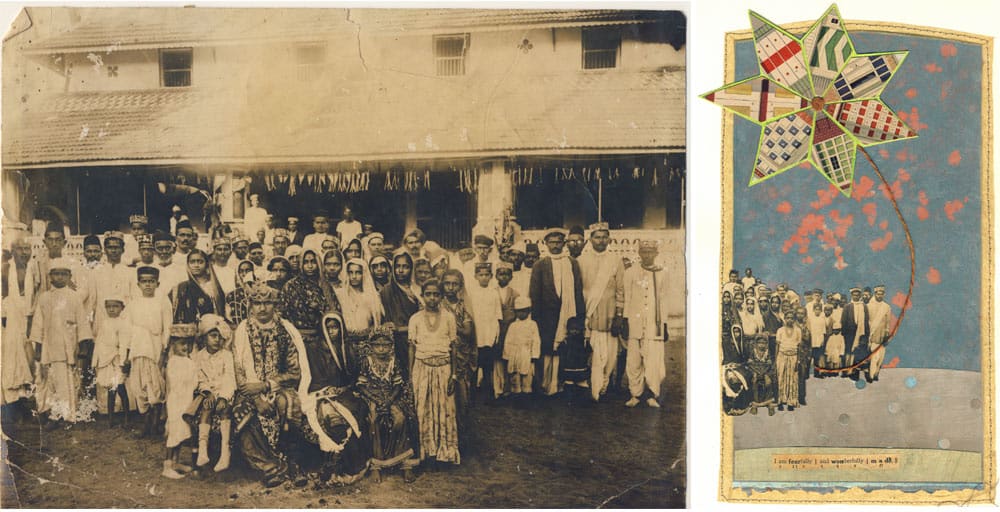
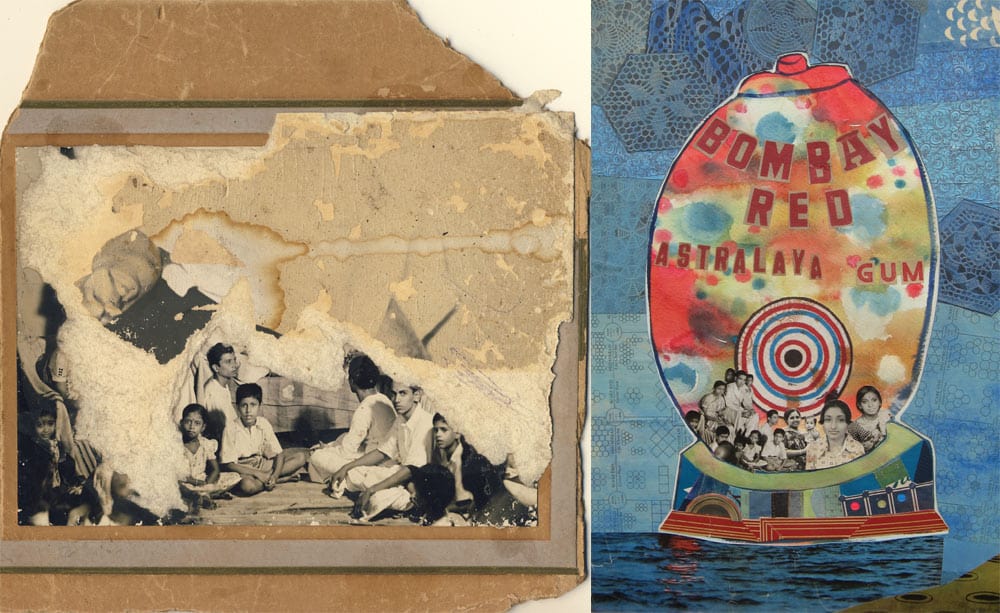
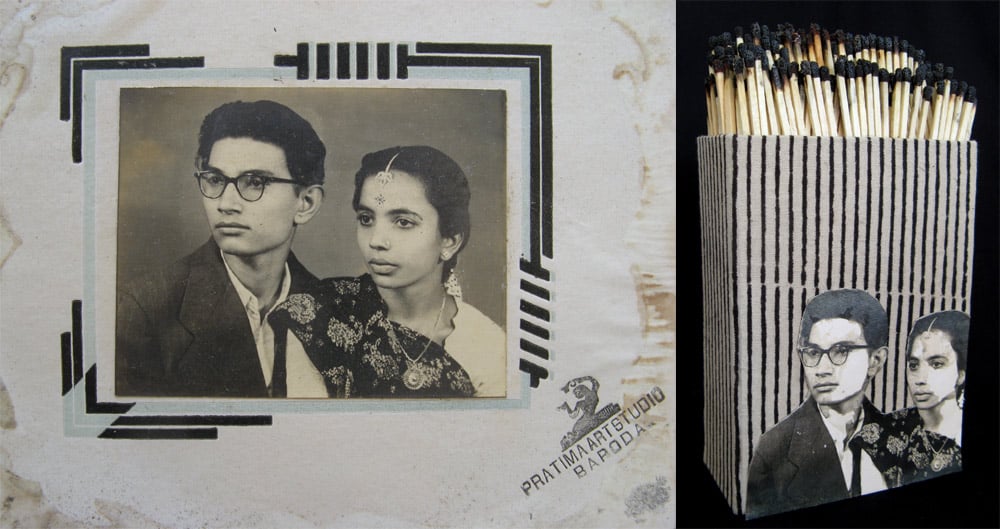
Scavenging for mid-century photographic ephemera outside of The States is quite challenging, our Kodachrome generation being unparalleled, so this particular market was really a gem. (On a side note however, it seems India’s snapshot culture of today is certainly catching up).
The upcycling at Friday Market also deserves some attention. Here are some wonderful hand-stitched oil-can cozies:
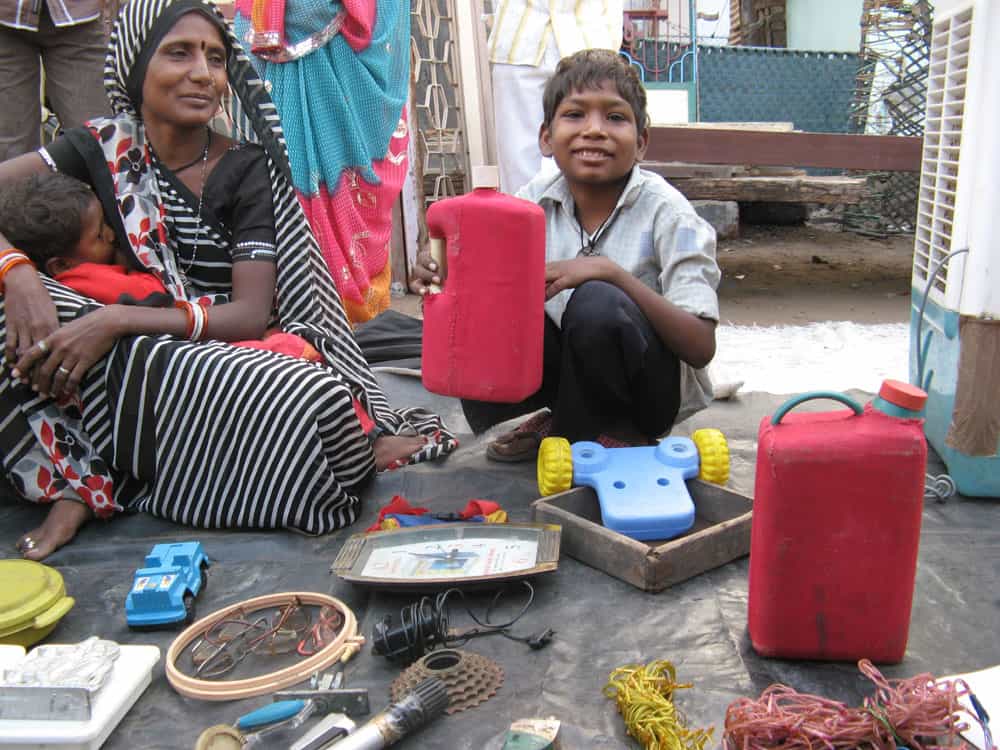
I experimented with using some of the found objects as stamps, such as these keys:

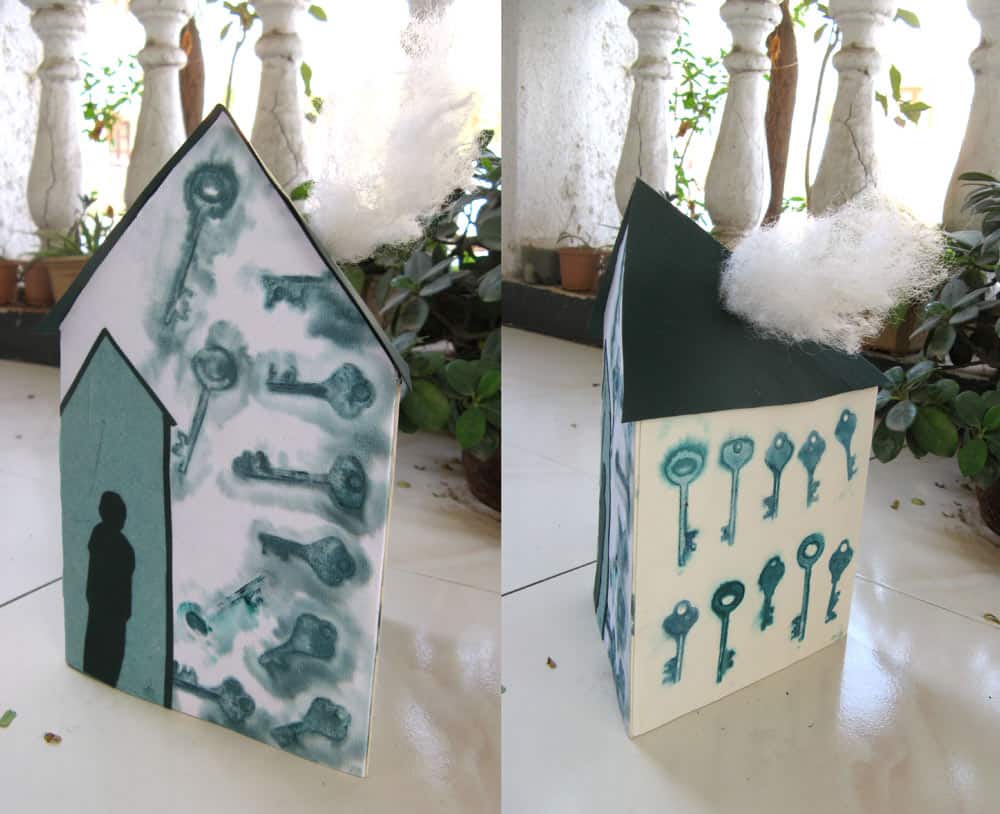
Moving South, in Fort Cochi, Kerala, I picked out some paper goods at Junk Junction (Kumbarramukku, if memory serves).. Looking through newspapers, game cards, old books and ledgers, this passerby wanted to document a dusty picture of a famous 70’s movie star:
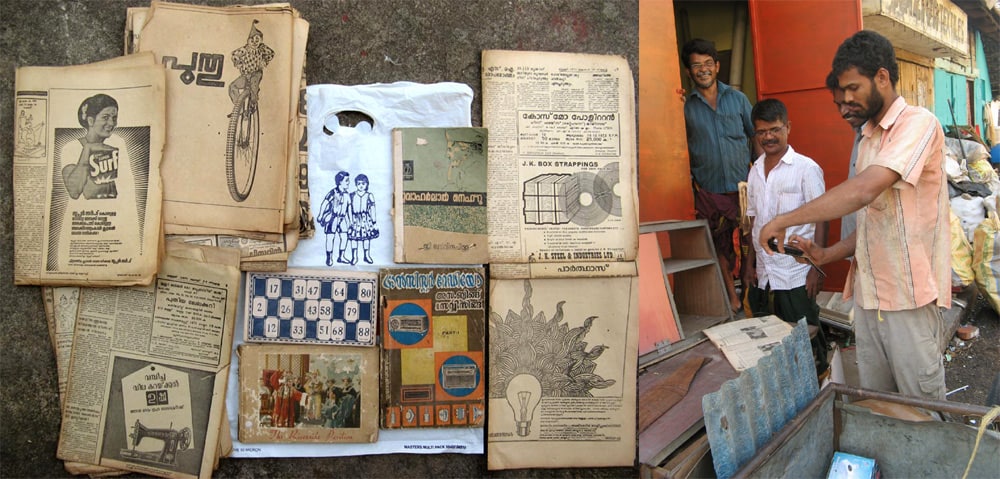
The language there, Malayalam, has a beautiful alphabet, and I was quite inspired by it.
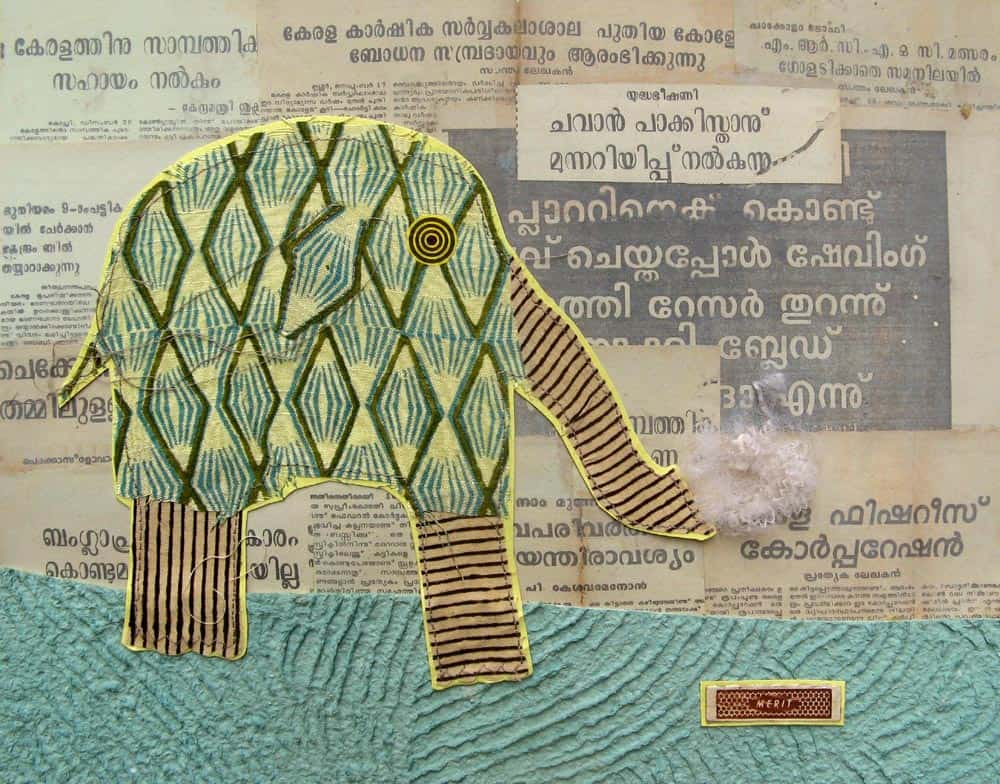
I was in India for a number of teaching projects, as well as dumpster diving, and the scraps came in handy for those, too. In this bookmaking workshop at Chhaap, students rummaged through a rag bag donated by a local fashion designer, Rupali. They used the pieces to customize their book covers.
It was an honor to have Jyoti Bhatt, one of India’s most renowned artists and photographer of Indian ephemeral art, among my students.
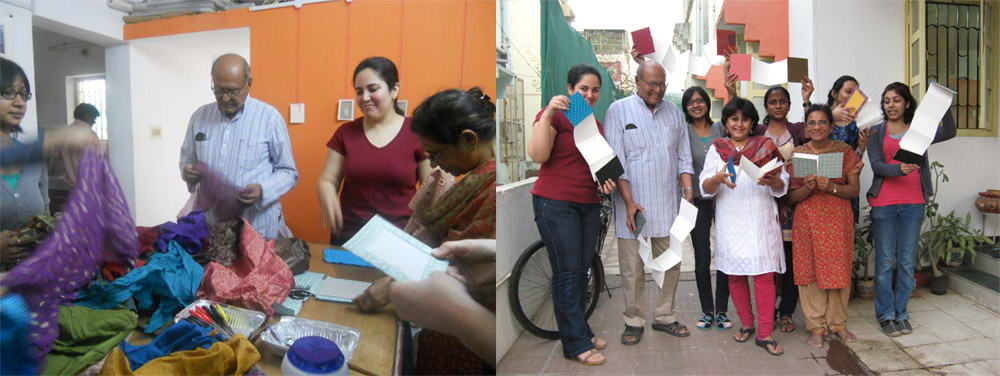
In a nearby school run by the organization Koshish Milap, I brought in scraps of handmade paper and fabric in all colors and shapes. It was a great ice-breaker for them to teach me the colors in Gujarati (new to me), and having a full-spectrum palette easily accessible helped them to jump right in and start collaging (new to them).
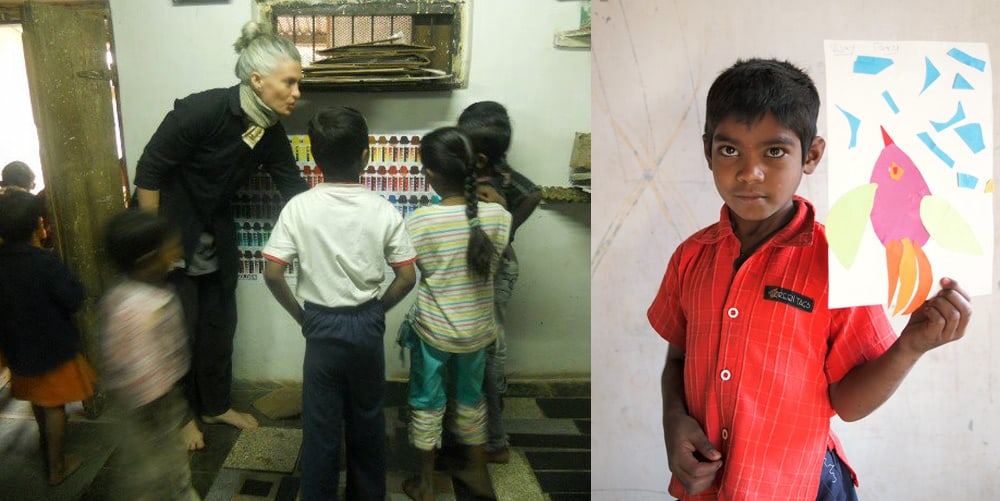
The kids were overjoyed and seemingly not intimidated at the process of building their own beautiful compositions out of scraps.
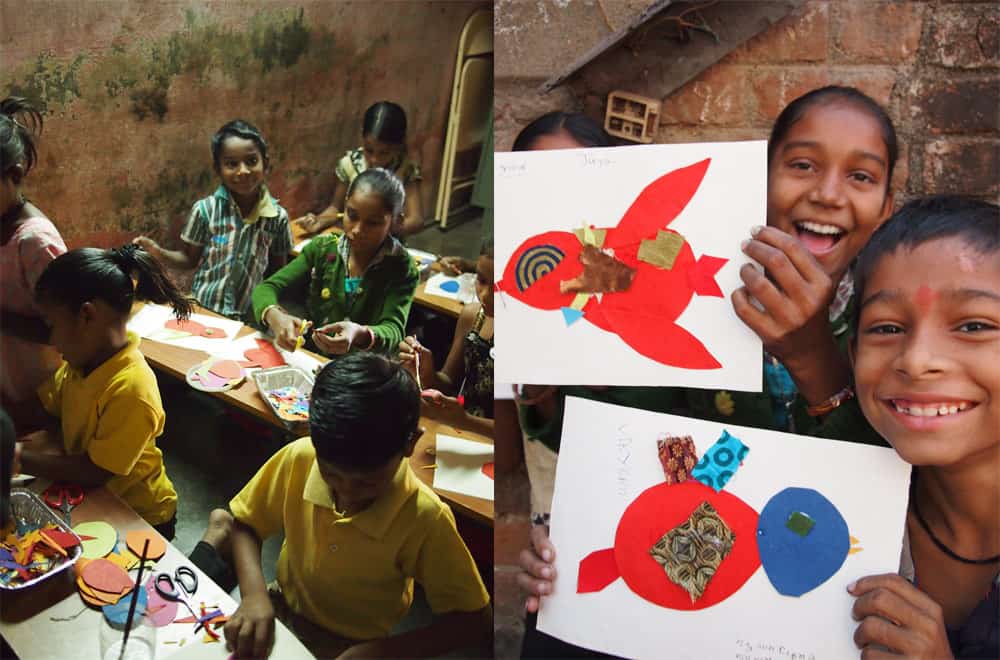
Thanks again, India, for all the inspiration and generosity. See you next time.
In January of 2012 I was welcomed to Buddha’s Smile School, in Sarnath, India, to host some art workshops with the kids. Here’s some of the fantastic results and a glimpse into daily life at the school…
The kids used handmade paper, fabric scraps, glue, and scissors to cut out letter forms and piece together images in our collage workshops.
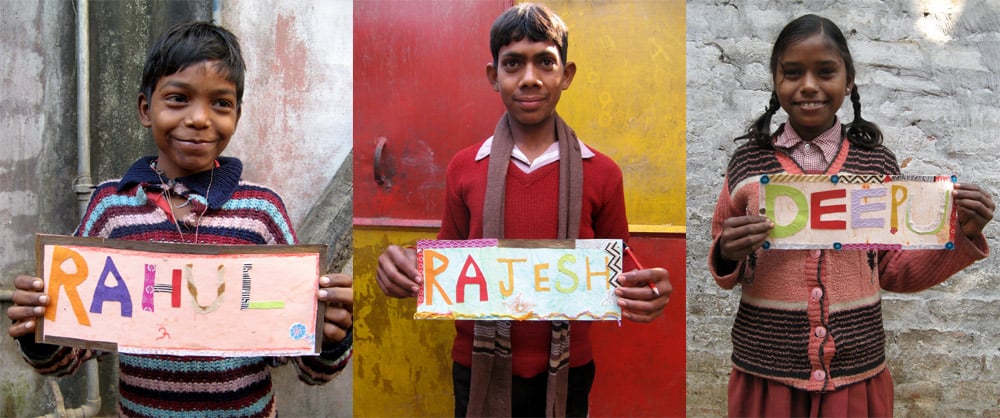
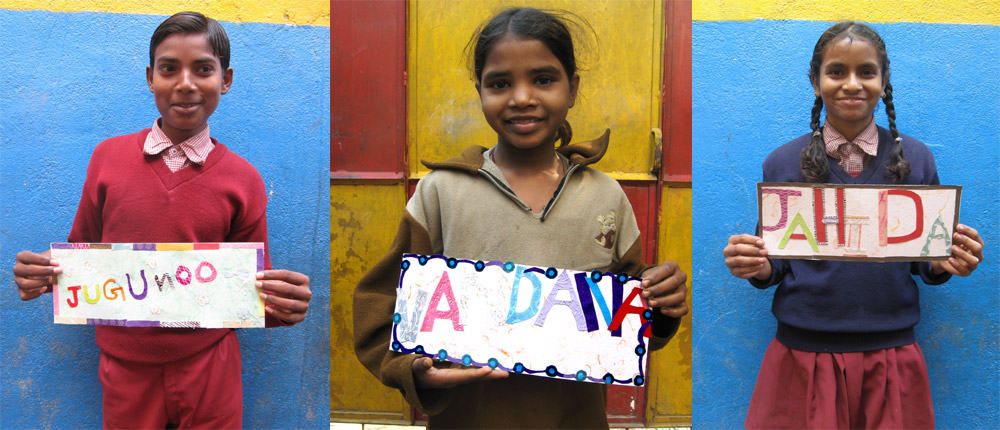
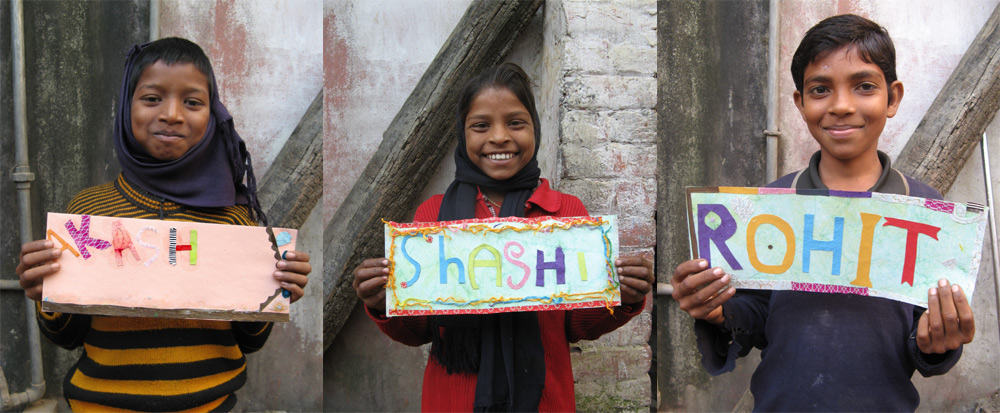
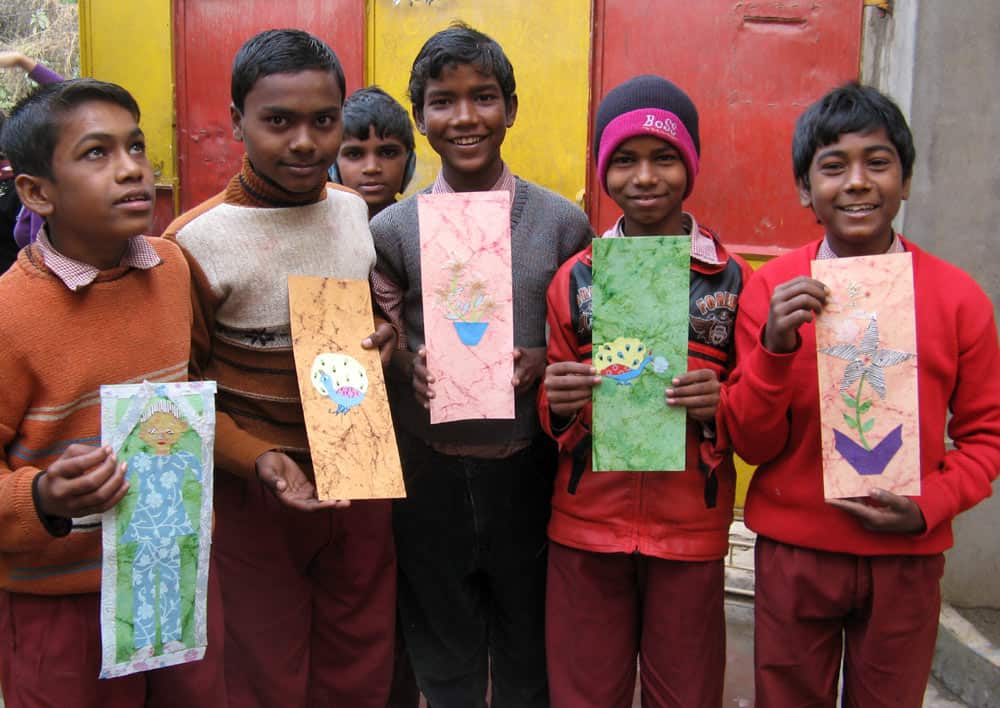
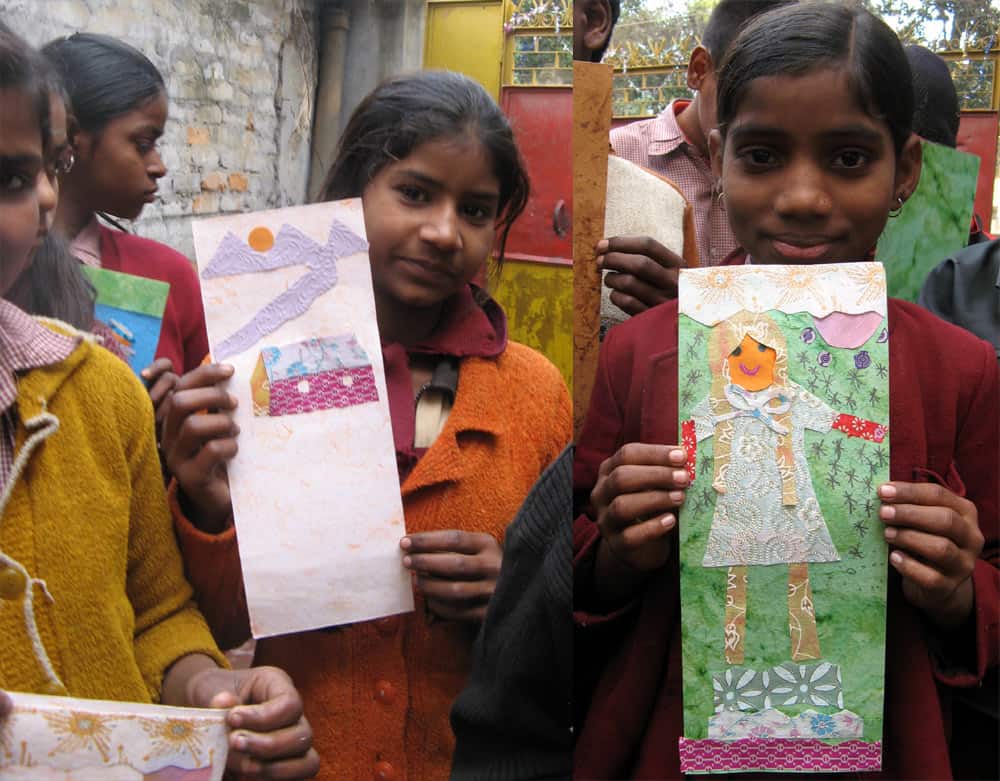
We cut out and decorated letters for a photo project to thank the donors of last year’s fundraiser. For all the donors names, please see The Thank You Project.
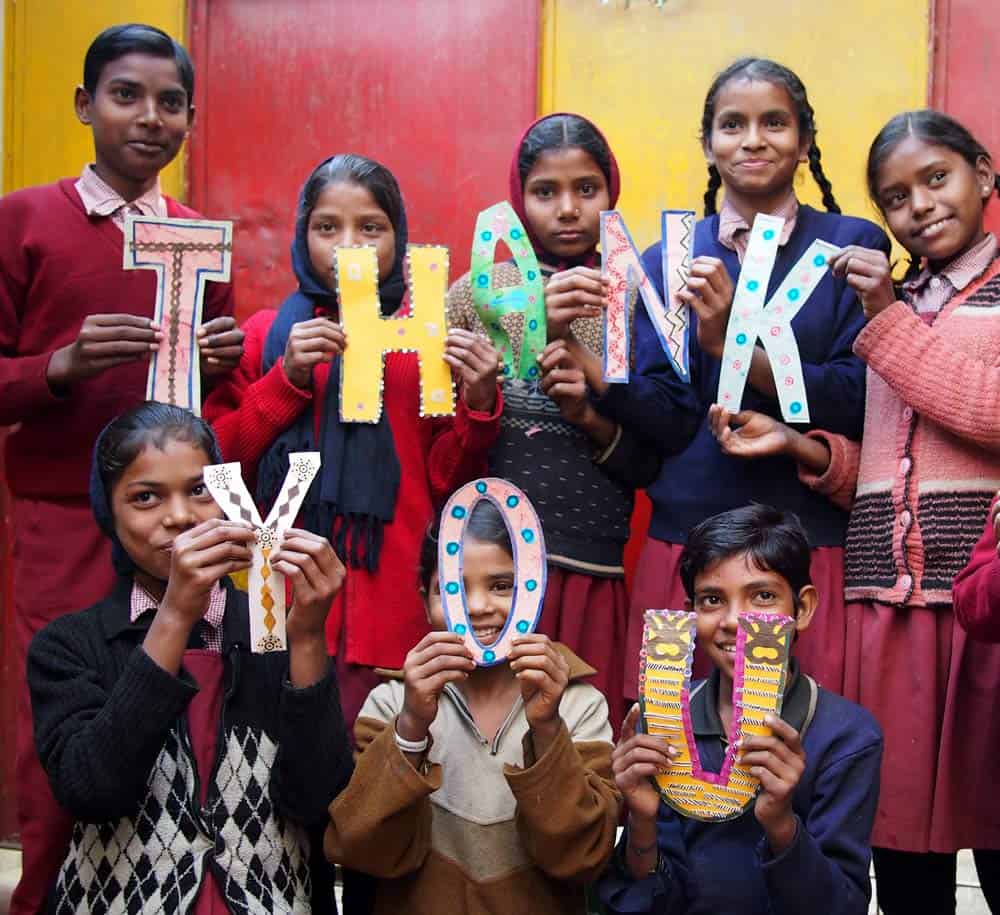
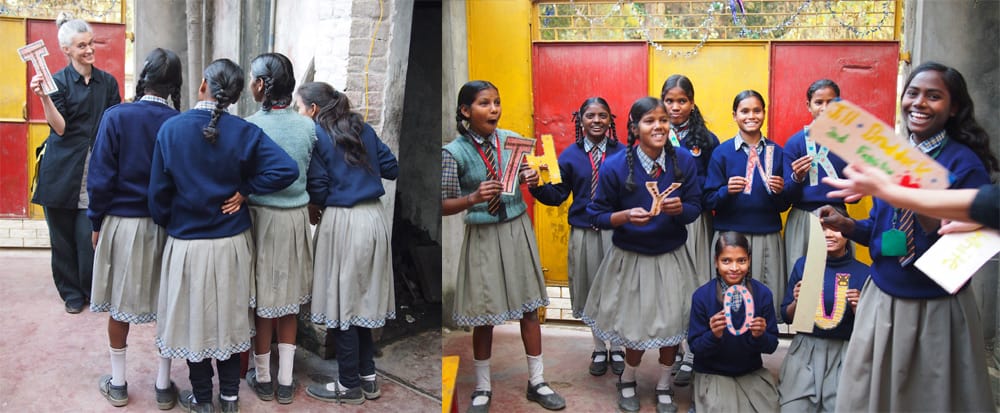
In the watercolor workshop, they learned about primary and secondary colors, how to mix colors, and how different ratios of water and pigment have different effects.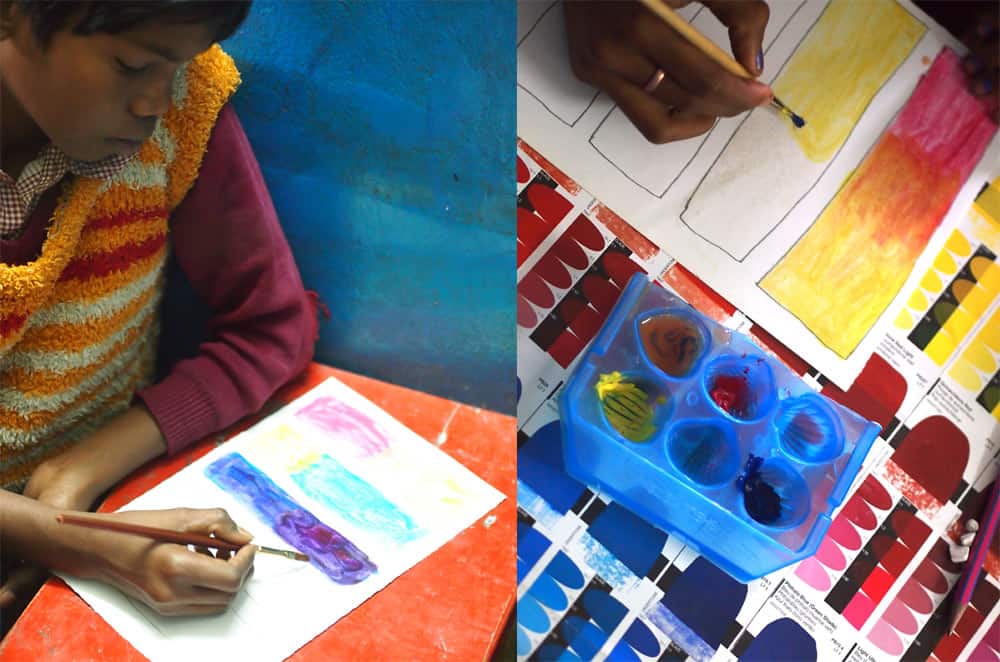
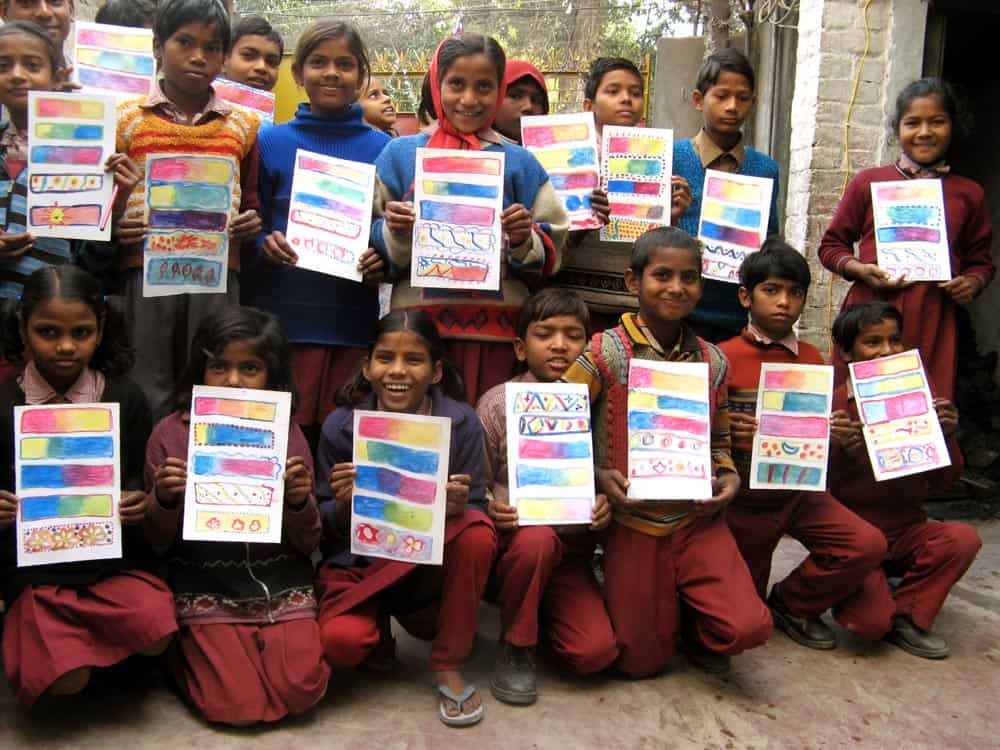
A drawing collaboration in an accordian book between myself and a talented young lady, Jahida…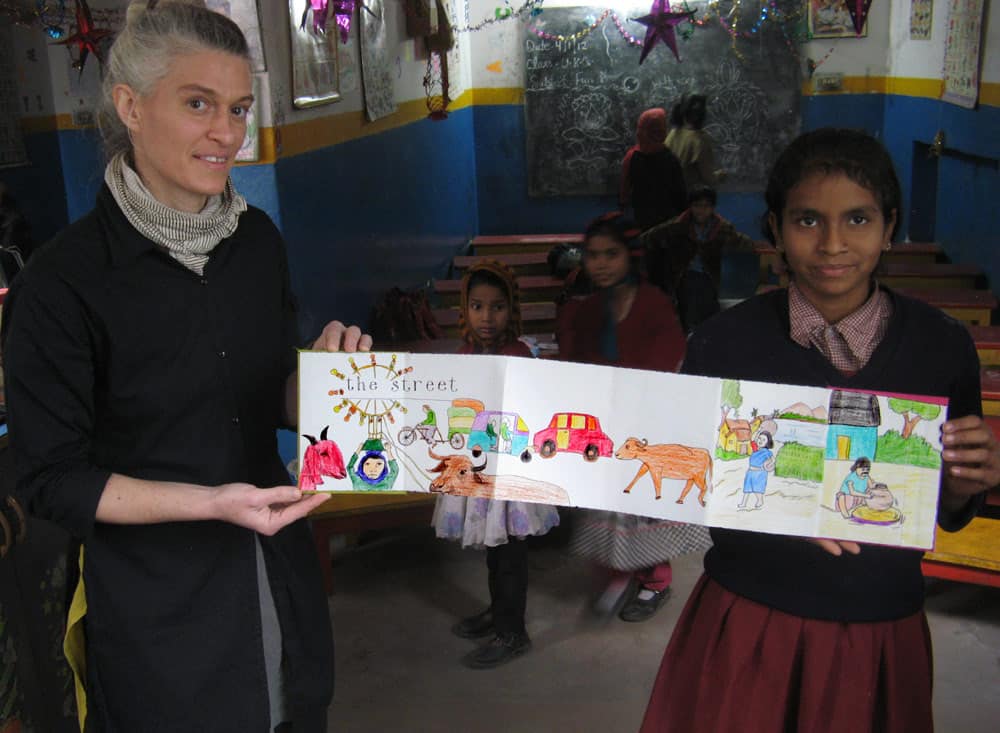
In the courtyard, we shared paints and pencils working on the Thank You Project (you can see their lovely new generator in the background).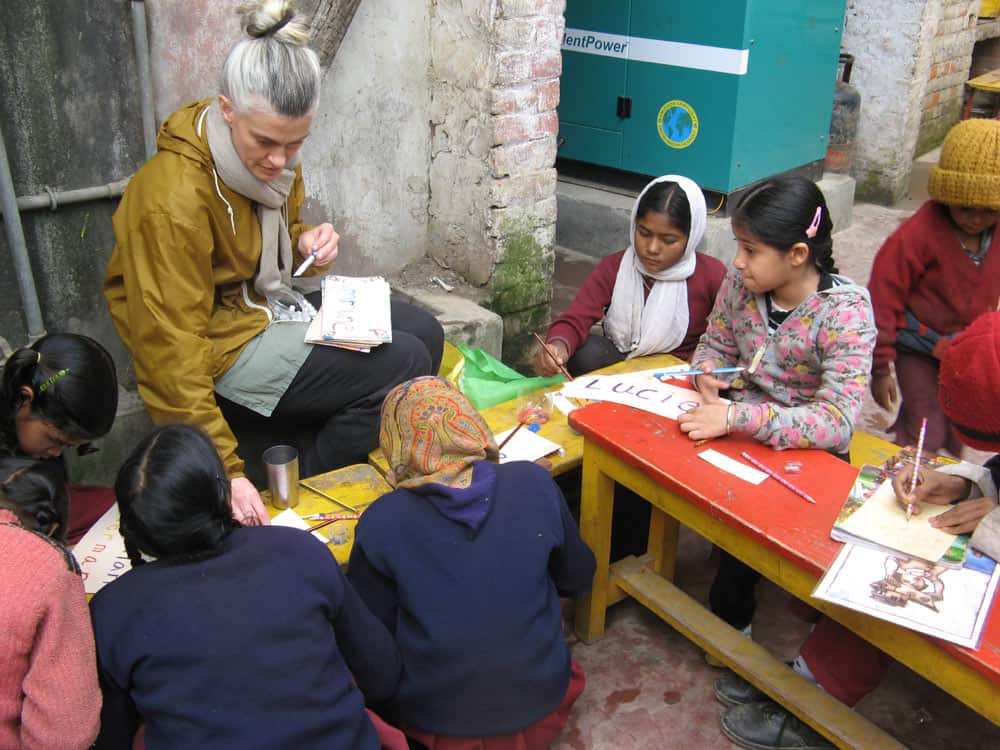
Everyday, after morning classes, lunch is made in their kitchen and served to the 221 students at their desks.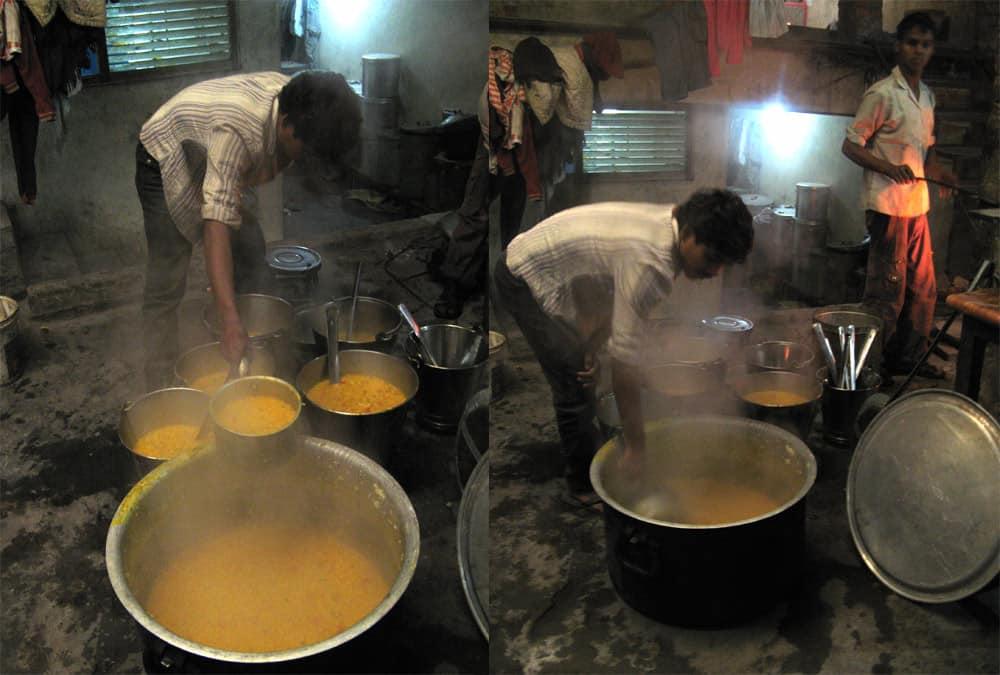
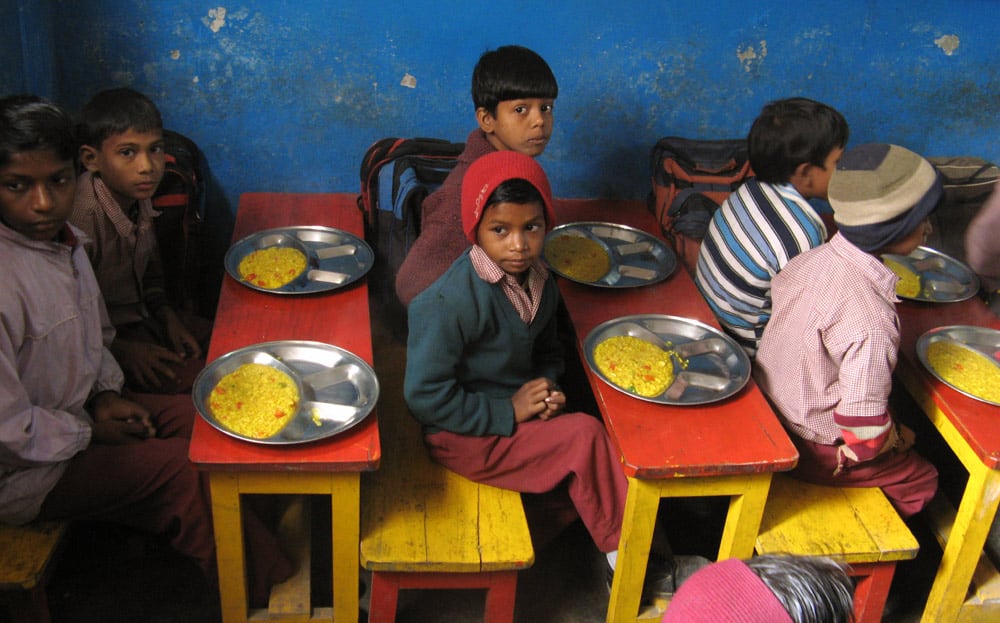
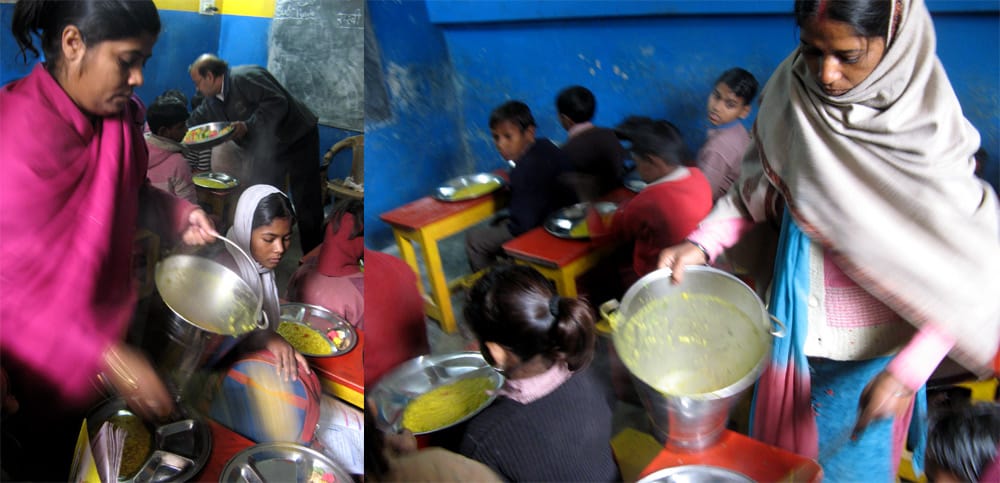
After lunch, there is a supervised time for the younger grades to learn how to wash their hands and brush their teeth.
An orderly line-up for time at the sink…
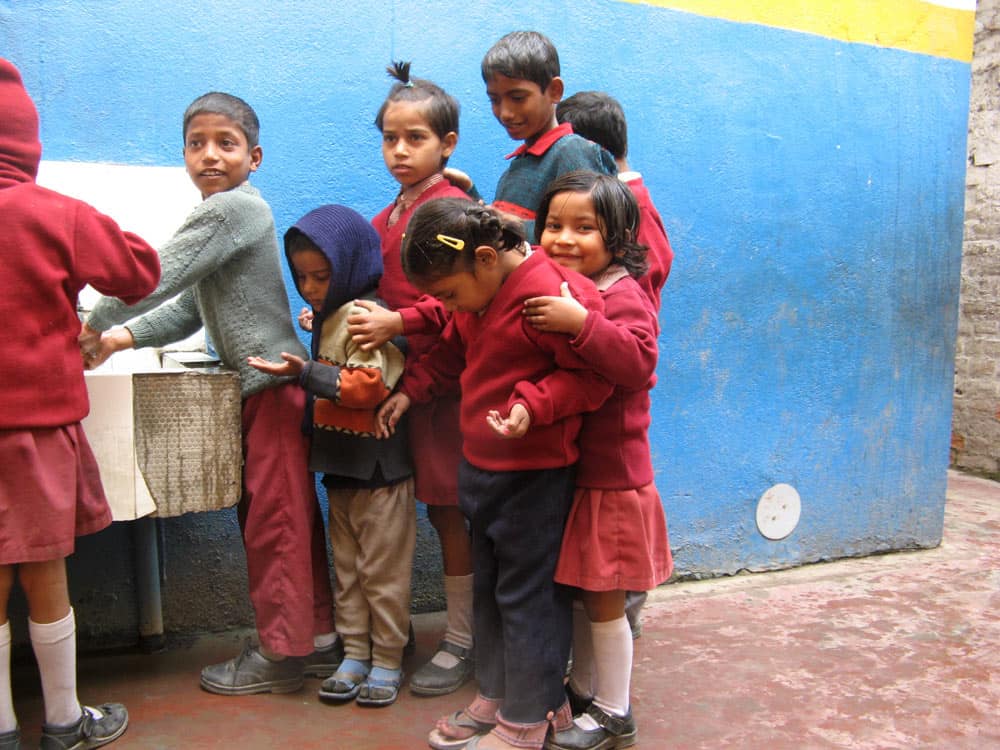
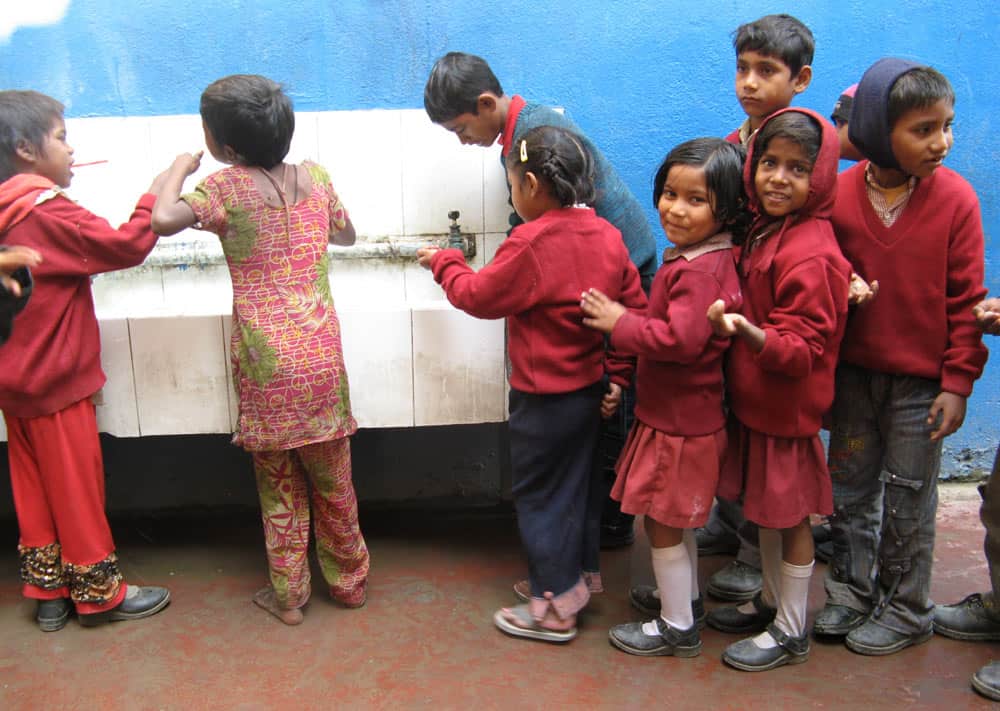
Toothbrushes are marked with every child’s name and distributed.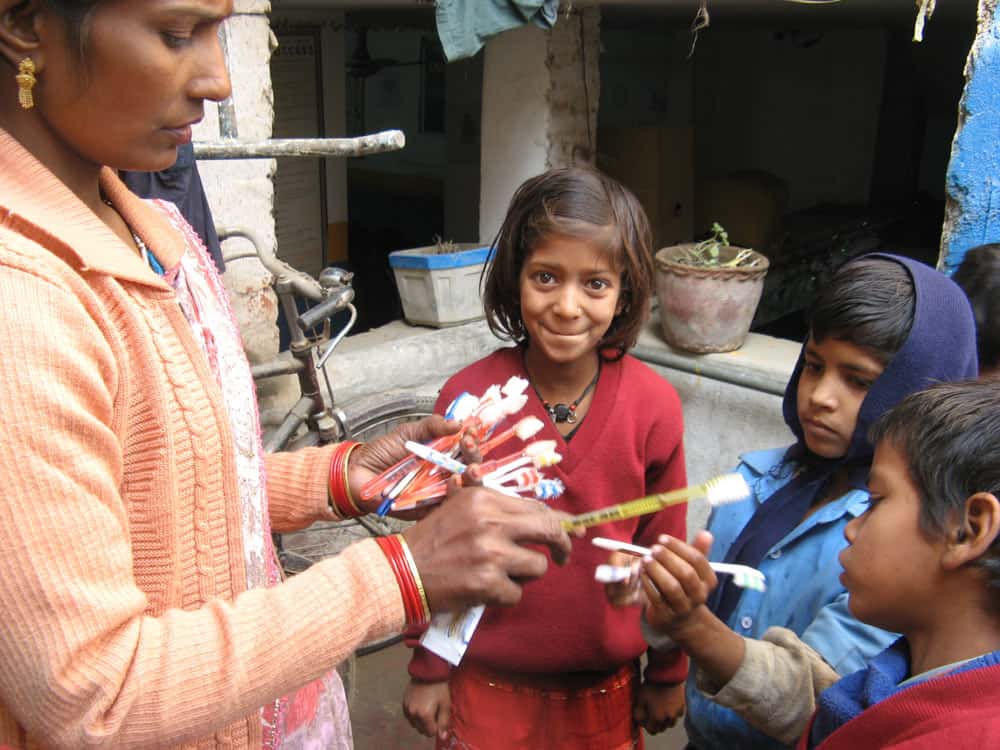
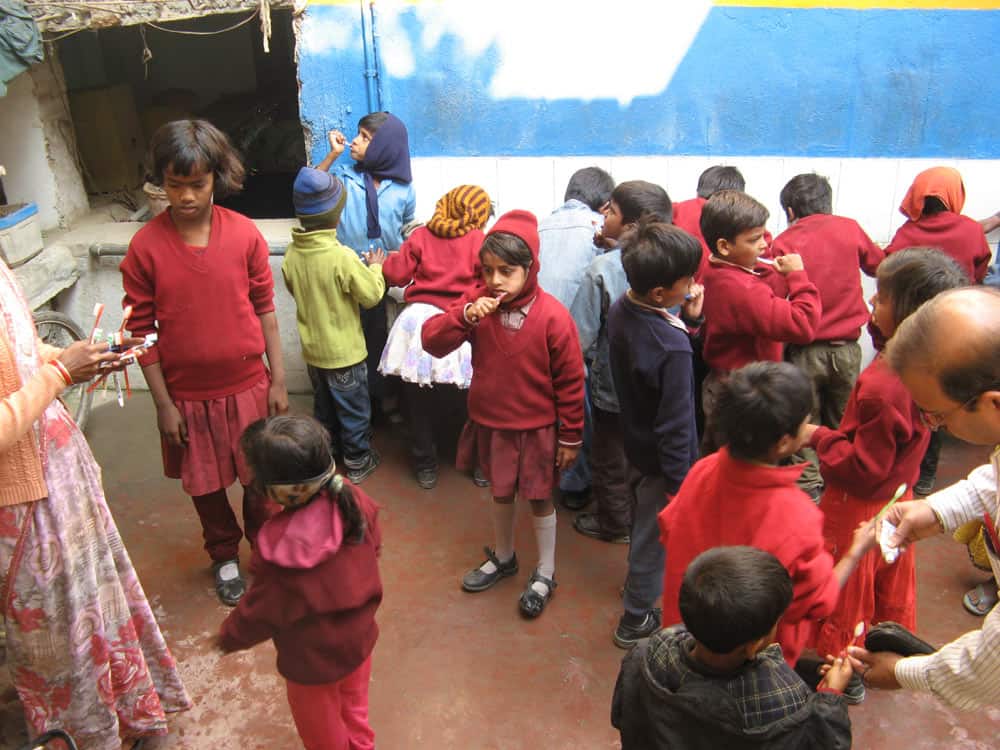
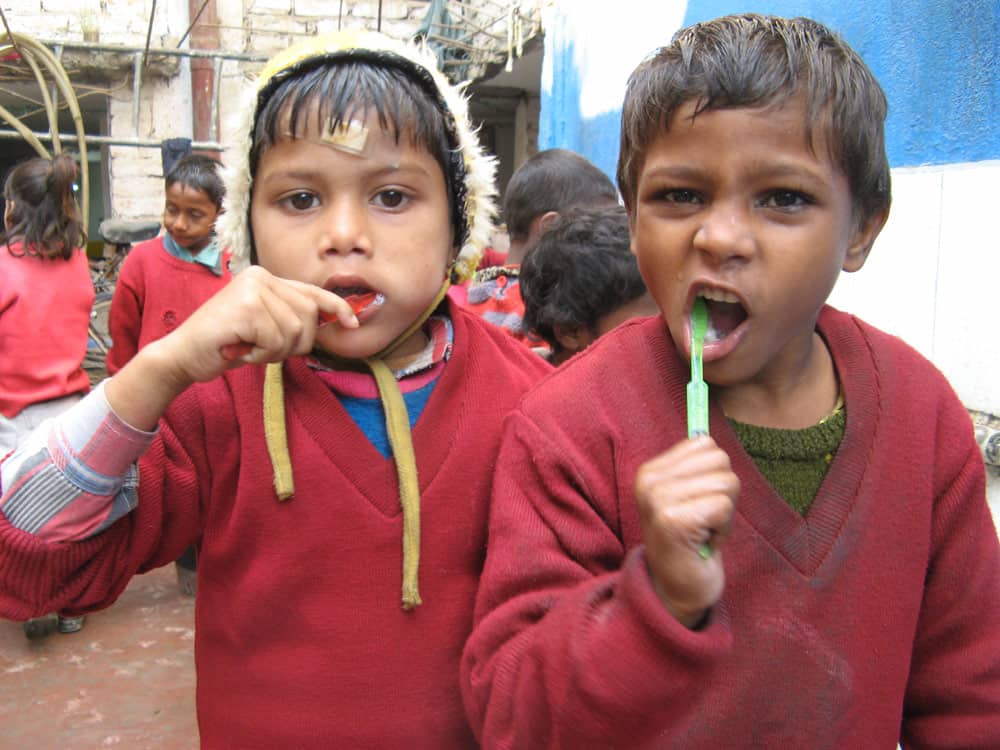
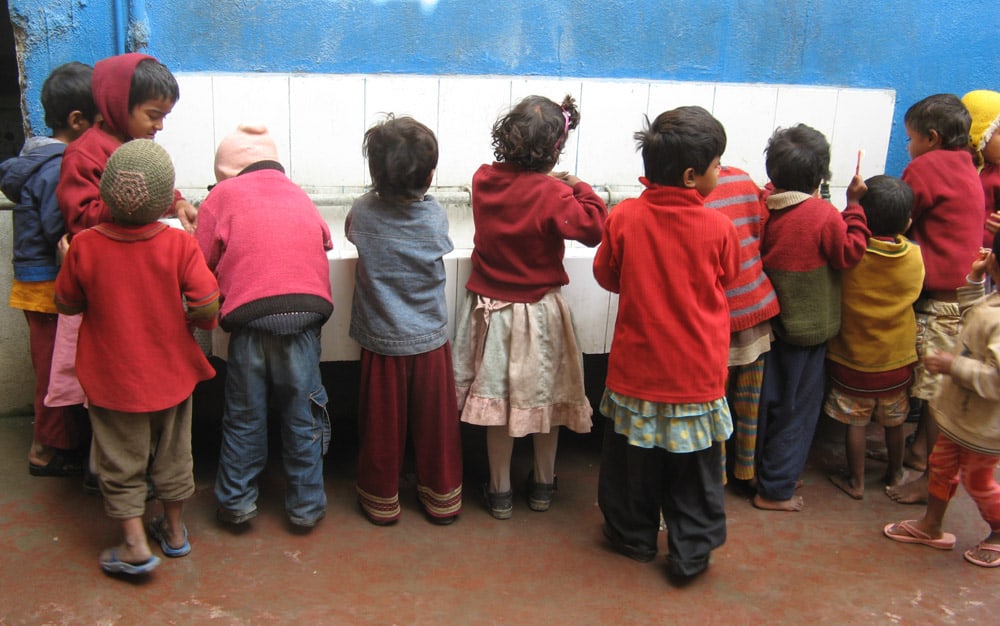
I was extremely impressed with how hard-working the teachers and staff were to create this structured time for the health and dignity of the children. For many of the students, it is the only time of the day dedicated to a nutritious meal and personal hygiene.
It made me so happy to see the leaders of the school taking a little time out for fun and creativity.
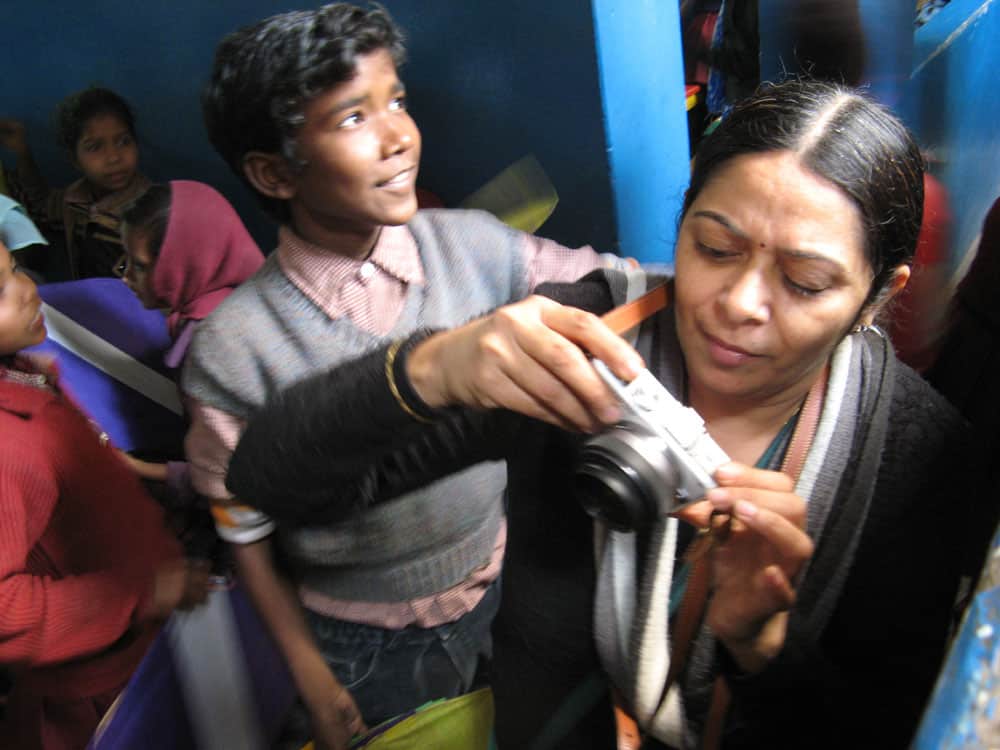
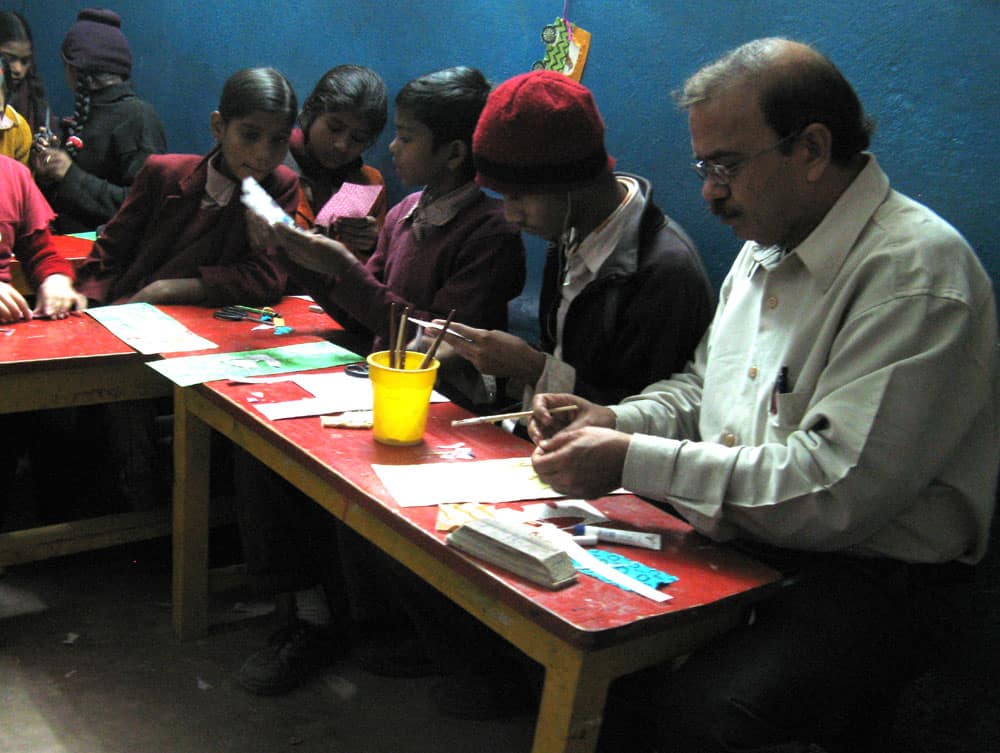
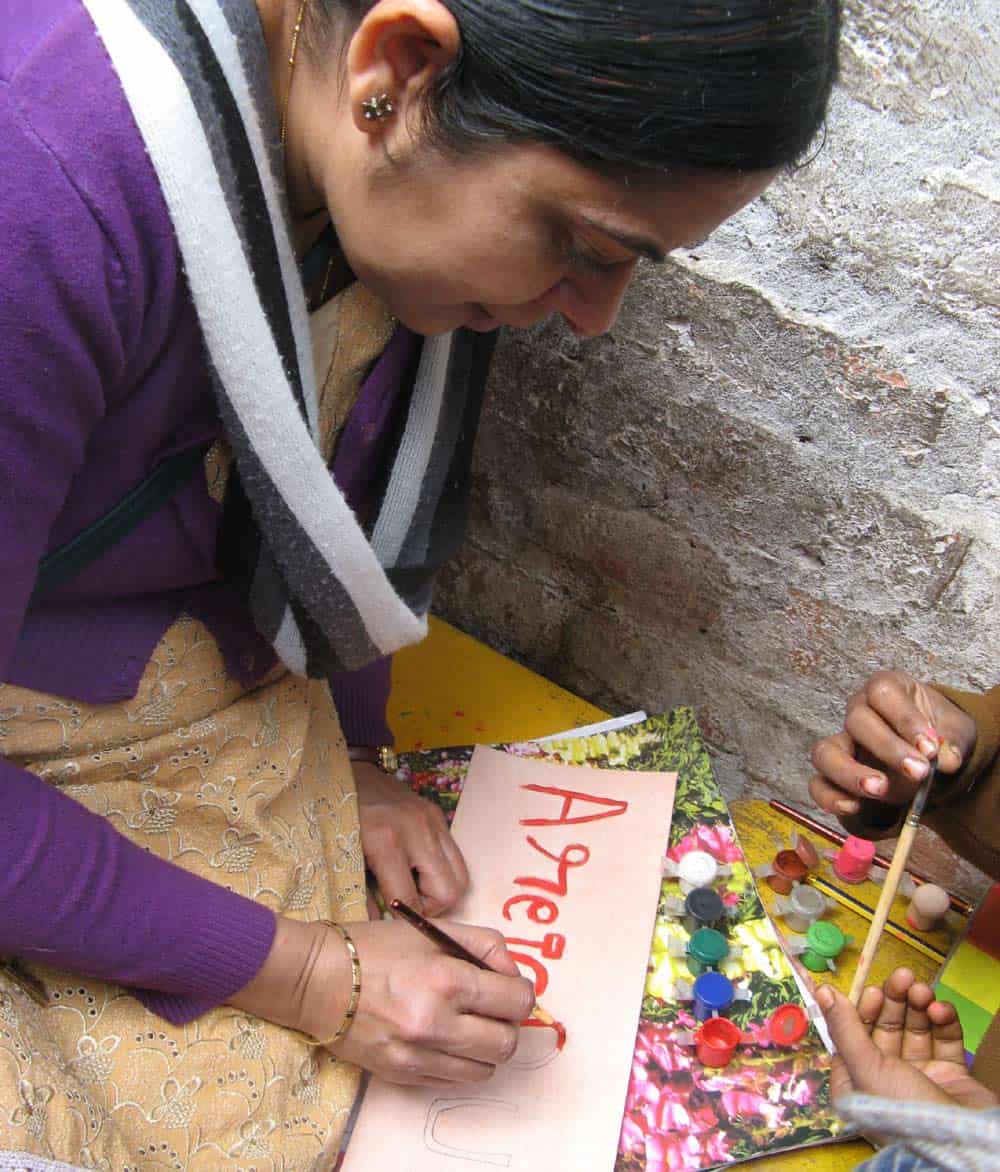
photo credit: Shannon Holman
The students, teachers and founders of Buddha’s Smile School send their love and gratitude to those who participated in last year’s spectacular fundraiser…
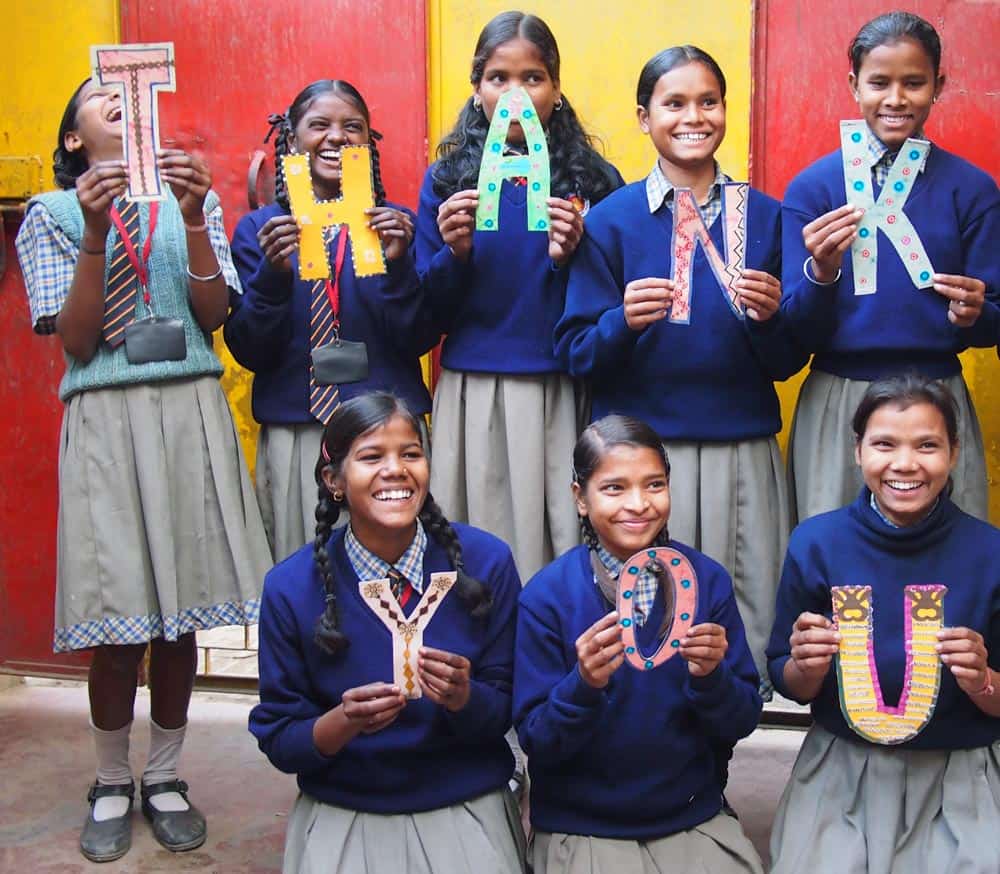
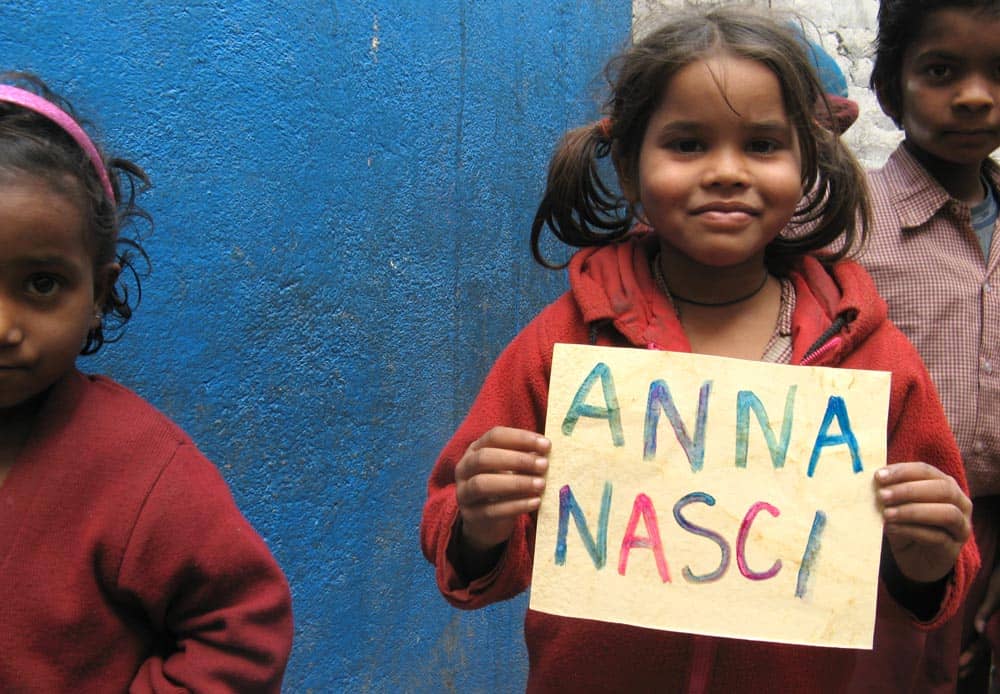
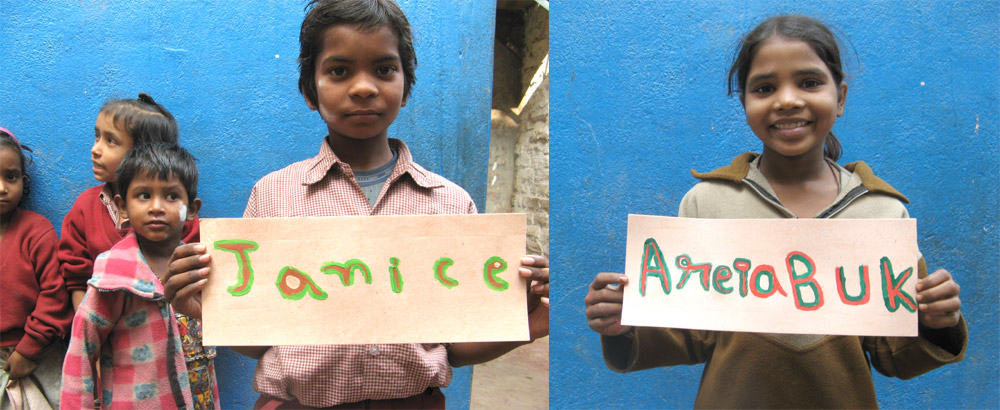
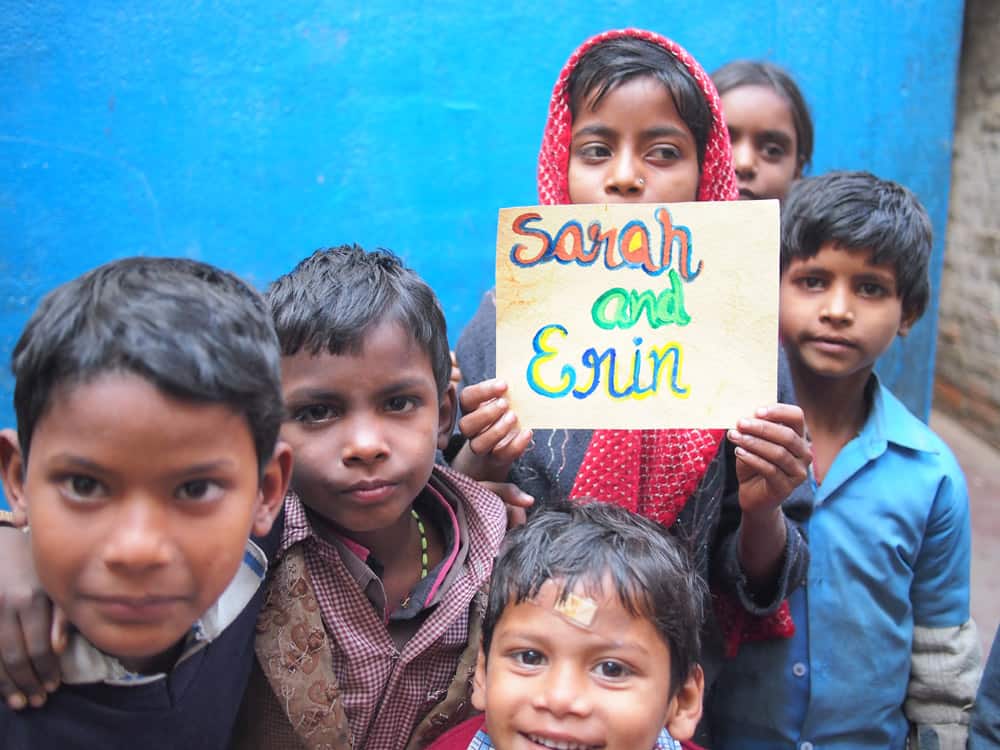
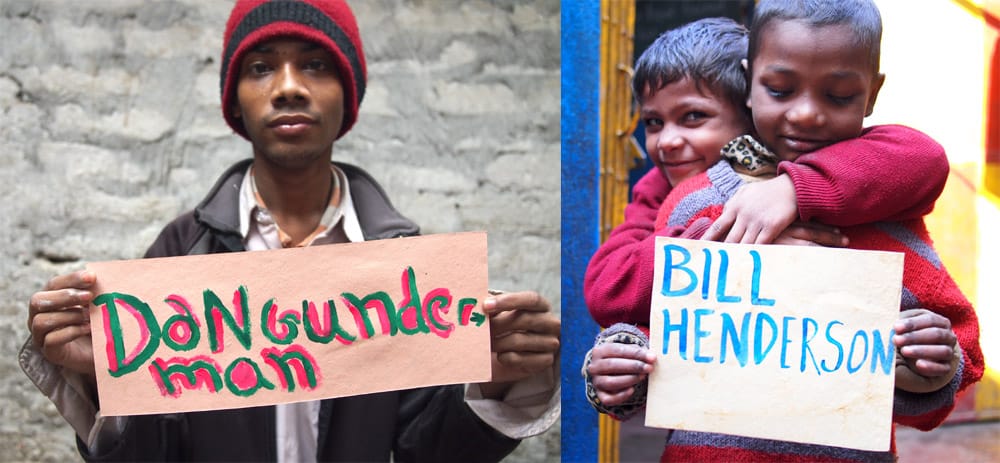
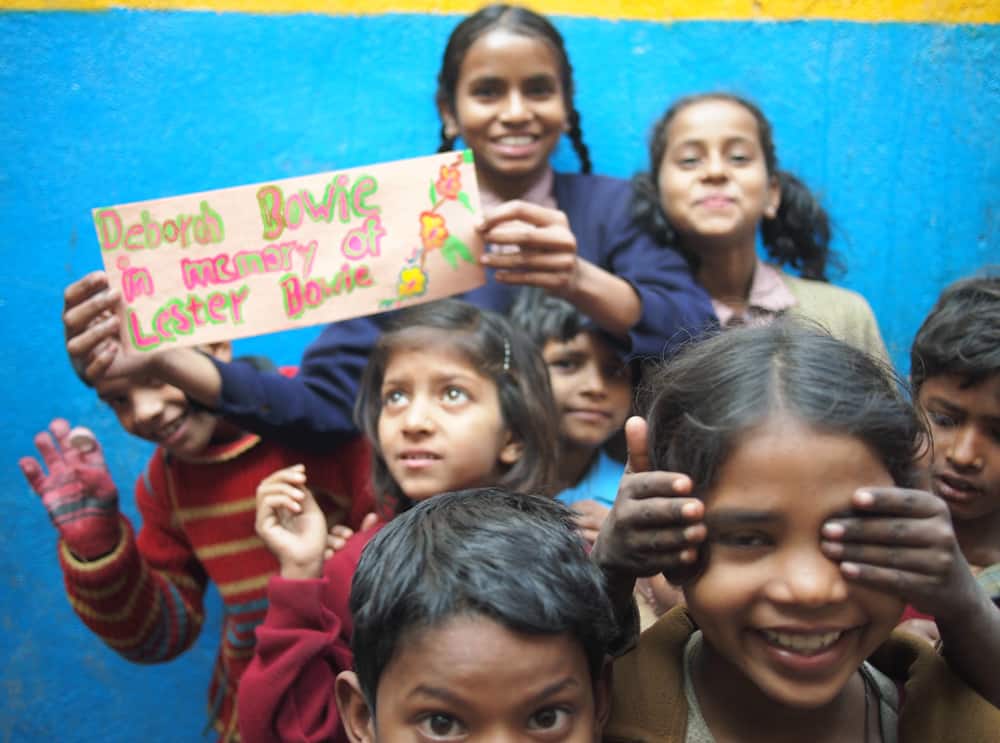
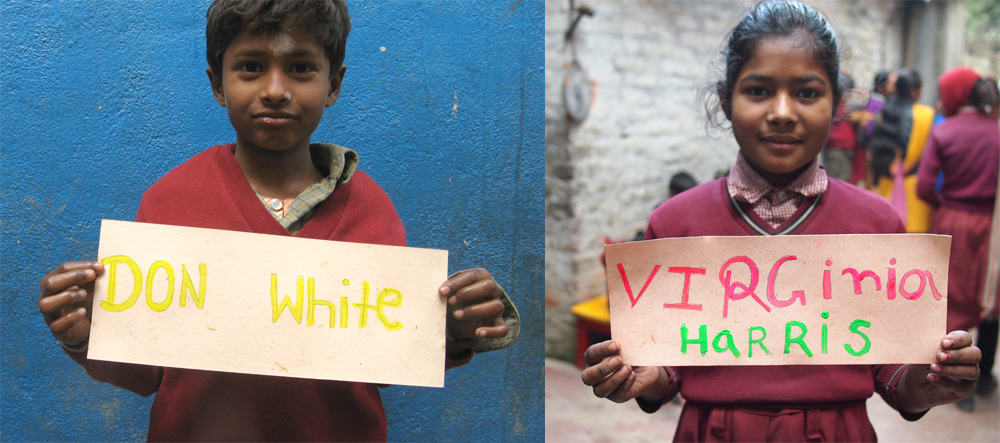
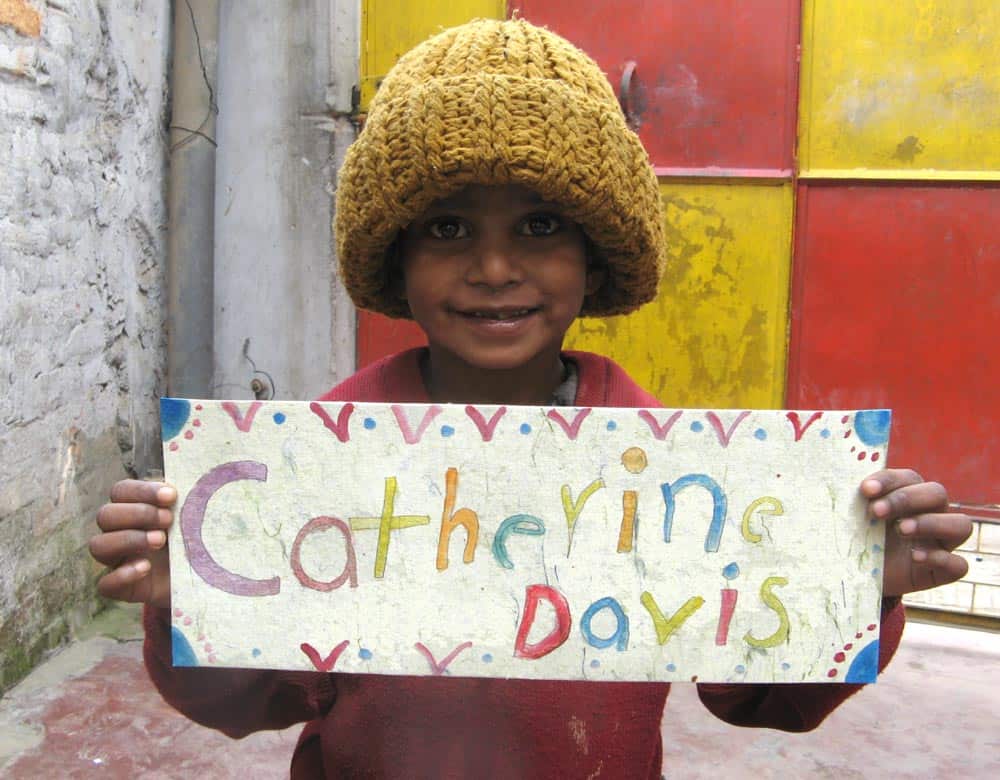
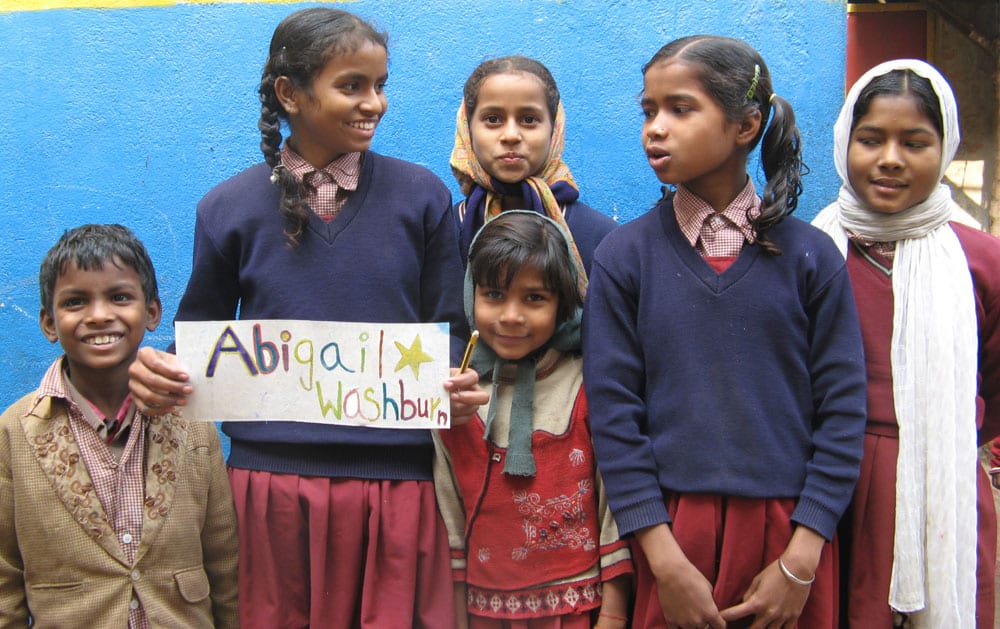
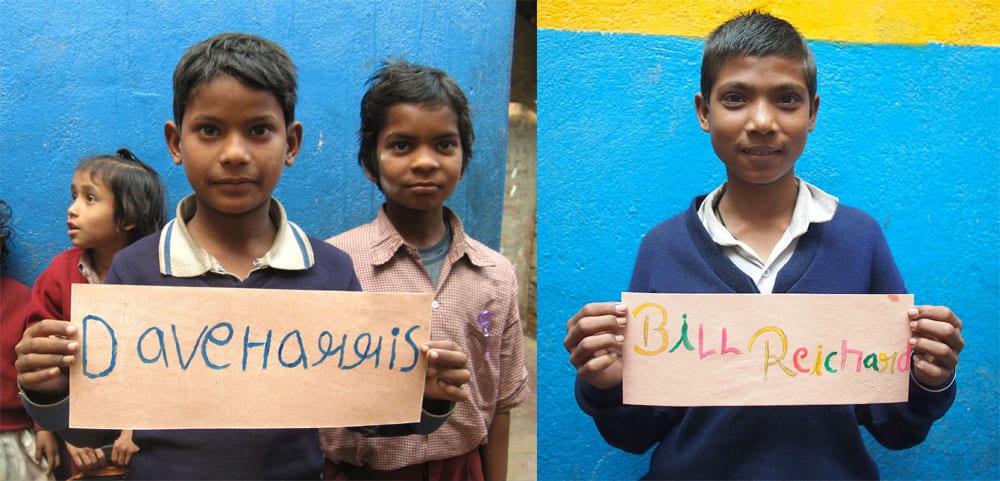
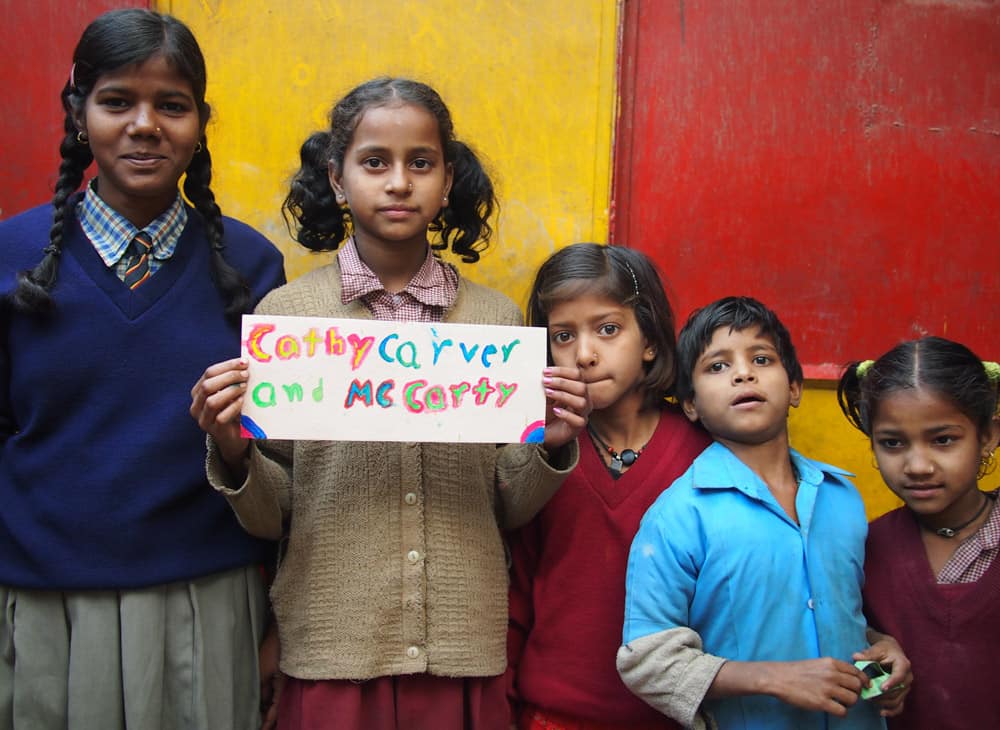
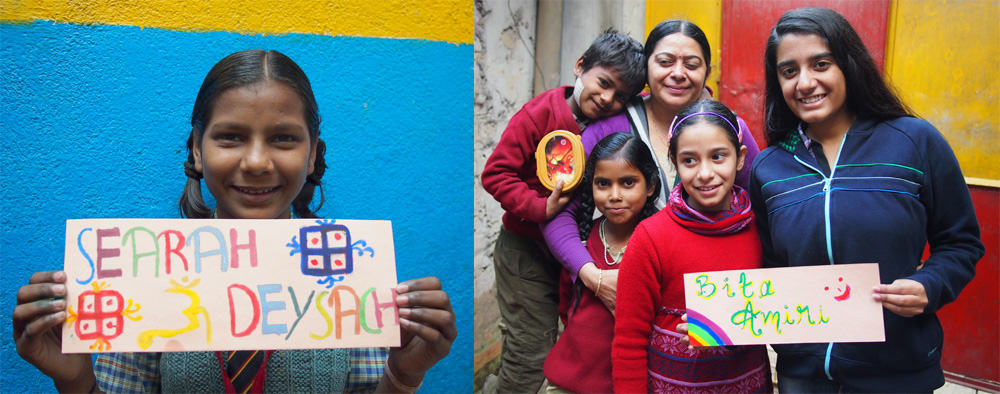
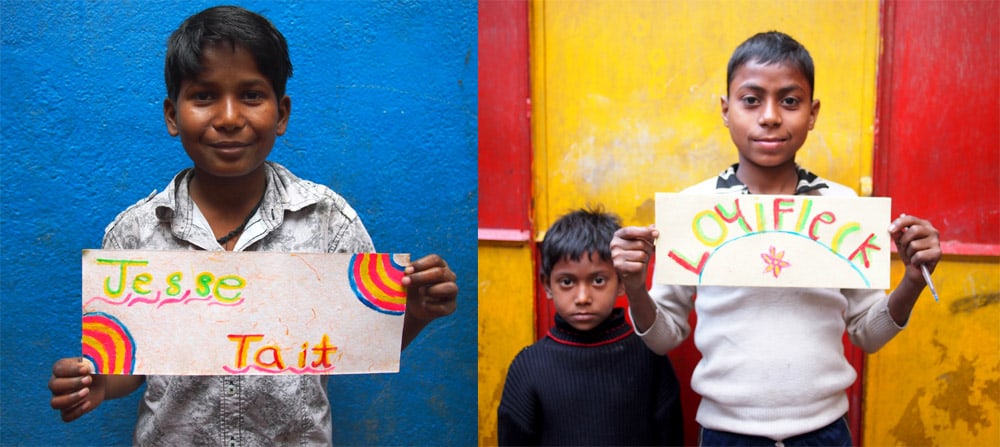
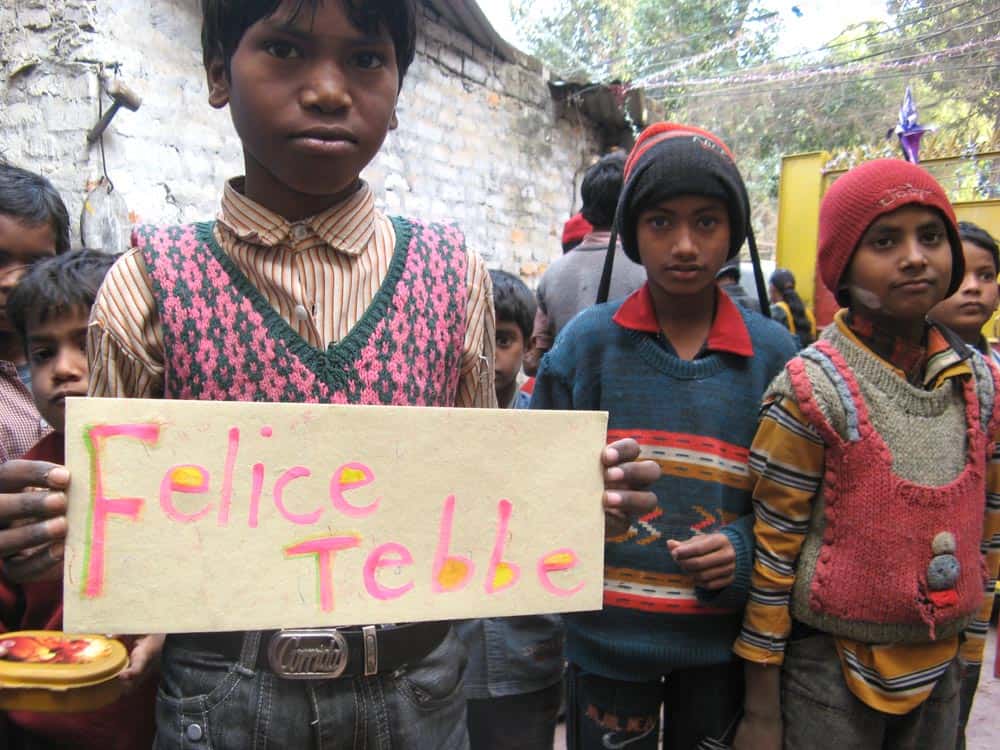
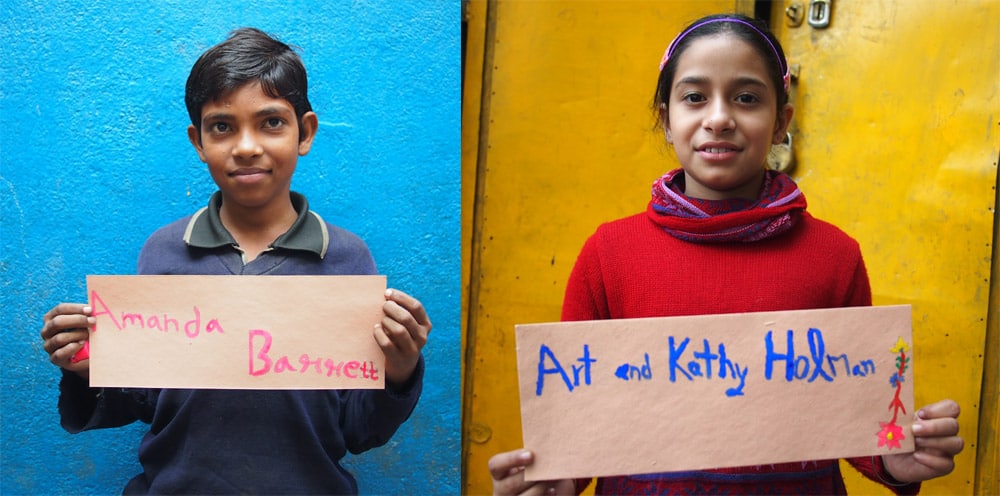
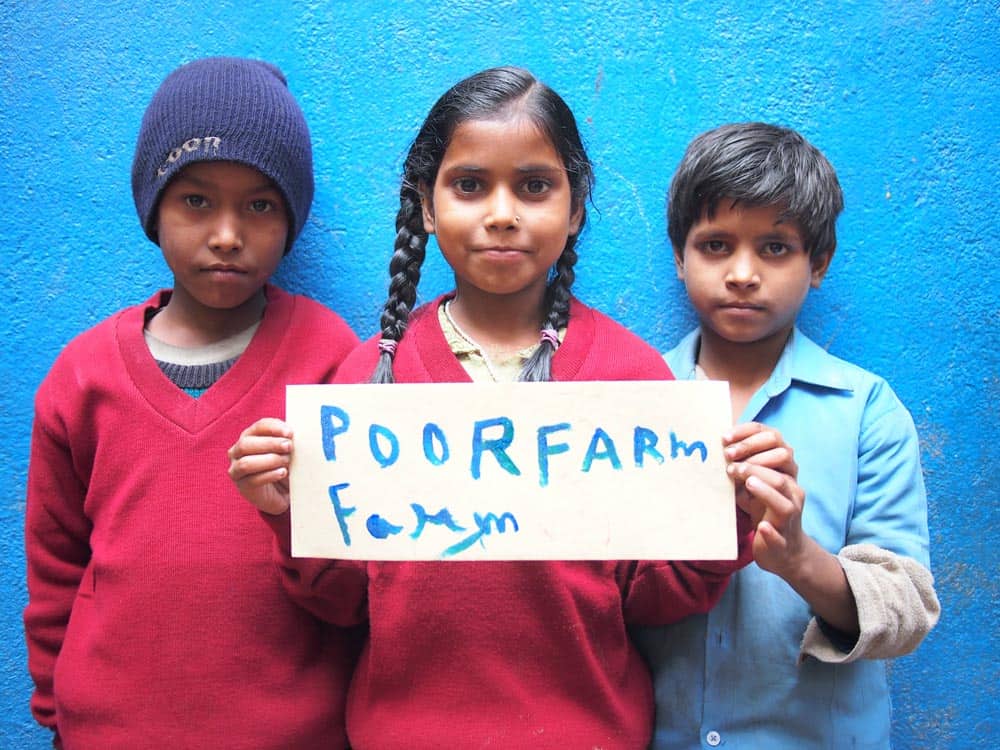
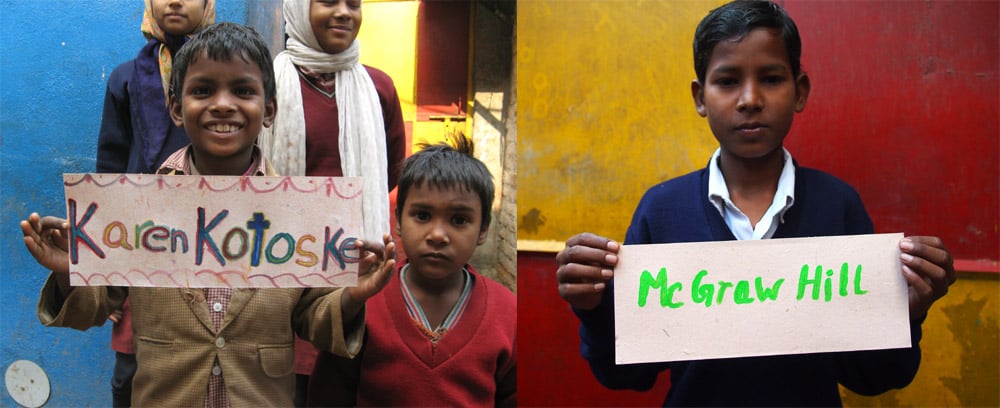
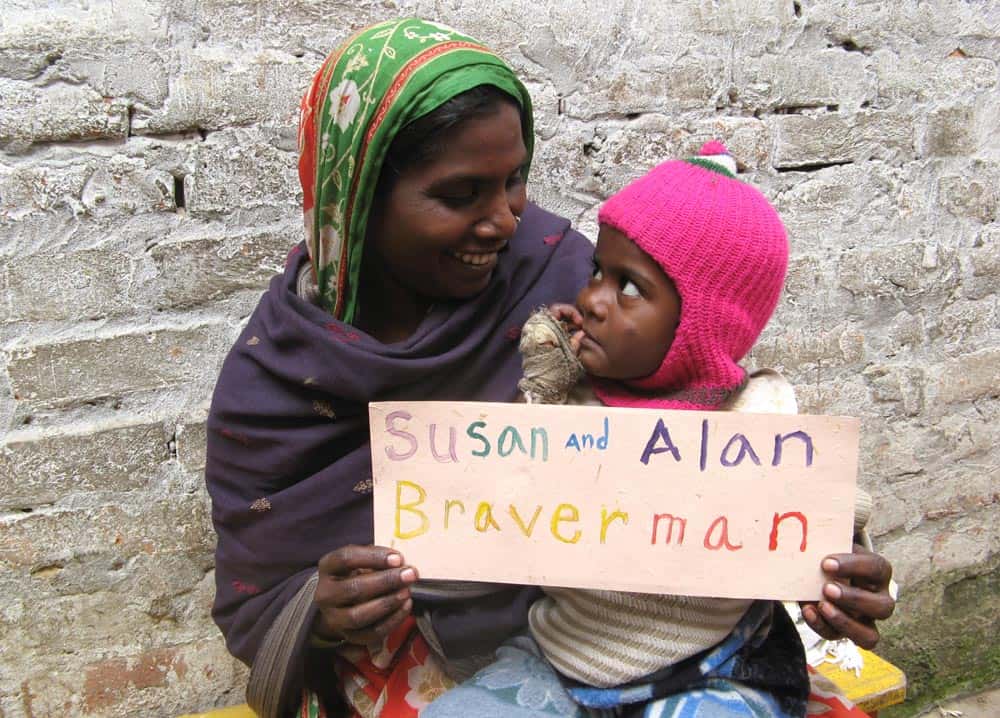
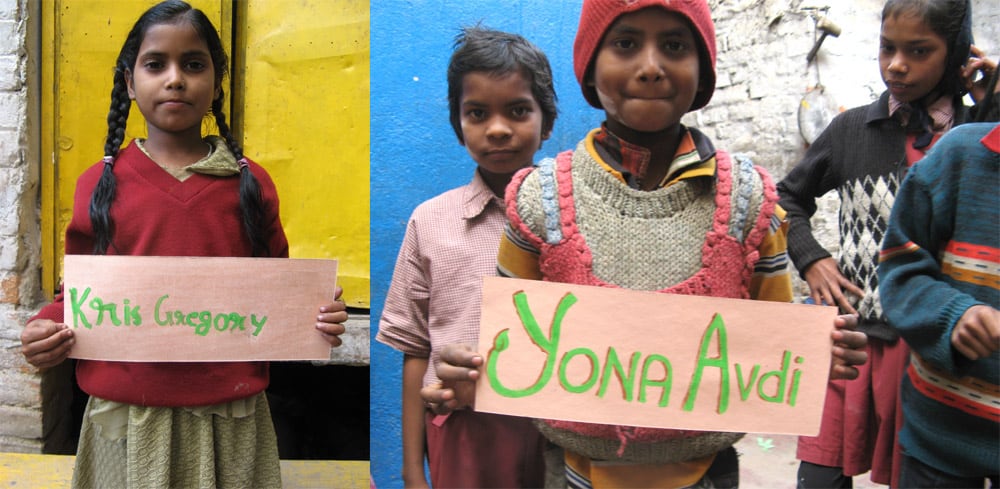

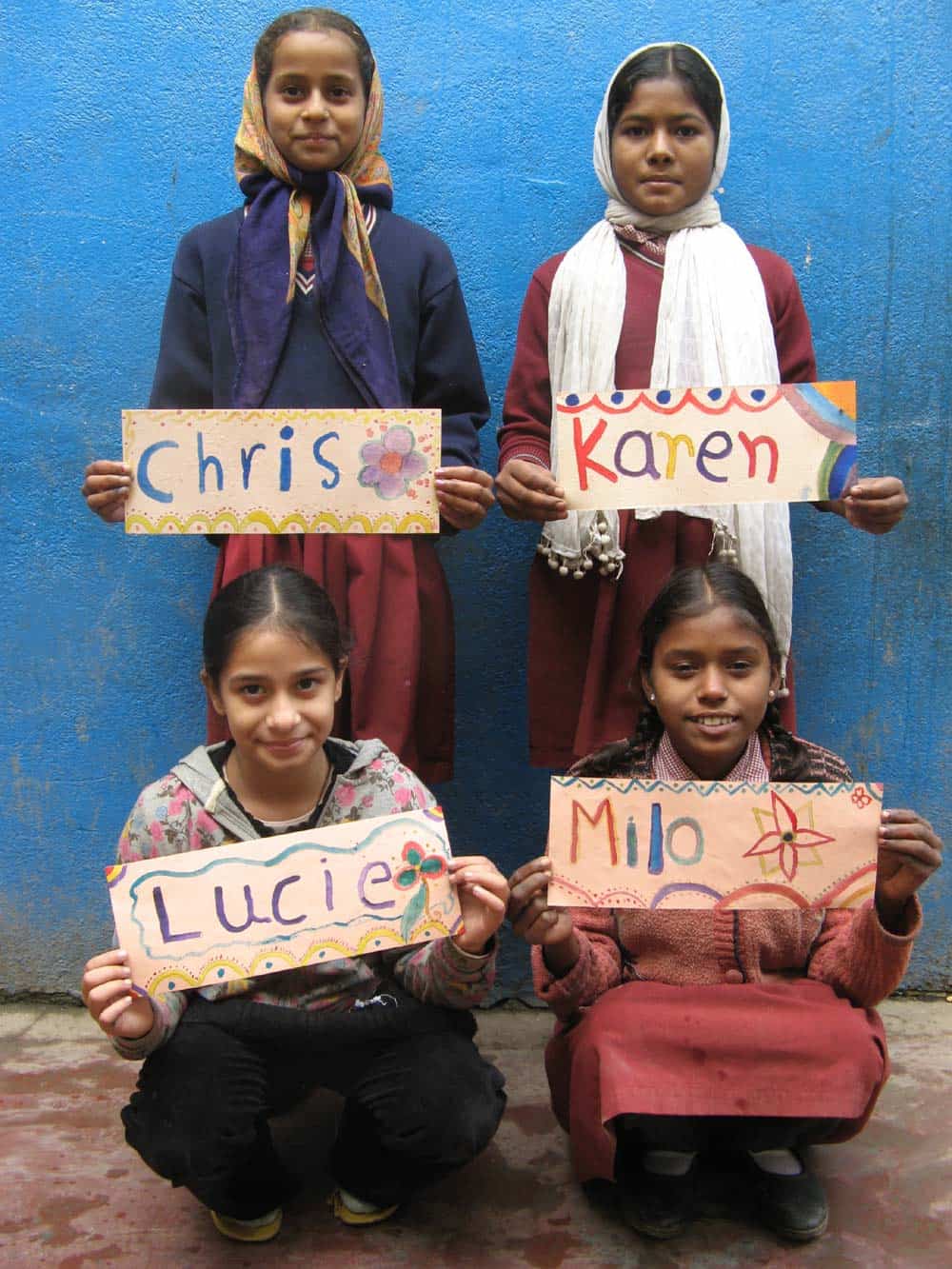
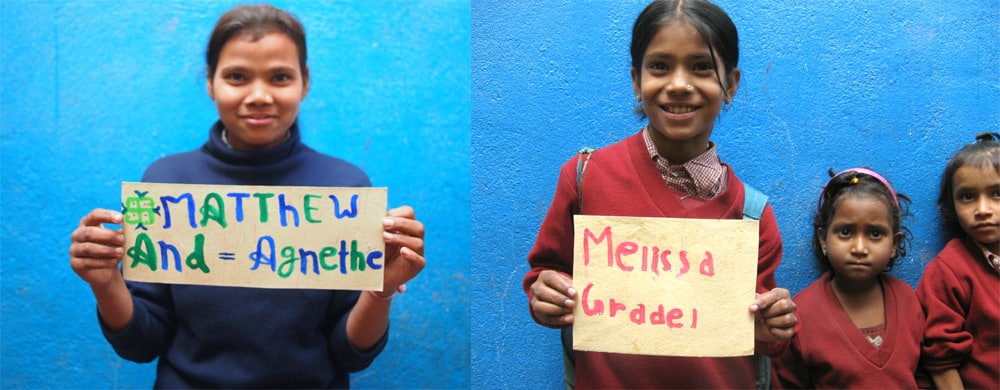
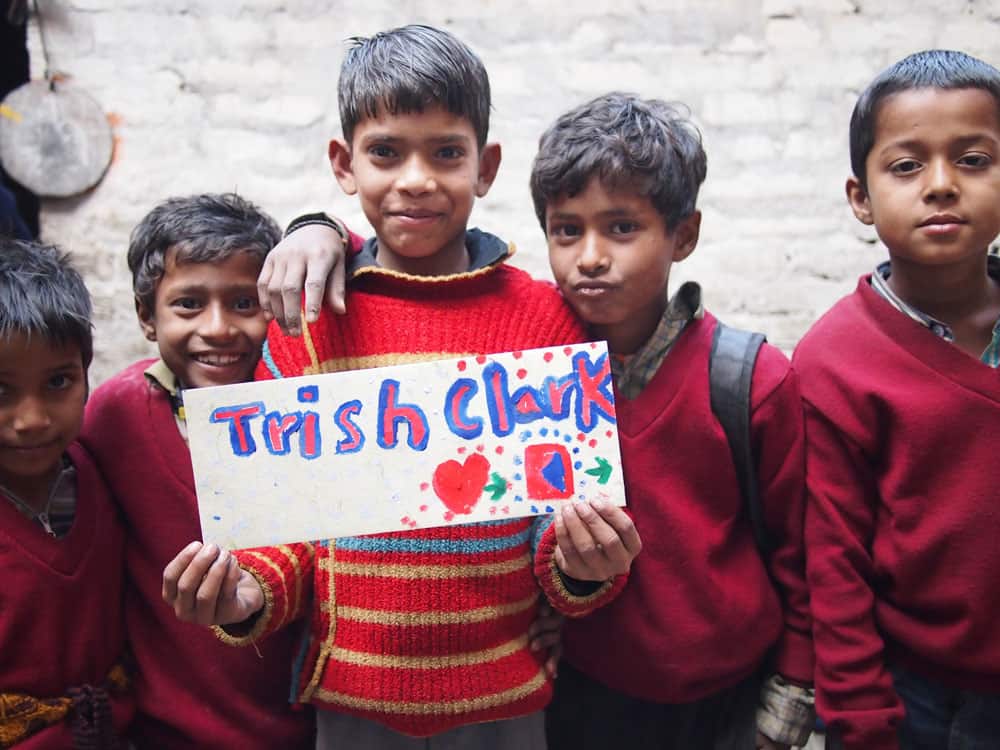
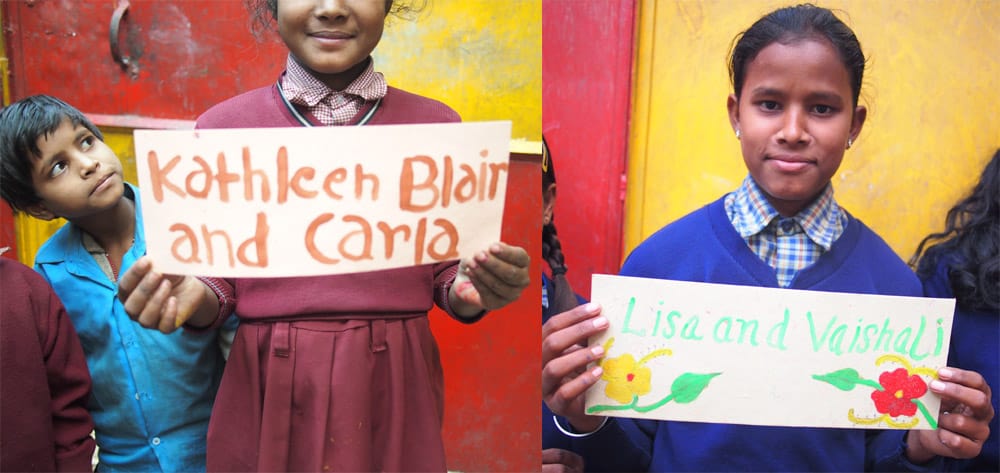
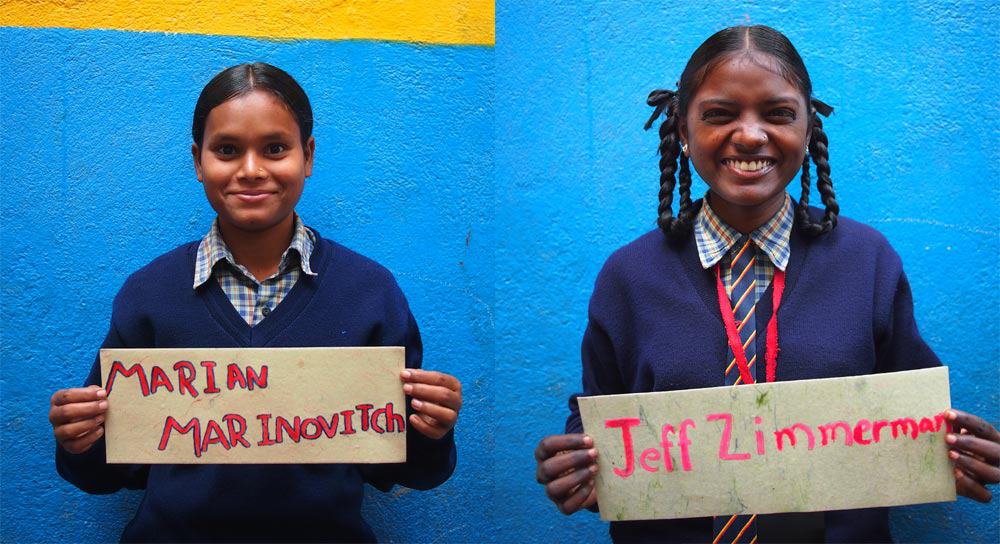
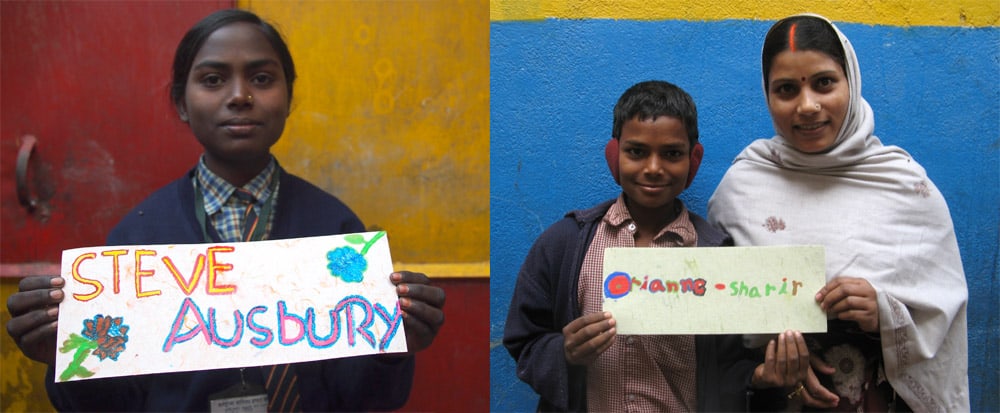
and…
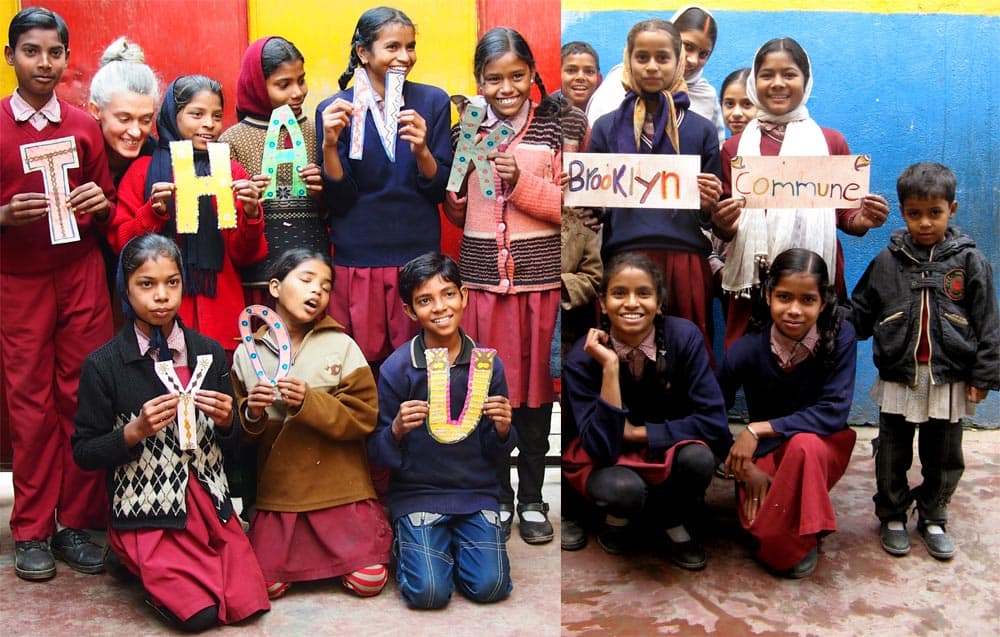
…for helping to create the first Brooklyn Commune Community Scholarship for a Buddha’s Smile School Student. They were very excited to know our community took an interest in their well being!
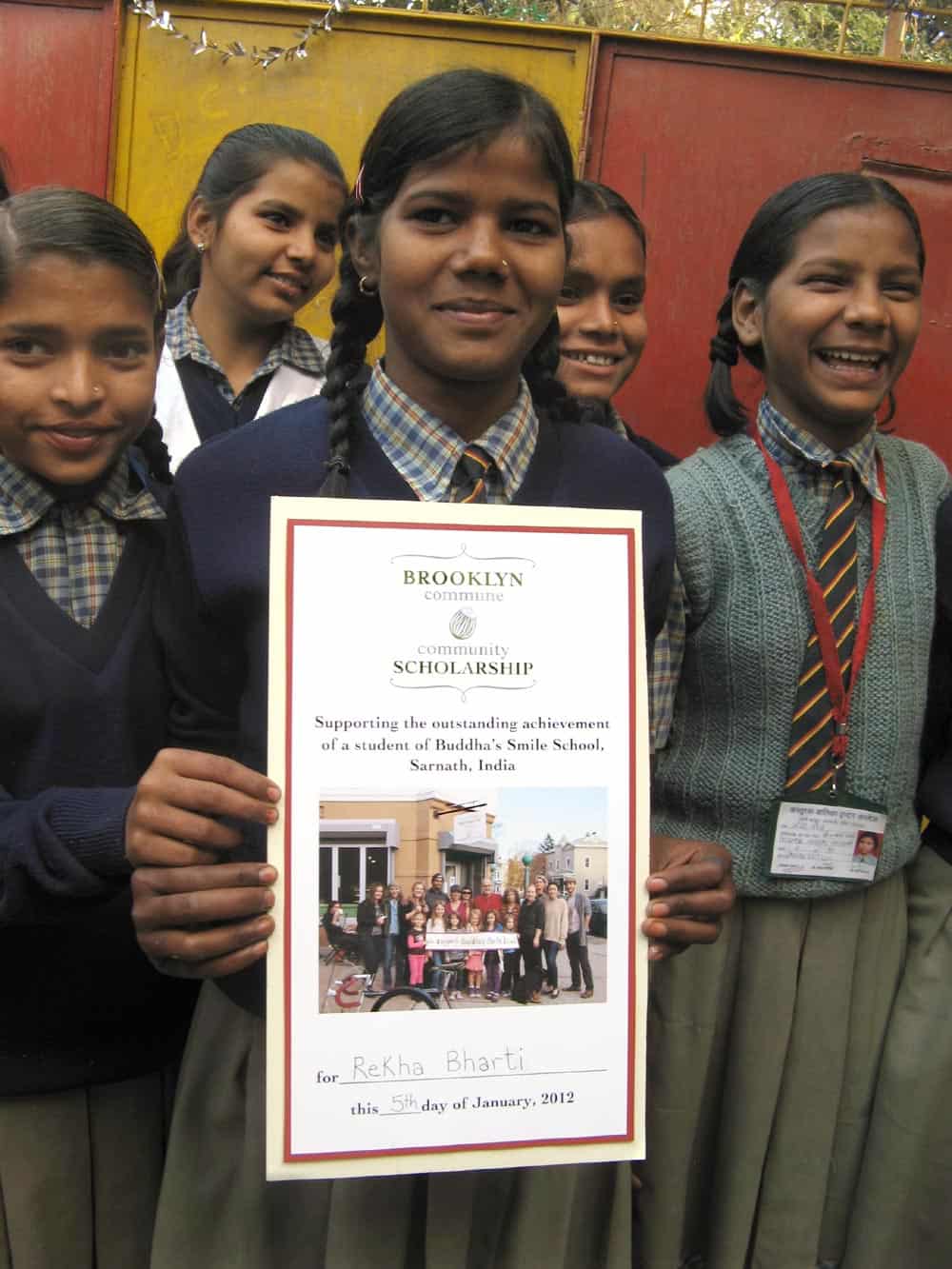
To see more art projects and activities at the school, look HERE.
b. conte at 167 North 9th Street in Williamsburg, Brooklyn, will be hosting my next exhibit: Notions, Sewn Collages from India, Stuffed Toys and Other Crafts.
Opening Reception: Friday, September 7th, 6-9pm. The show runs through October 25th
This is a benefit exhibition supporting my upcoming arts exchange project and teaching residency with La Isla Foundation in Chichigalpa, Nicaragua this November.
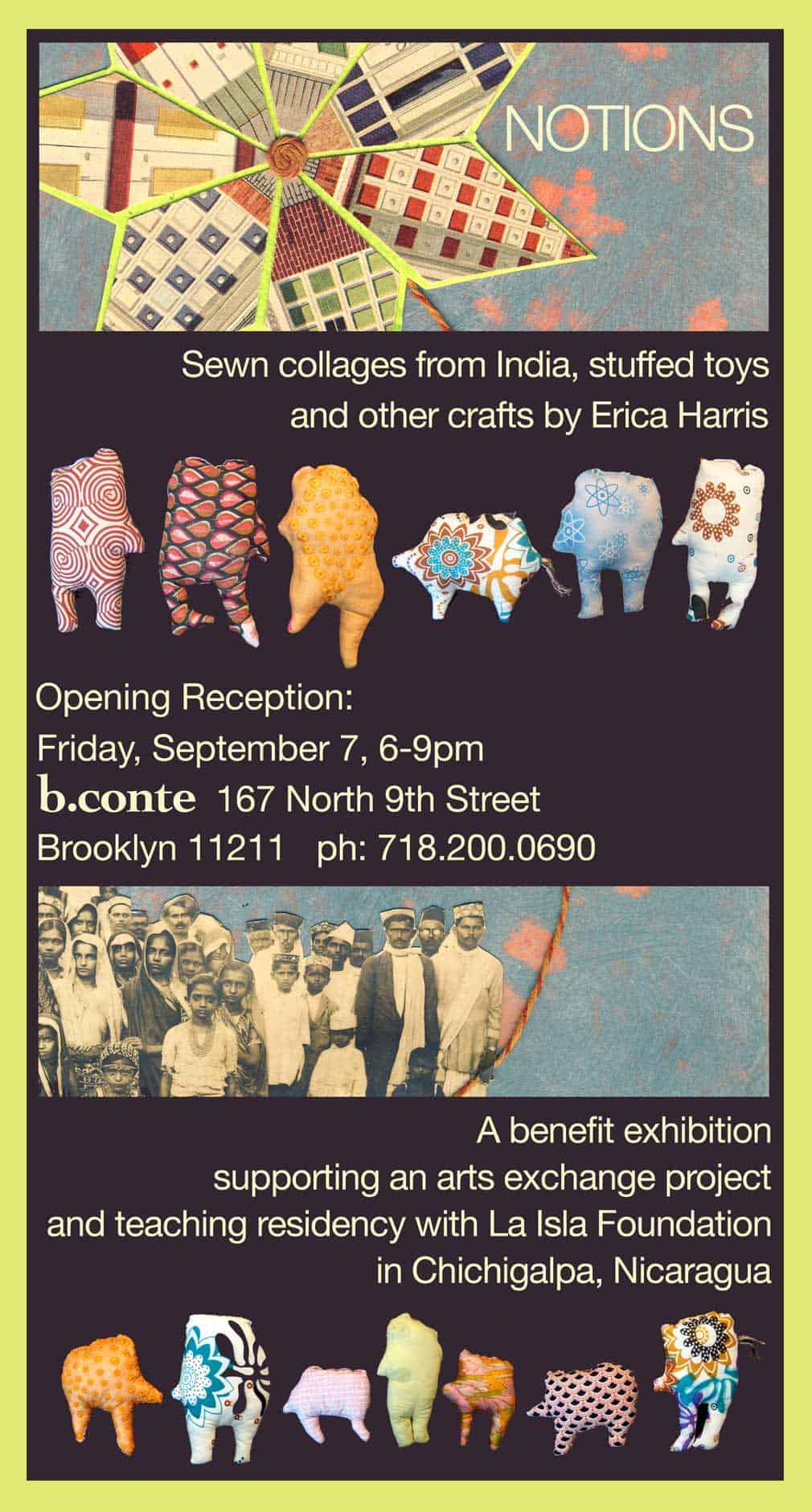
La Isla Foundation is dedicated to fighting Chronic Kidney Disease, or CKD, among agricultural workers throughout Nicaragua, primarily in the sugarcane industry. They provide vital assistance to these communities, in which more than 70% of men and 30% of women have died from CKD.

.
.
They work with health officials and researchers to provide better medical treatment for the sick, study the causes of the epidemic, and support impacted families. By providing direct aid, the tools for self-empowerment, and legal recourse when warranted, La Isla is instrumental in improving working conditions and protecting human rights.

.
.
.
.
La Isla supports and organizes workers and their families through education programs, health initiatives, and economic development projects. Recent projects include the renovation of an elementary school, the re-opening of a formerly abandoned local health clinic, and the development of a sustainable agriculture program in community gardens.

.
.
.
.
.
.
.
.
.
Through the Marmalade Project, La Isla trains local women to produce and market marmalade made from abundant, locally grown fruits. All participants in the program are widows who have lost their husbands to chronic renal insufficiency and are struggling to provide for their families.

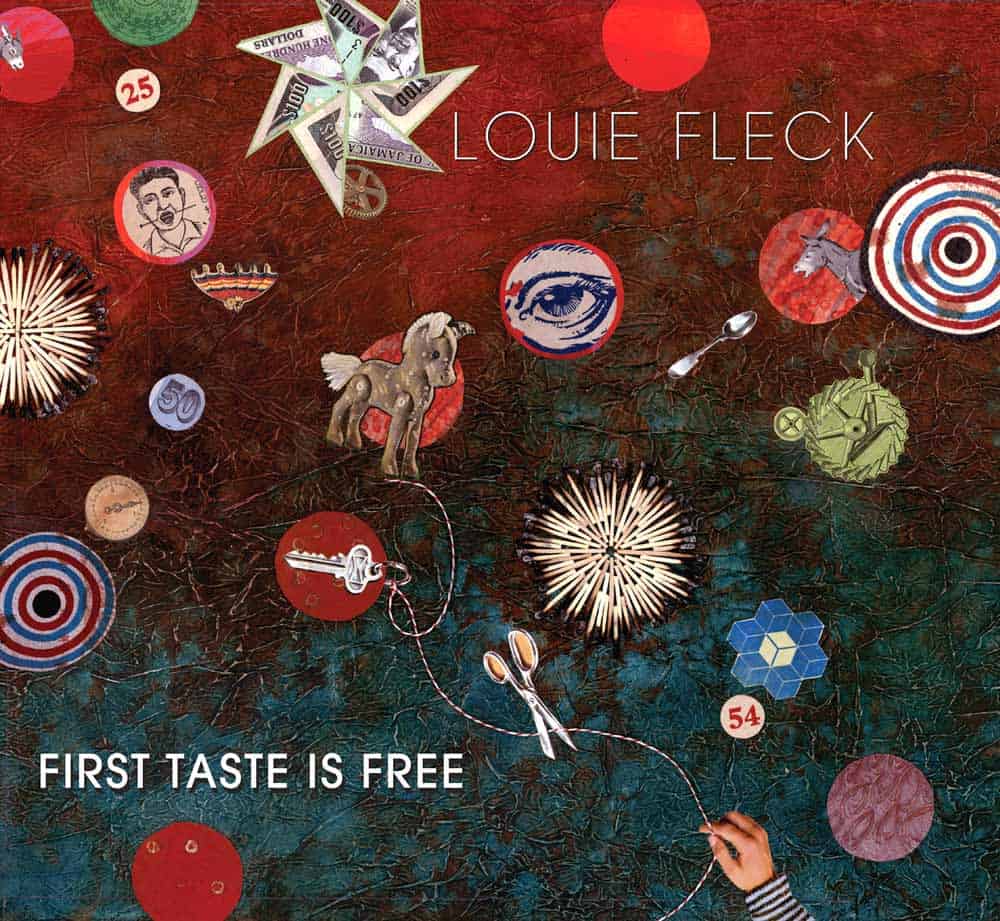
The newest cd of the gypsy-jazz, bluegrass, Celtic, chamber-folk, jazz, rock, and Indian influenced band Taarka is being released in September.
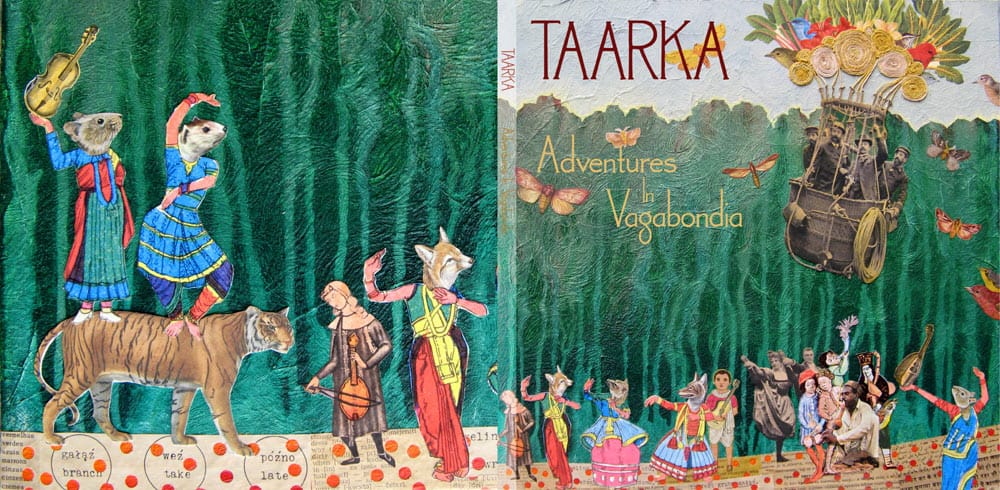
It was an overwhelmingly successful month. Dozens of you contributed close to $8,000!! The school, the students, and I thank you so much for all the support.
Details to come when I return from India next spring.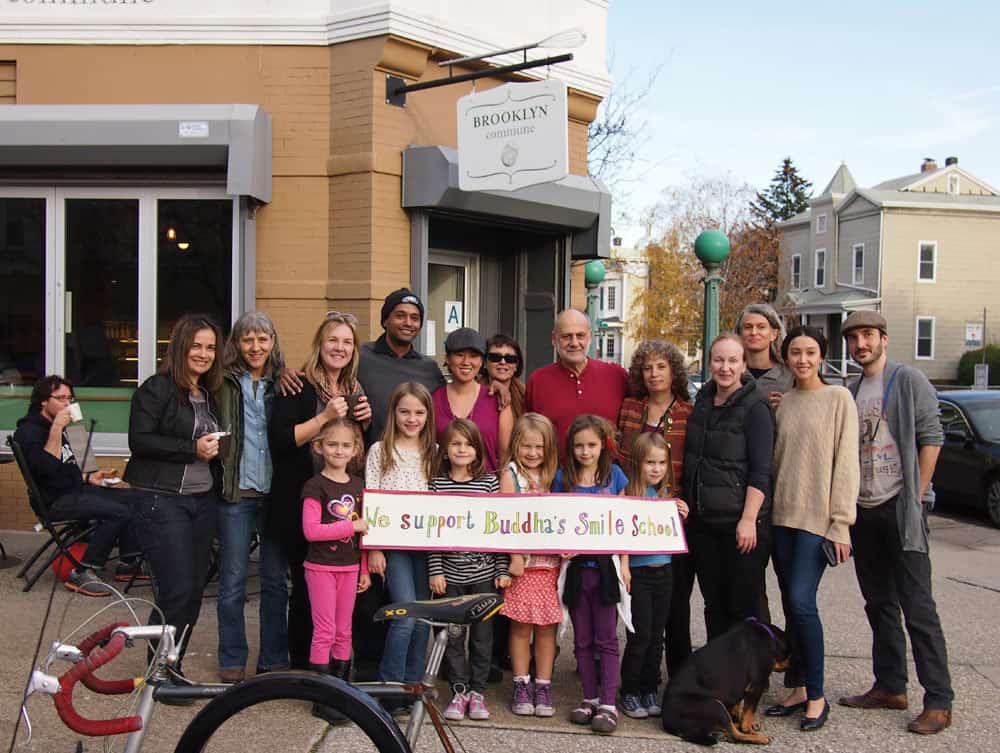
_______________________________________________________________________________
The Goal: To provide scholarships to 8 students of Buddhas Smile School: Paro, Vishal, Ravi, Khusboo, Rekha, Sunita, Brijesh, and Pooja.

Each scholarship of 25,000 Rupees (about $500) covers costs for school supplies, books, clothing, first aid, meals, and transportation for one year.

These are children previously holding down full-time jobs, mostly as garbage collectors and recyclers on the streets of Varanasi. For most of them, Buddhas Smile School, a non-denominational, non-profit school, is their first experience with education and with someone taking an interest in their well-being.
Here’s how you can participate:
All proceeds of any purchase on my Etsy site from now until November 20th will be contributed to the fund.
In partnership with the lovely Brooklyn Commune Cafe in Windsor Terrace, a print sale of my collages and drawings is running until November 27th.
All proceeds go towards the fund. Prints are 20 bucks. 25 prints= 1 scholarship.
If you would like to create a full or partial scholarship either by purchase or donation in your name, or in the name of your family, school, organization, press or label, I will make a one-of-a-kind certificate and present it to the school when I visit in January. Just think of it!
As always, thank you so much for your support.
If you have already contributed, your generosity is greatly appreciated!
Erica, Shannon, and Rajan (founder of Buddhas Smile School)
The International Bluegrass Music Association has presented the 2011 Best Graphic Design of the Year Award to my work on Abigail Washburn‘s cd City of Refuge. The designer is Ricardo Alessio. Thanks, Abby & IBMA!
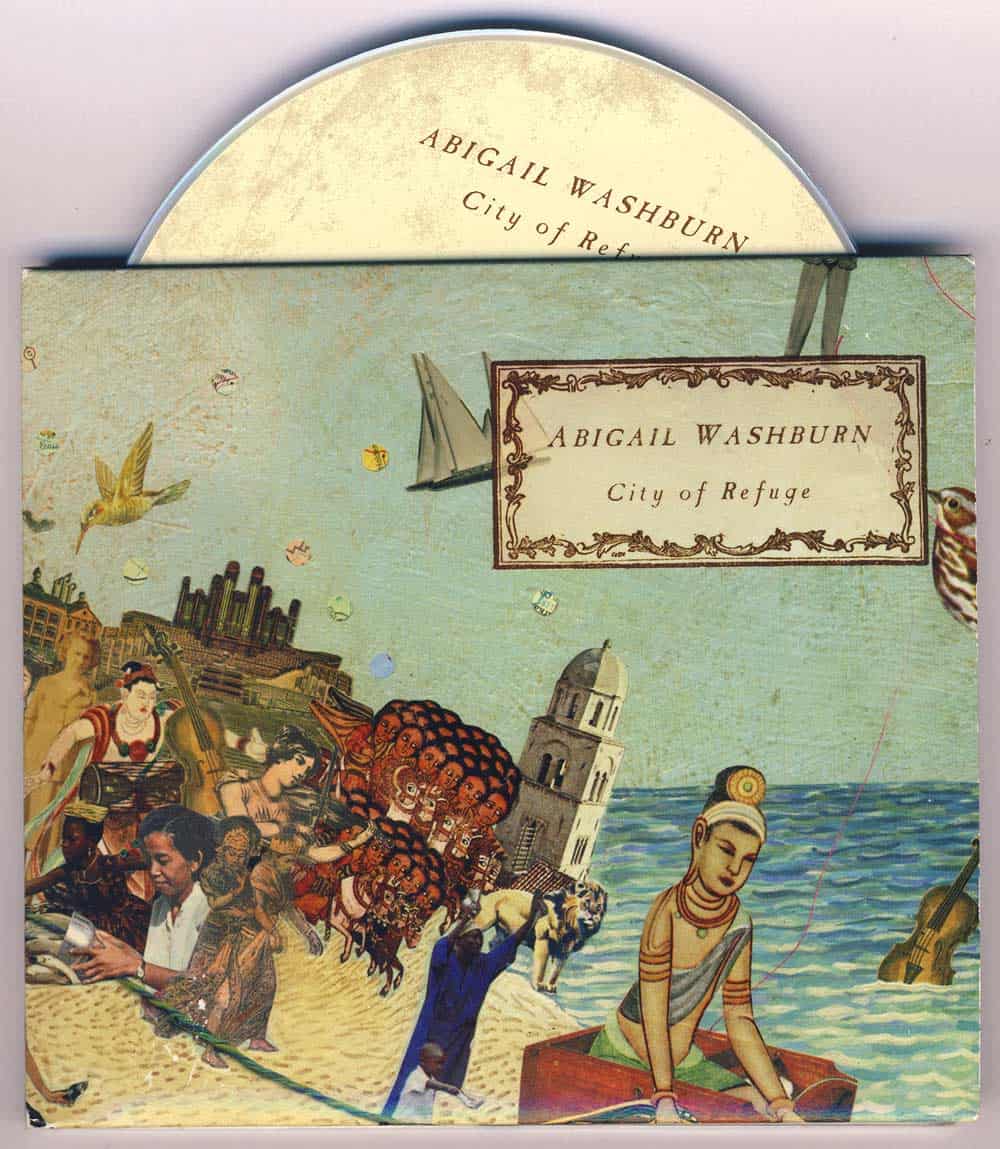
This December I will be returning to India.
Chhaap Printmaking Studio in Baroda, Gujarat, has invited me for a one month residency. I will be hosting workshops, exhibiting my work, and experimenting with new media in their studio. Outside of their gallery, Chhaap is also facilitating mini-shows in unlikely places such as ice cream parlors and restaurants. This is something new for the art scene in India, and I look forward to participating.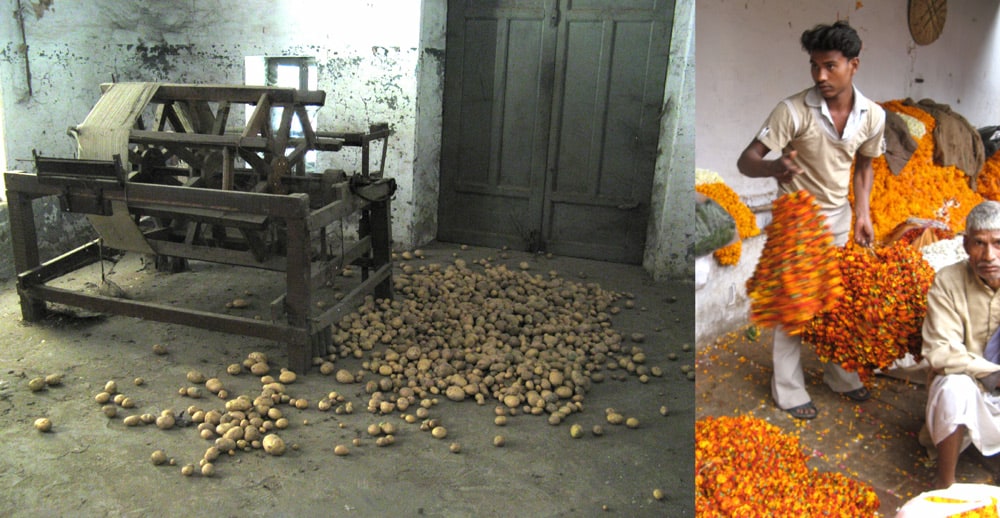
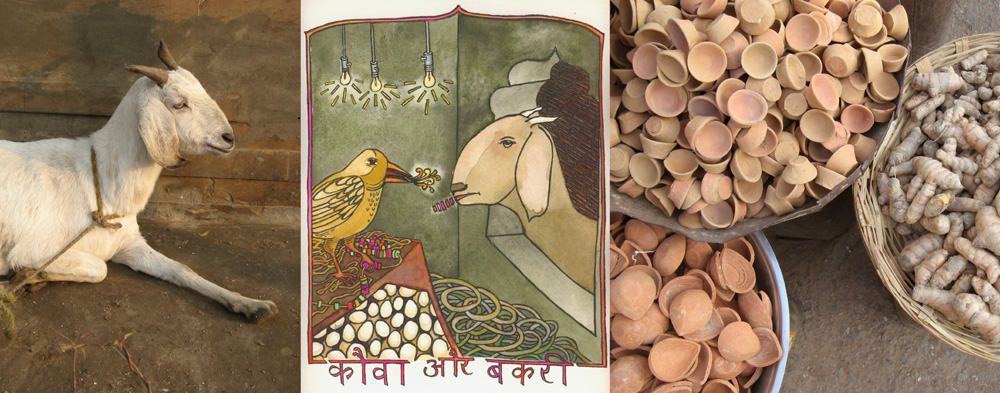
Thanks to your generous support, I met my fundraising goal for this year’s India & Etsy Fundraiser!! From now through November 15th, all proceeds from any purchase made on my Etsy site will support a scholarship fund for Buddhas Smile School in Varanasi, India.
And thanks again to all of you who made the last India & Etsy fundraiser such a huge success. You can see photos of some of the projects you made possible HERE.
I look forward to sharing new art and experiences in Gujarat with you when I return.
The big and beautiful Brooklyn Creative League hosts this group show of paintings and collages. Opens this Saturday, Oct. 1 at 6pm and runs through February. 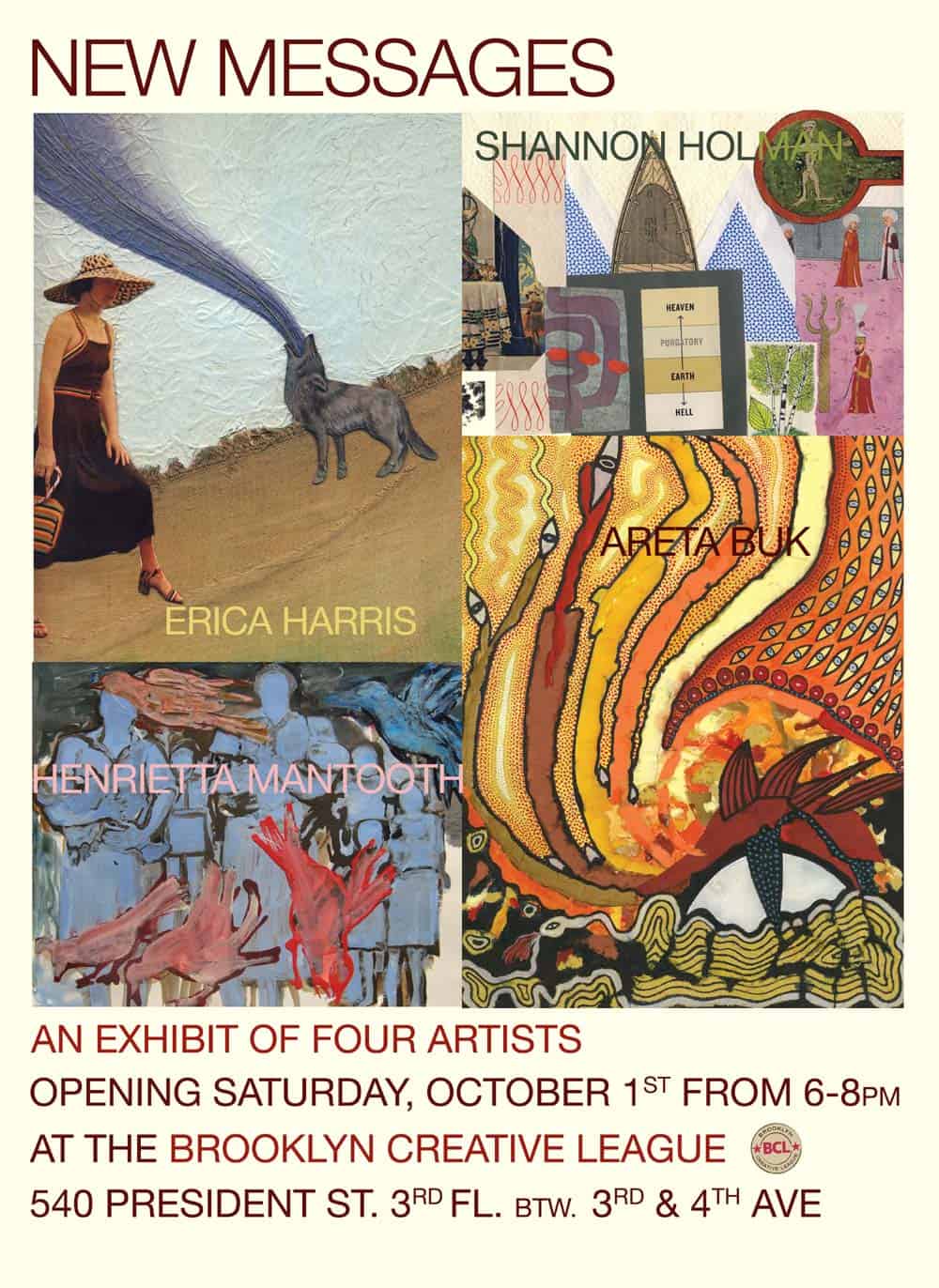
One of the participating artists, Henrietta Mantooth, says of her work:
My painting can be described as “witnessing”. The work is often based on images and stories in the news, people who look out at us every day from the printed page and television screen but who are usually nameless — refugees, rebels, farmers, men and women who tend and defend their land, homes, children, animals and ideas. My intention is that they speak out from the paintings: “HERE WE ARE”.
I lived in Latin America for 18 years, learned Spanish and Portuguese, traveling to out of way places: Indian settlements and ancient ruins, Baroque villages and areas where Afro culture and rituals flourish, in Brazil, Venezuela, Mexico, Peru, Colombia, Argentina, Bolivia and Guatemala. I accompanied rustic pilgrimages where people rode for days in the back of trucks, on horse and mule back and in ox carts in biblical fashion to make offerings, sell their wares and livestock, buy salt and other supplies, marry and baptize their children in group ceremonies.
These experiences still have a strong impact on my paintings and connect with my own raw upbringing in Missouri which varied from the pop culture of Kansas City streets, reflecting jazz, corrupt politics and racial inequality, and where my earliest visual and artistic influences were in the dime stores; to the Missouri farmland where my mother’s people raised grapes and apples and where my sister and I fashioned our toys and dolls from mud and sticks, hollyhocks, corn cobs and corn silk, concocting our paints from mulberries, beets, boiled onions, grasses and laundry blueing, and where gypsies parked their wagons along the oiled road in front of our small house. I was aware of the poverty and prejudice of those depression years, of the dust wrecked farm land, the losses and foreclosures, the stunted lives and lack of education, the Black ghettos and segregation. This early background still gives intensity and vision to my artistic endeavors and affects my approach to materials and techniques.
Painting is about bravery. For both artist and viewer. Art is emergency both in the sense of urgency and coming forth. Accept the unexpected and the surprise of the accidental and choose discovery over perfection every time. Rely on your hand to know what it is doing and respect your own process. It will be different from everyone else’s. This is my advice to myself.
Henrietta contemplating her own advice in her studio:
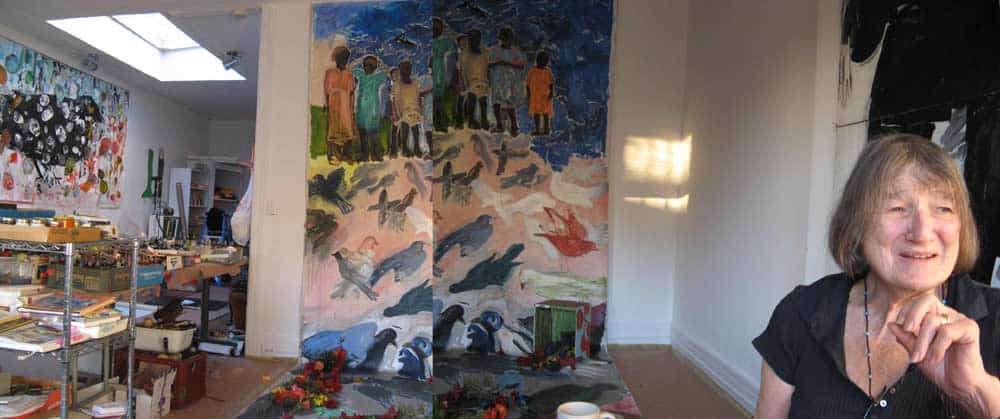
In the October/November issue of American Craft, my work will illustrate an article by Glenn Adamson who discusses the Studio Craft and Folk Craft Movements, as well as imagining a dinner party where Leonore Tawney and Gandhi are on the guest list…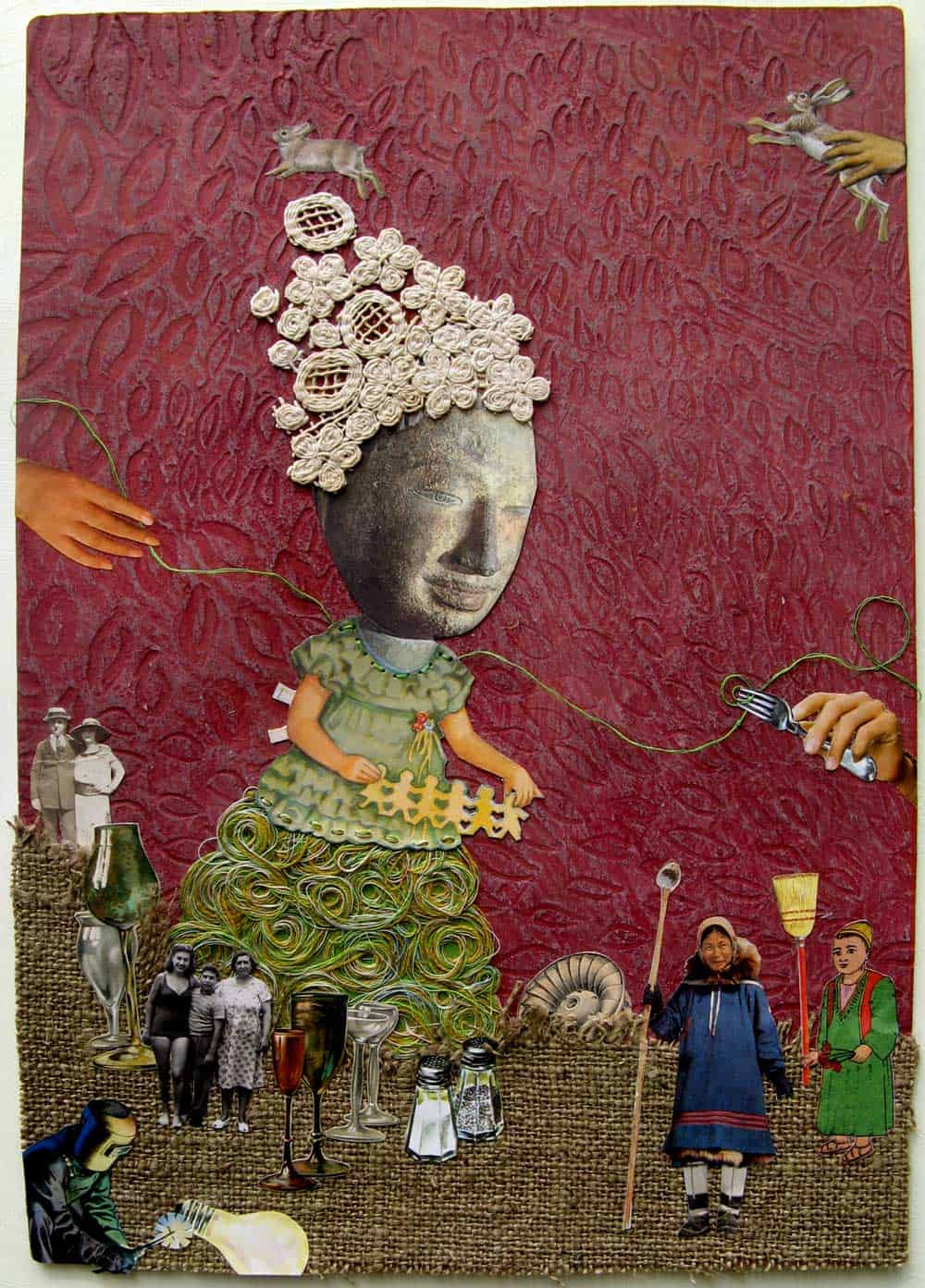
Songs of Wonder is a collection of yiddish poems written by Rabbi Abraham Joshua Heschel in his youth. The poetry explores the philosophical, spiritual and mystical dimensions of love, nature and how to be of service to the world. Composed by Basya Schechter (from Pharaoh’s Daughter), arranged by Uri Sharlin (piano, accordion, glockenshpiel), and additionally performed and interpreted by Megan Weeder (violin) and Yoed Nir (cello).
To be released on John Zorn’s Tzadik Records in the fall.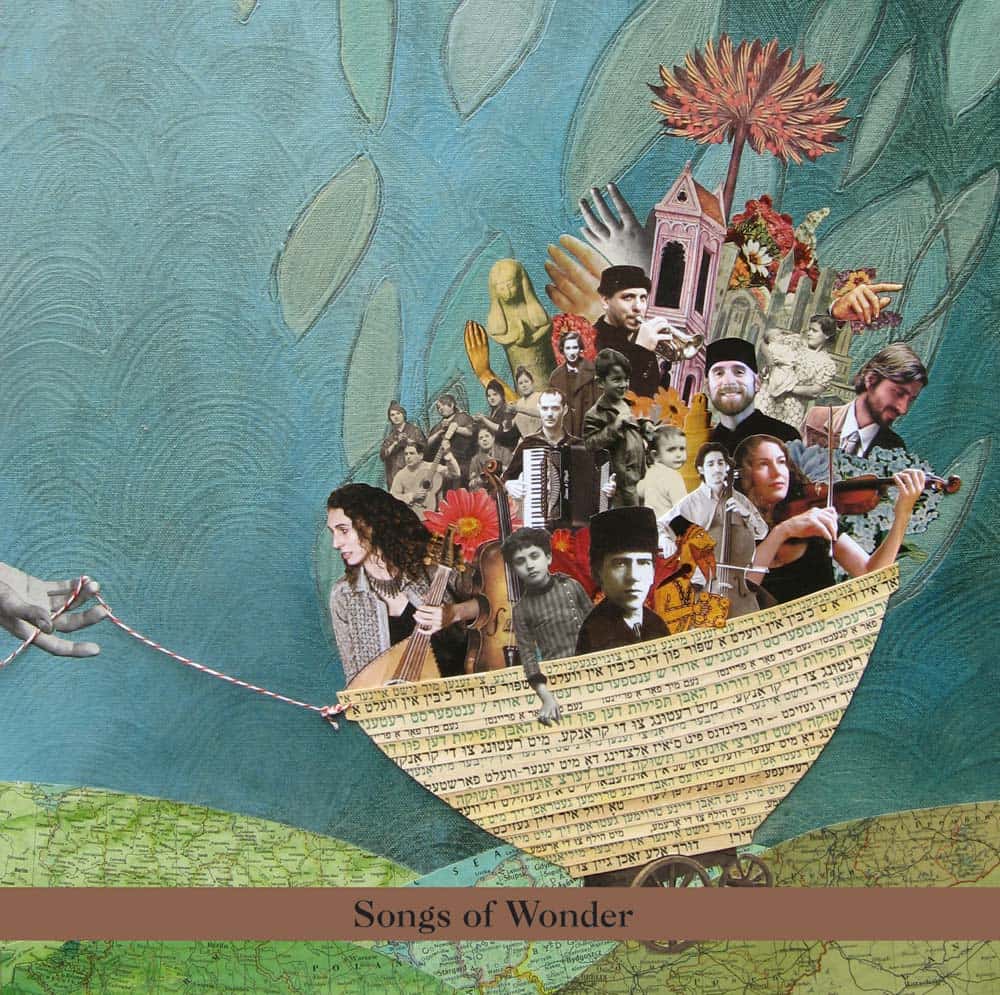
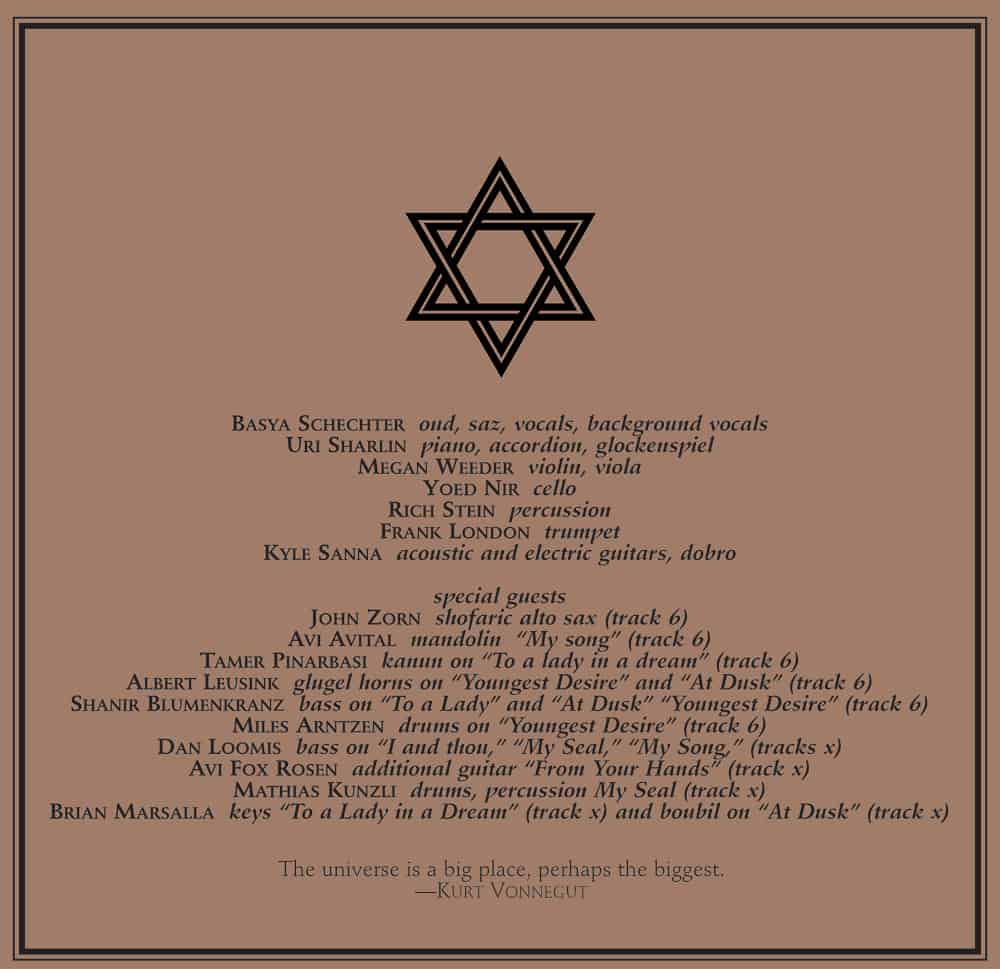
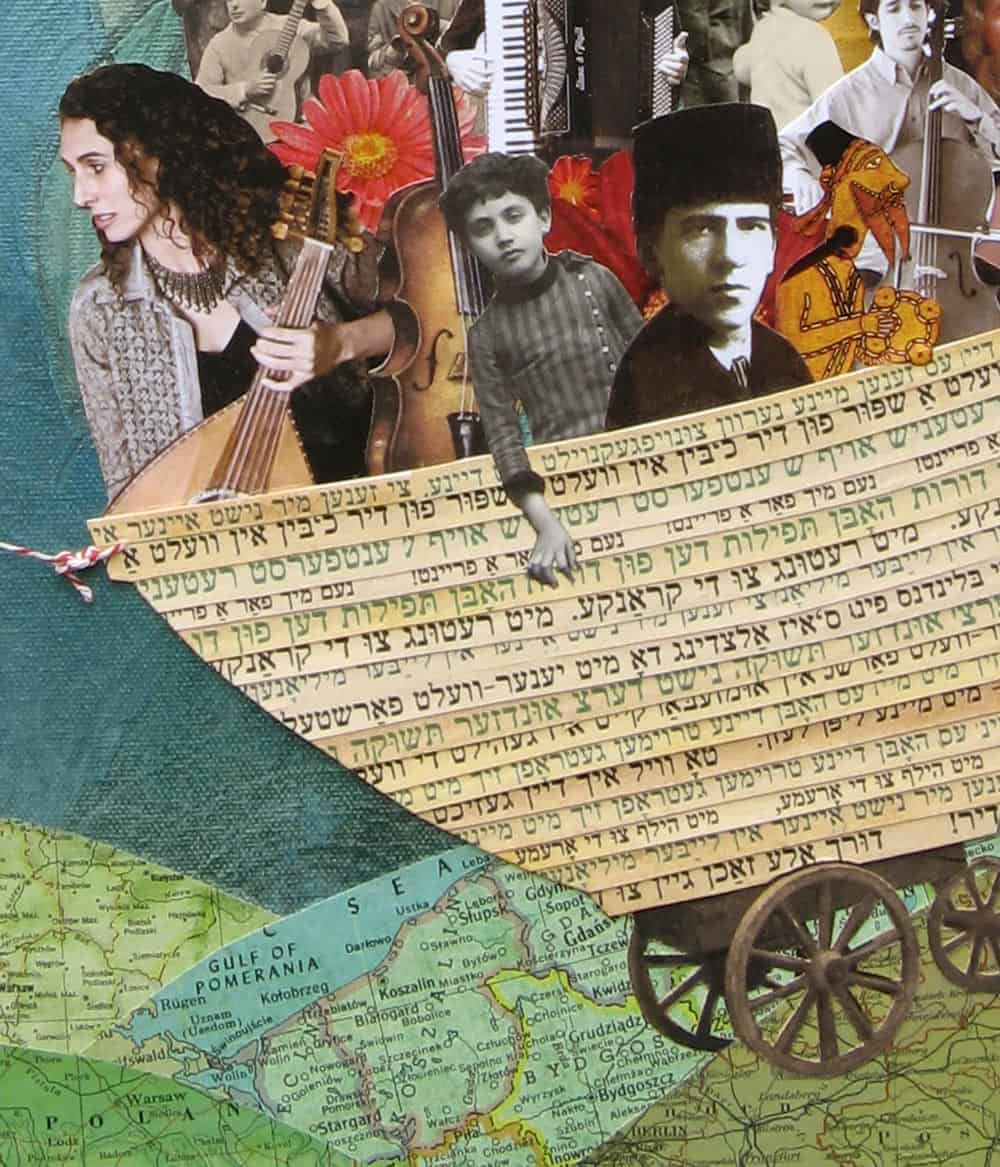
‘Good Work’ runs from April 29th to June 12th
Opening reception: Friday, April 29th 7-10pm
The Textile Arts Center, 505 Carroll St. between 3rd and 4th Ave in Brooklyn
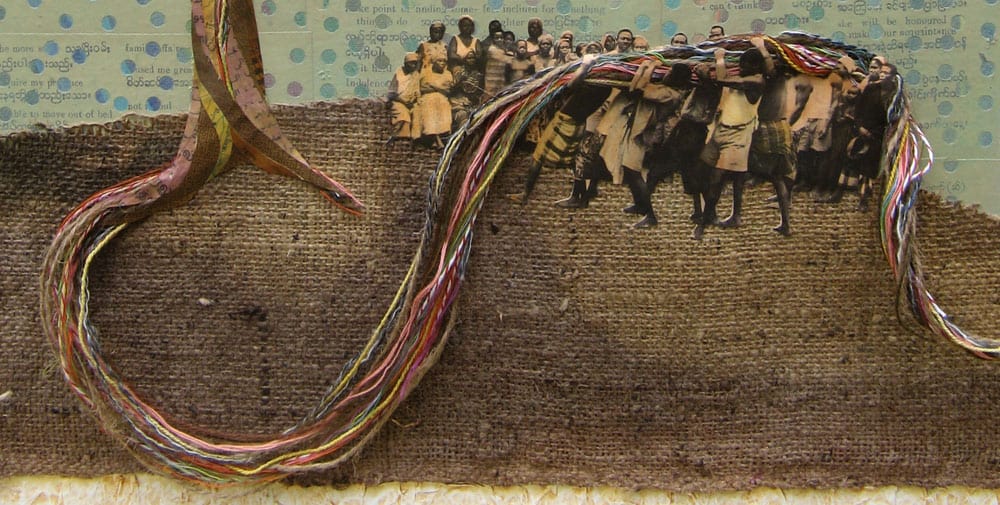
I am pleased to be participating in this group show about labor, justice, gender, fair trade, immigration, community, and craftsmanship. Artists include:Â El Hombre Sobre La Tierra in collaboration with Global Goods Partners, and Maya Valladeres, (image below from her Malleability of Memories series).
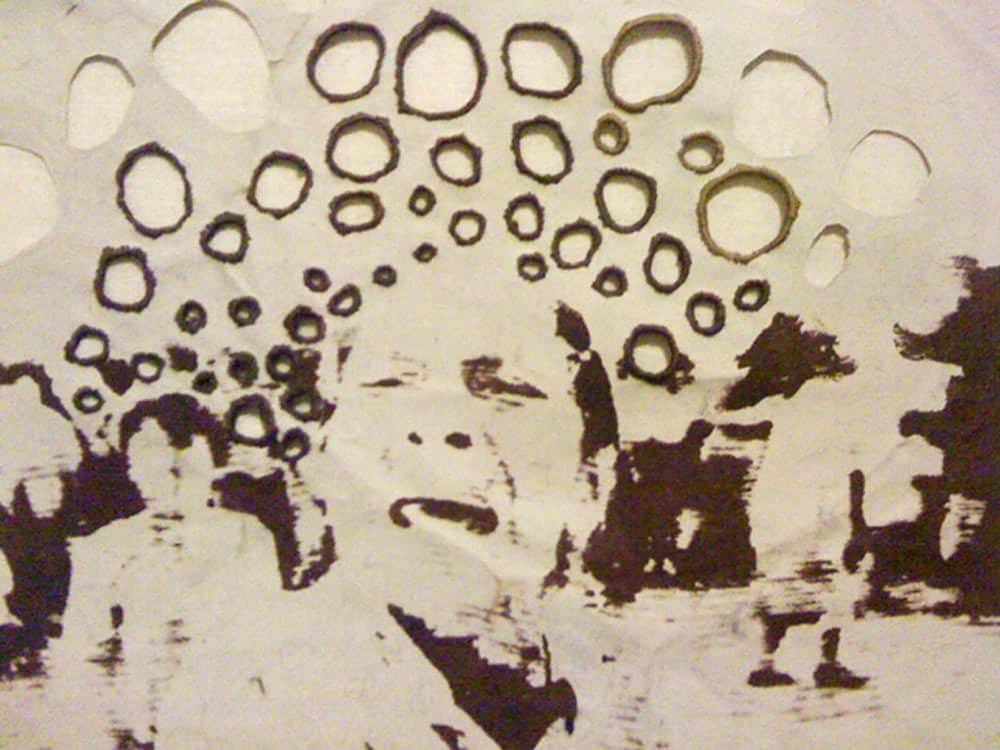
The Lives We’re Given, The Lives We Make | That Which Holds Us Together, That Which Pulls Us Apart | Landscape With Figures: Human Experience in the Natural World
These are the three sections of American Tensions, an incredible collection of fiction, poetry, and essays edited by William Reichard. He writes: This Anthology is full of threads and knots. If you enjoy discovering what connects each of us, the threads of experience and insight that translate across time, place, and culture, then you’ll likely enjoy the work you encounter here.
Published by New Village Press.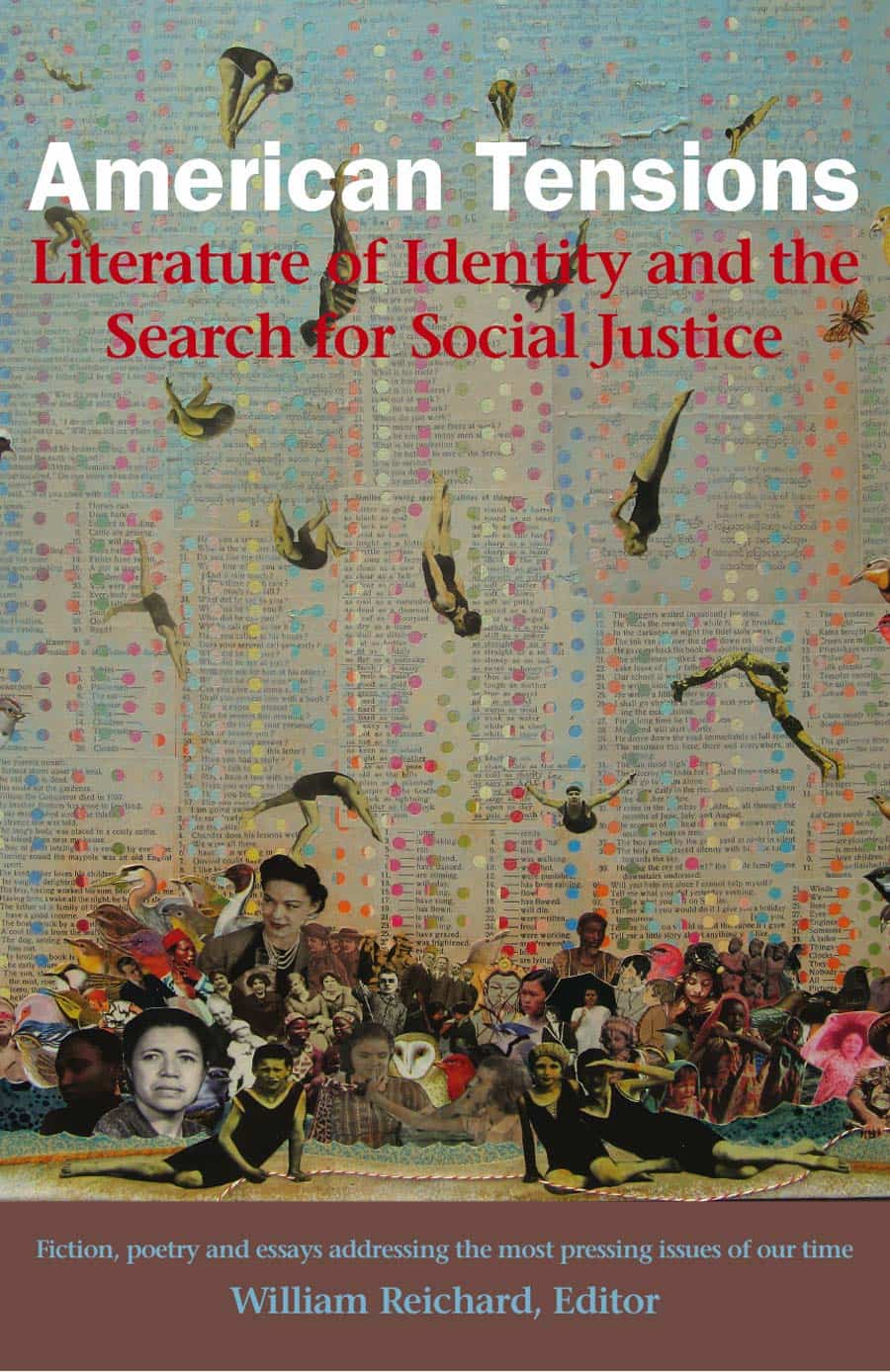
The April/May issue of American Craft Magazine pairs my illustration with the article Craftier Than Thou by Glenn Adamson.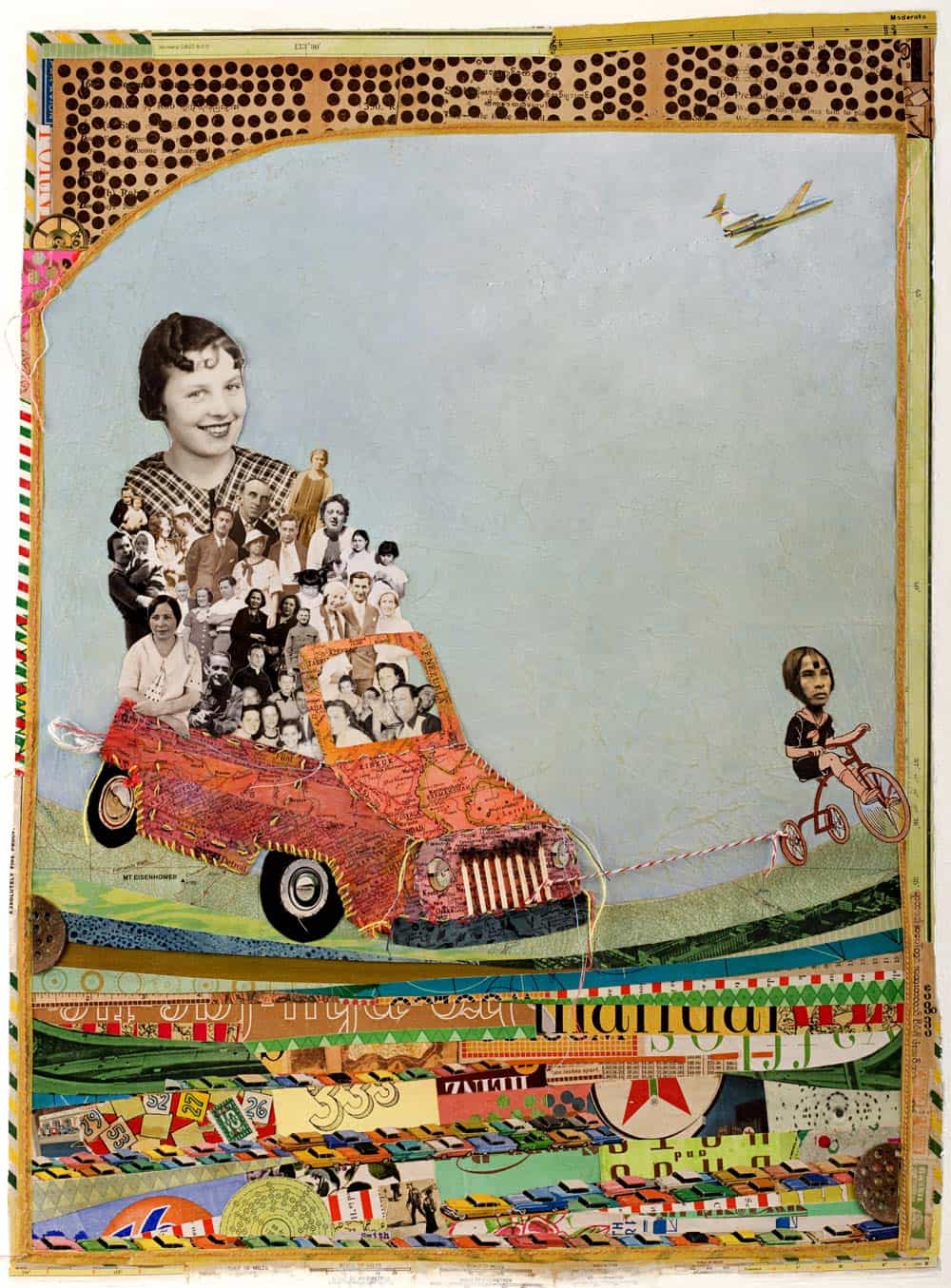
Writing about the idea of corporations using the concept of craft to sell their wares, Adamson refers to a Jeep Cherokee commercial, which states: The Things We Make, Make Us.
I felt a sense of duty to represent some of the people and places the commercial forgot to mention, the casualties of the Auto-man Empire. One page was not enough room to fit the story of Manaus and the Rubber Boom, The Cherokee themselves, the various landscapes of industrial ruins, and all the individuals in dozens of countries whose jobs and land were turned to scrap in the name of corporate craftsmanship. We forge ahead embracing debris and obsolescence.
Abigail Washburn’s amazingly beautiful City of Refuge cd has been released.
This album is quilted from scraps of Nashville, China, a cello banjo, Mongolian throat singing, a fiddle, a choir, some talk about plagues, the future of tradition, the drive for global collaboration, the wonder of human connection, and an homage to the folks who came before us.
She talks about some of those things in this great little video.
It is my honor and pleasure to have contributed the artwork for the cover, website and tour…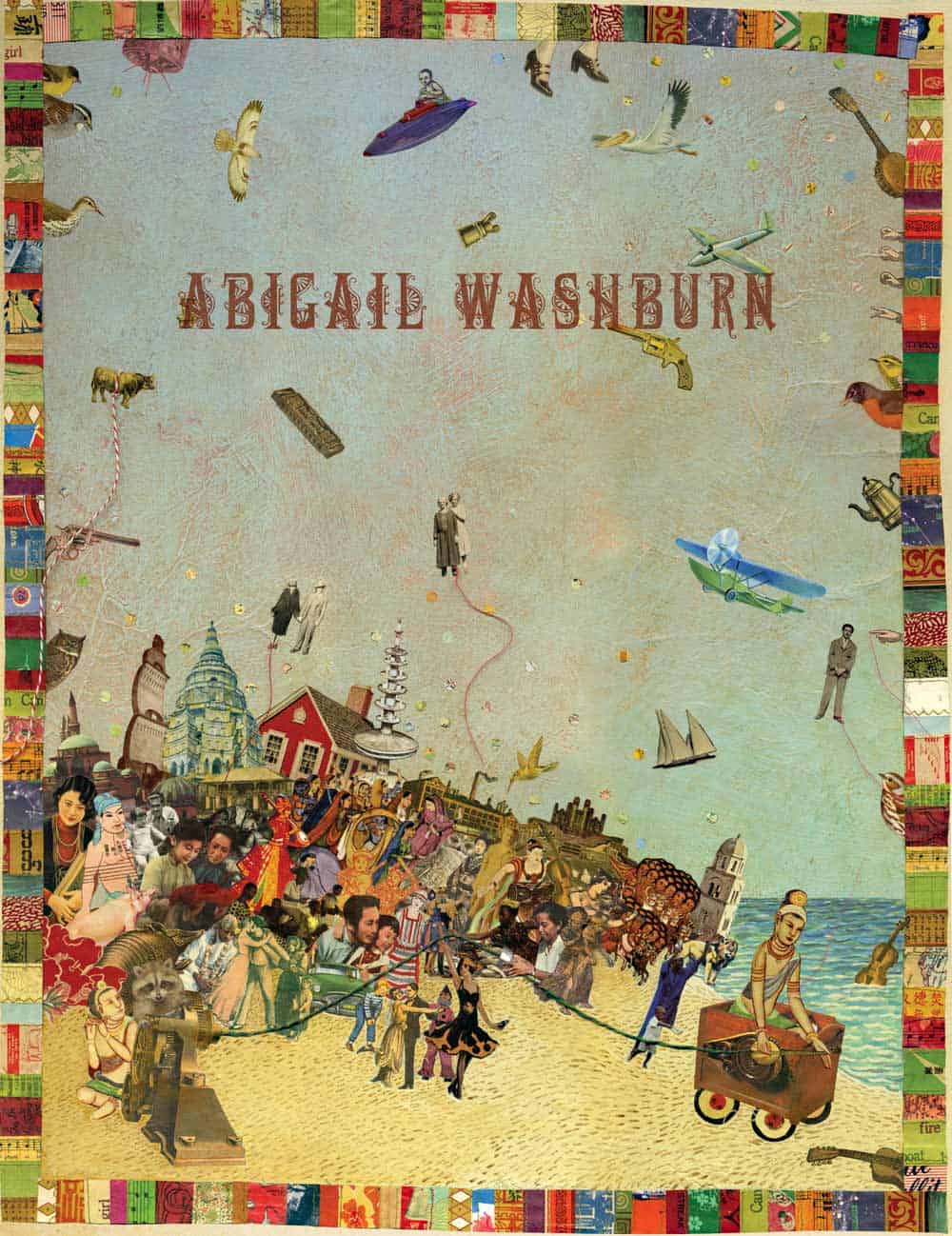

Cutting out some shelter and staining a mass of humanity for the poster…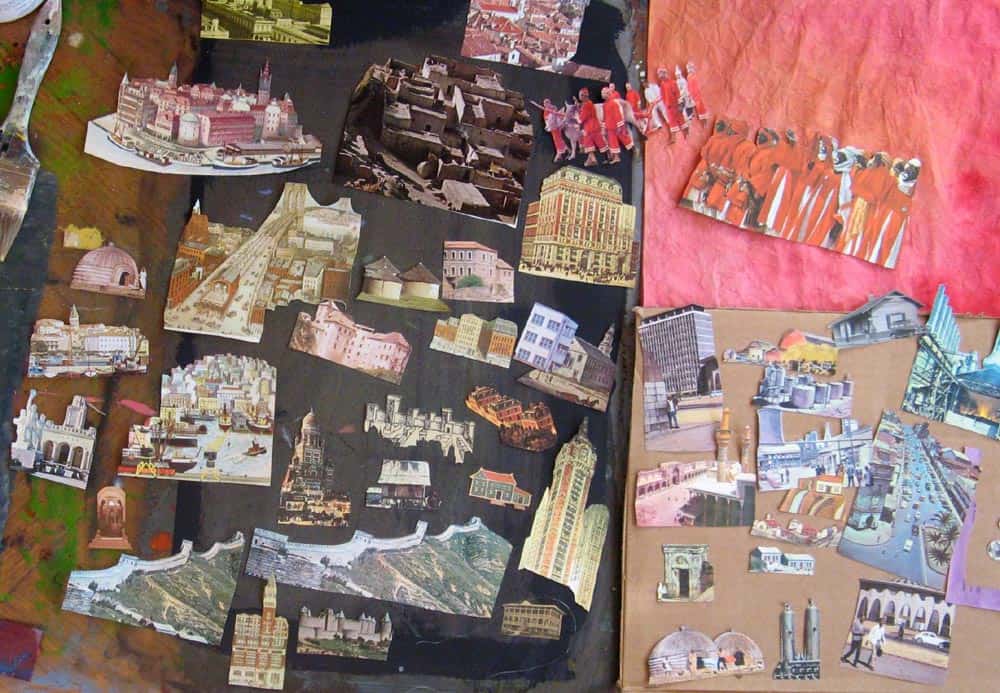
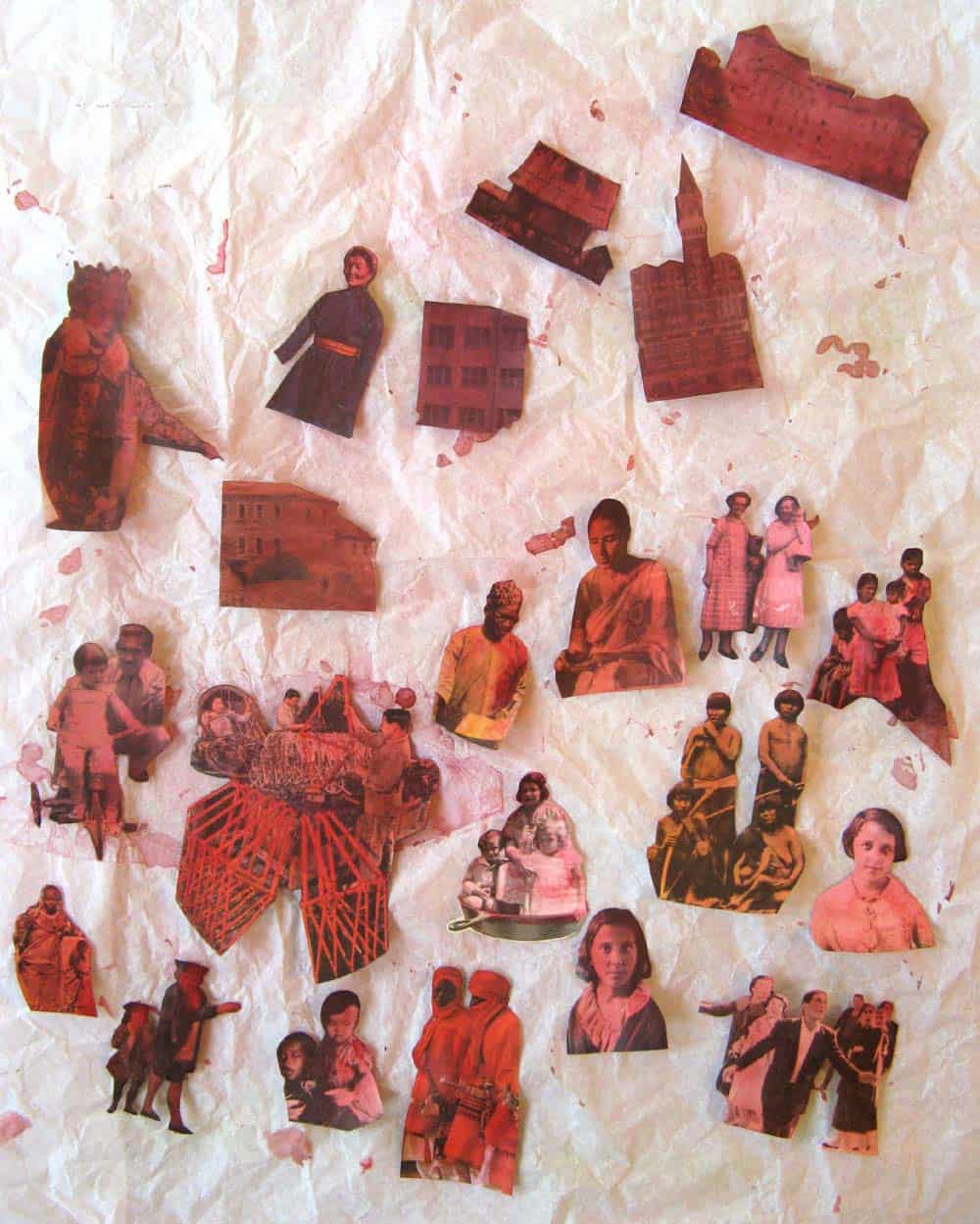
Adding my grandparents, a monk, anonymous mid-century people doing good work, a doily from a cookie box of Katherine Holman’s (cookies recreated from Aunt Violet’s original recipes) and a rabbit for good luck…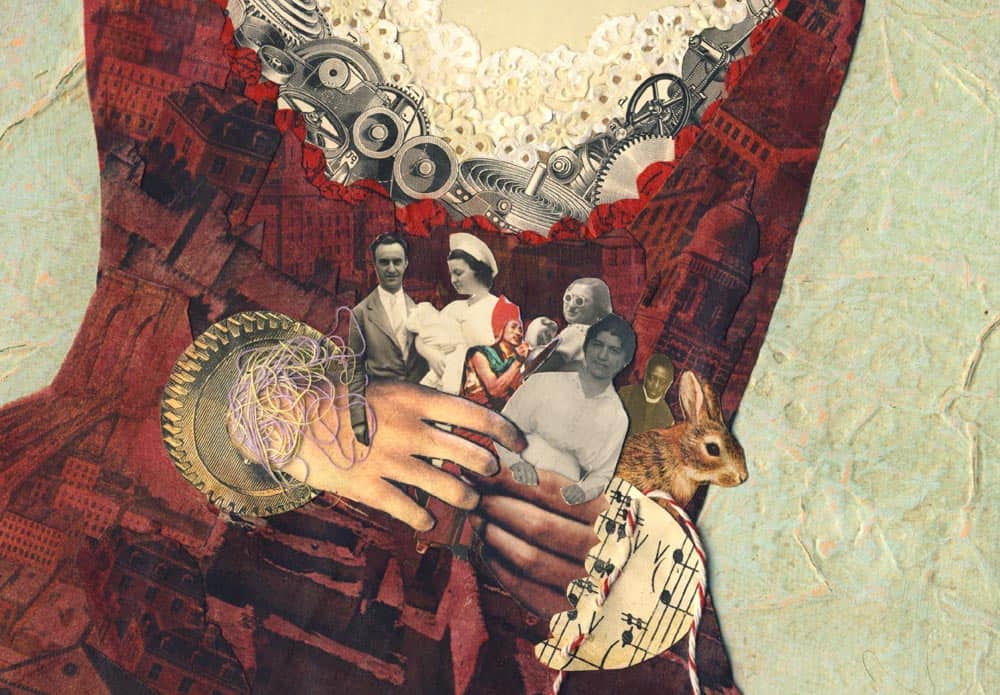
And an ominous incident over a mantle woven from Crescent Lake, Broken Bow, Bikando, Yangchow, Soochow, Ogallala, North Platte, Kyoto, Chinan, Kumos, Wuch’ang, Alma-Ata, Fengyuan, Keriya, Baba Hatim, Bon Aqua, Abiff, Lyles, Graham, Vernon, Only, Hurricane Mills, Scobell Island, Lucy Point, Kodak, Knoxville, Melville, Cuba Landing, Sugar Tree, Holladay, Yuma, Juno, Alberton, Coxburg, Lexington, Kimball, Sterling, Brush, Big Springs, Wildersville, Springcreek, Beech Bluff, Jackson, Oakfield, Coalfield, Windrock, Oliver Springs, Byington, Wartburg, the bends of Clinch, Bemis, Kamakura, Gomdu, Ndele, Gamane, Beri, Bimba, Jaunde, Jengone, Dancyville, Keeling, Denmark, Laconia, Germantown, Daylight, Campaign, Rock Island, Noah, Kuerhlo, Kara Shahr, Turfan, Telli, Bulun Tokh, Ulughchat, Kashgar, Zaysan, Crab Orchard, Guma, Kobdo, Ulaan Uul, White Earth, Marylebone Point, Frogue, Zula, Susie, Alpha, Gartok, Chandigarh, Meerut, Moradabad, Jaipur, Agra, kanpuro, Lucknow, Varanasi, Katmandu, Montezuma, Finger, Milledgeville, Selmer, Serles, Pocahontas, Chewalla, Swift, Gillises Mills, Olivehill, Martins Mills, Lutts, Pickwick Lake, Cypress Inn, Gatliff, Moscow, Murtea, Mienyang and other places nearby.
Milkweed editions has just released ‘The Nine Senses’, Melissa Kwasny’s fourth book of poetry.
She writes about ghosthandkerchiefs, being dead and almost dead, the migration of birds, water, being mute, bridges, burlap, flour-bags, cloaks, shrouds and sacred cloth, venetian glass, linen and salt, frosting and a Cold Milk Moon, where the women of myths and fruit trees intersect, and almost every color.
Thank you, Melissa! I feel very at home on the cover of this lovely book. 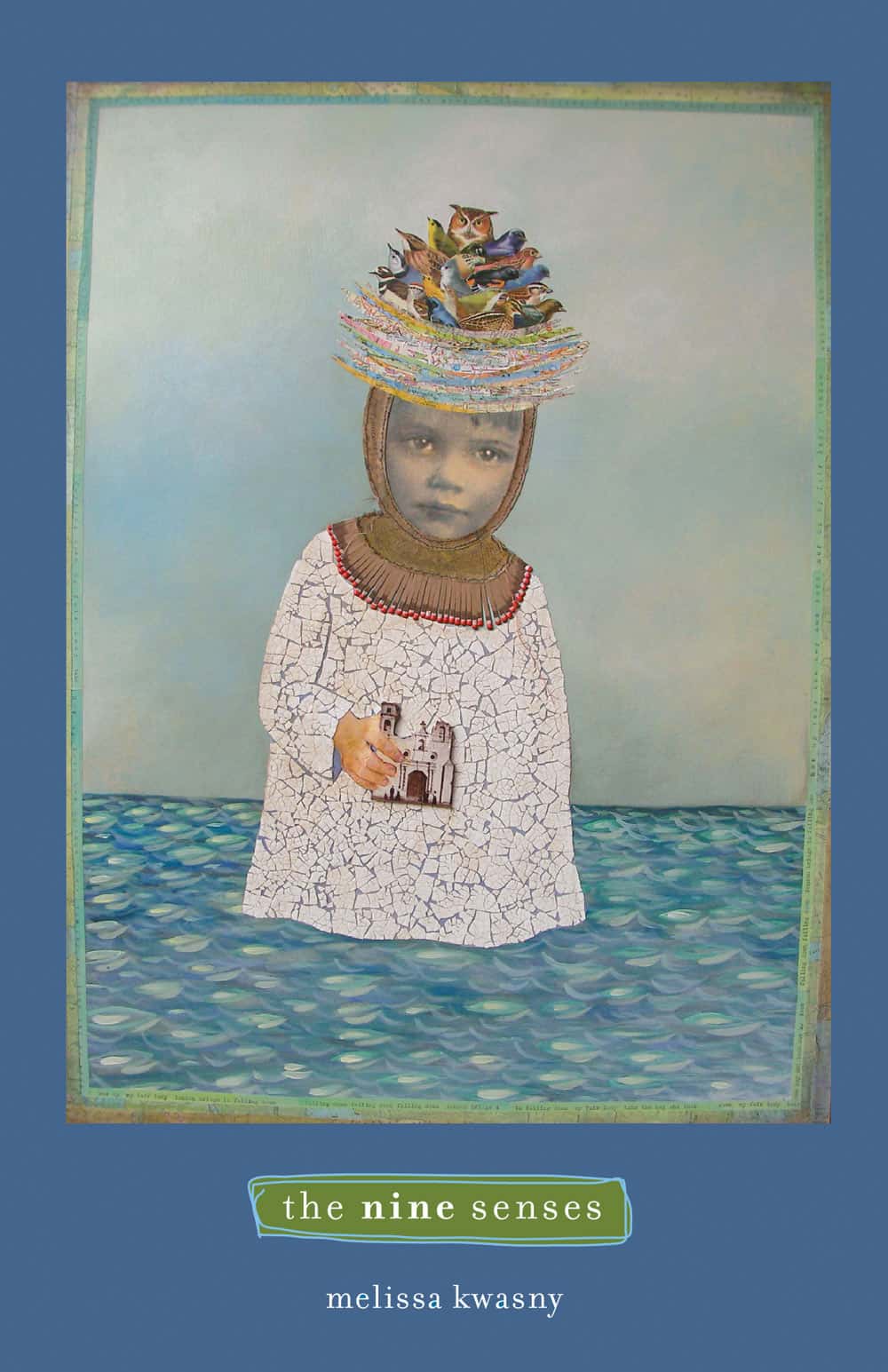
Lynn Malizewski from Bomb Magazine visited my studio, asked me some questions, and wrote This Article


Milkweed Editions celebrates 30 years of independent publishing with this book, Metamorphosis.

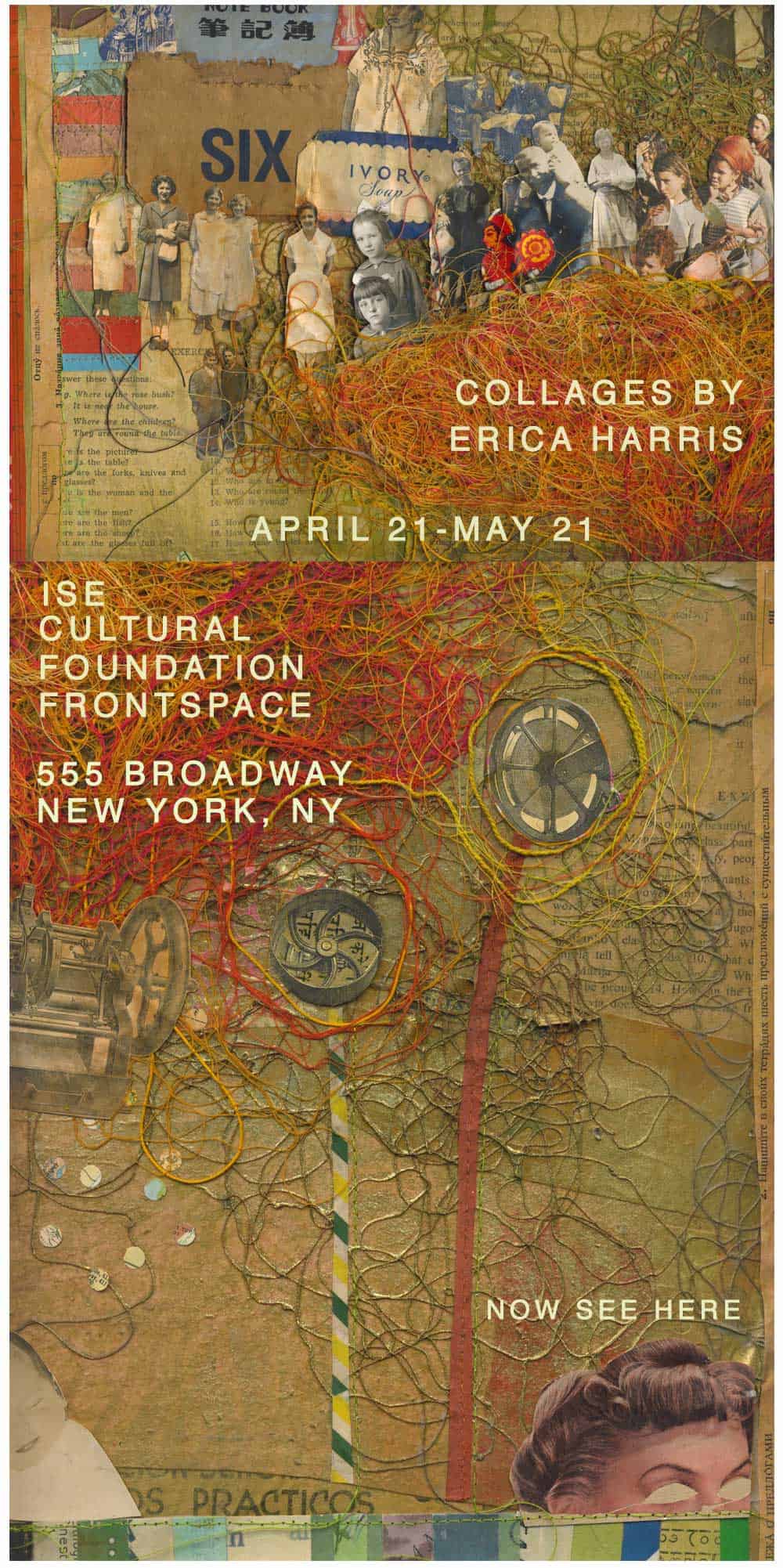
ISE Cultural Foundation Front Space
555 Broadway at Prince St. New York, NY
Gallery hours Tues-Sat 11-6
212. 925. 1649
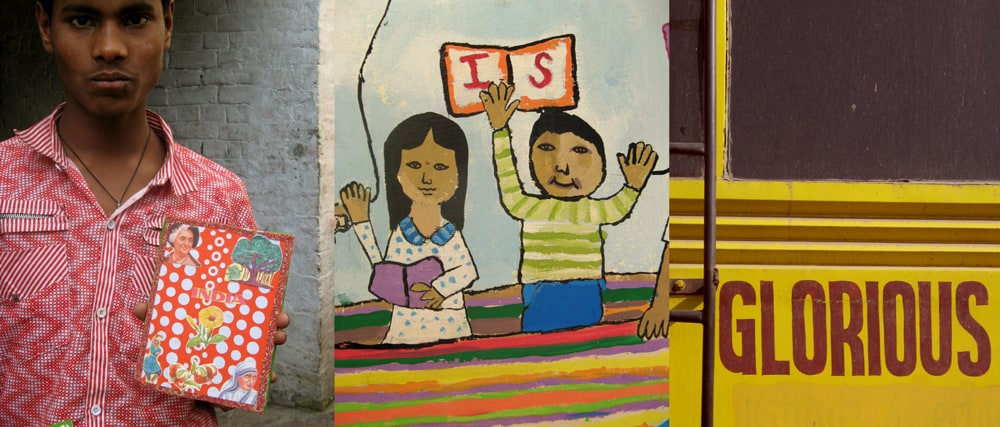
I’ve just returned from six weeks in Varanasi, India.
I have some answers and I have some questions:
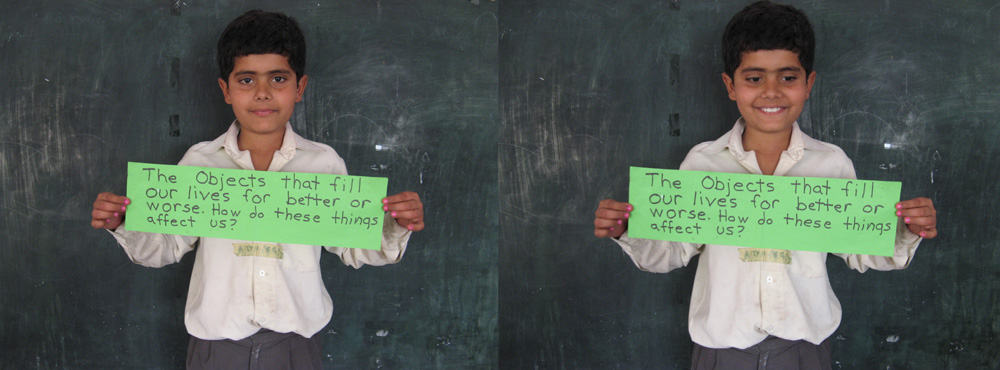
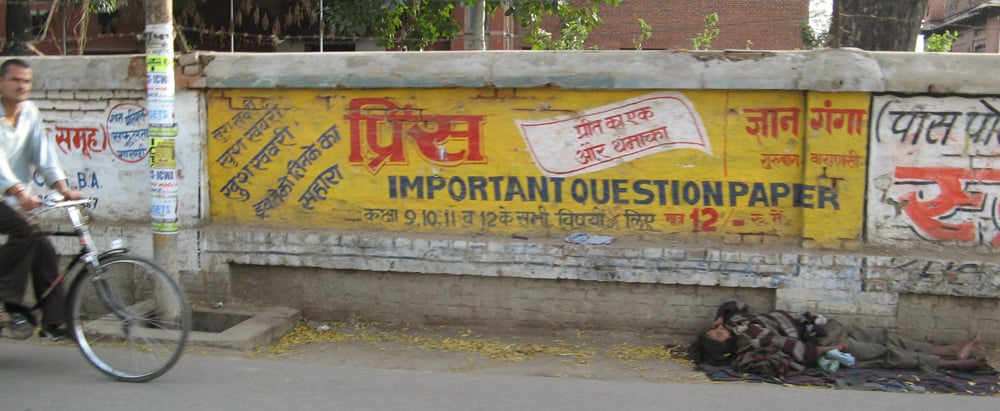

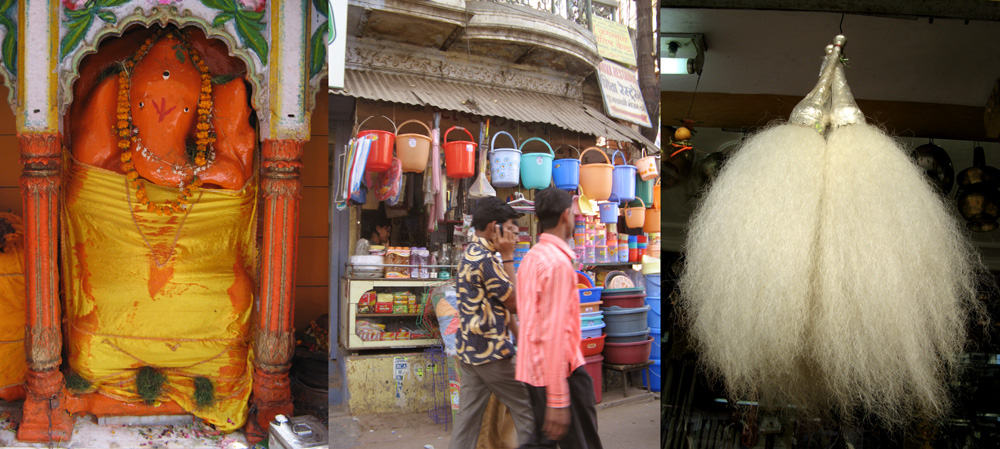
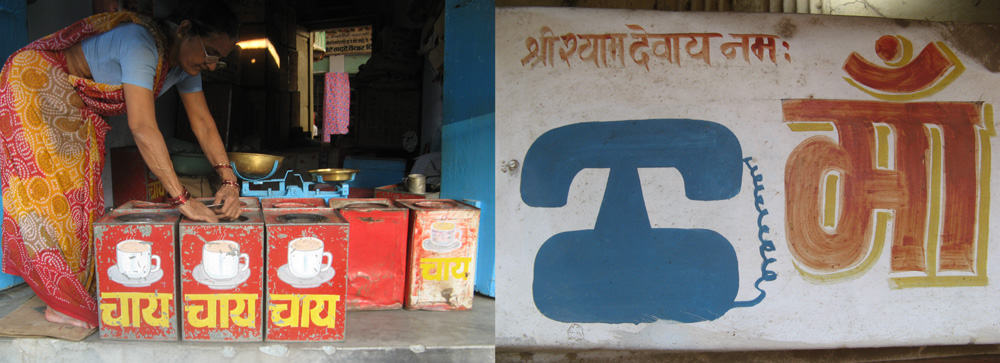
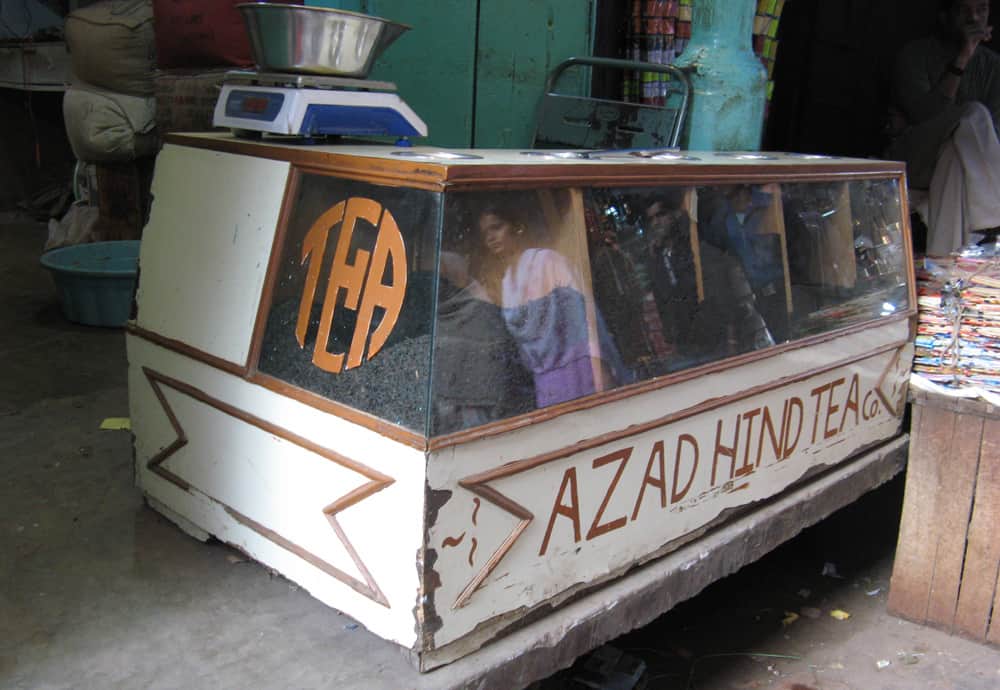
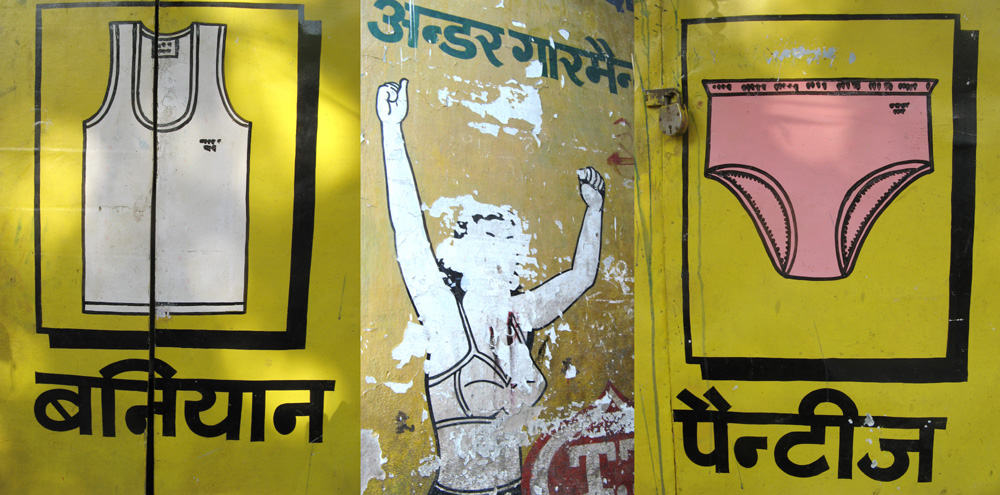
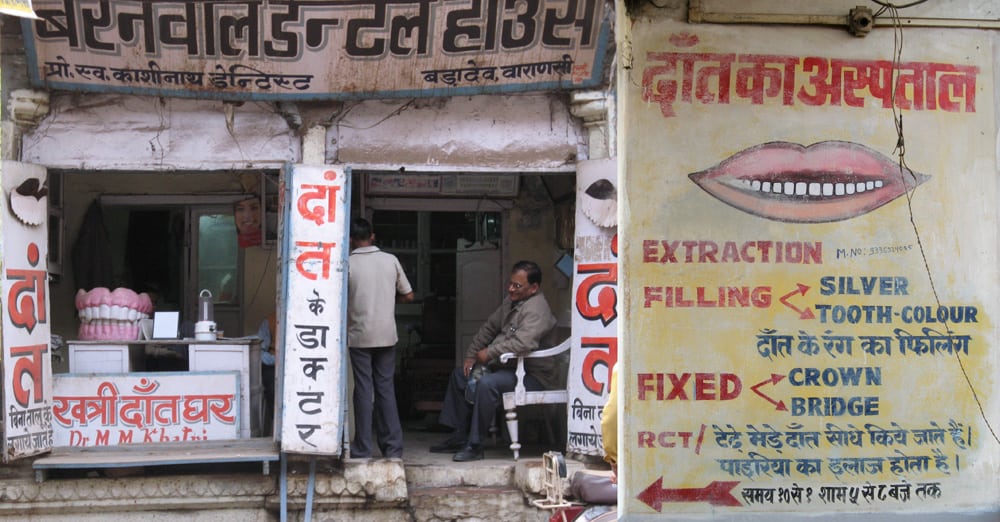
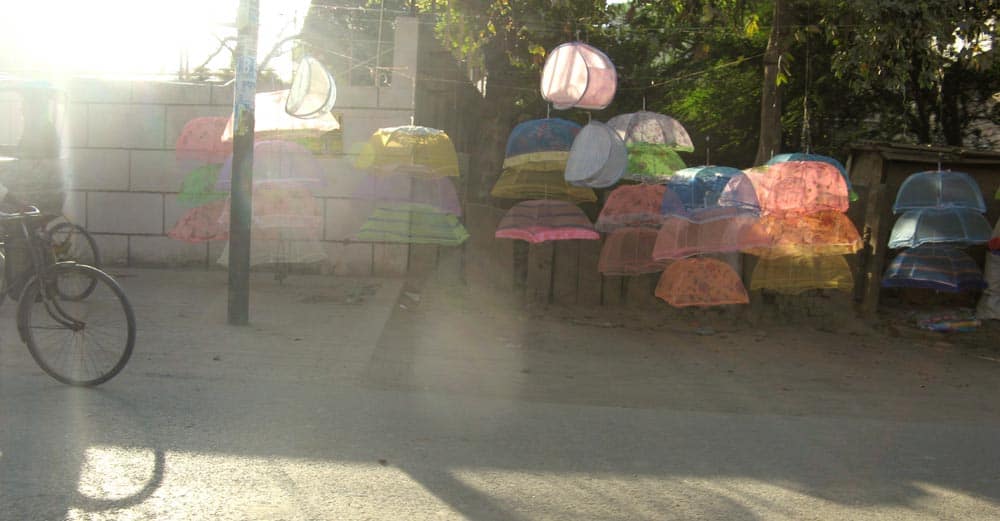

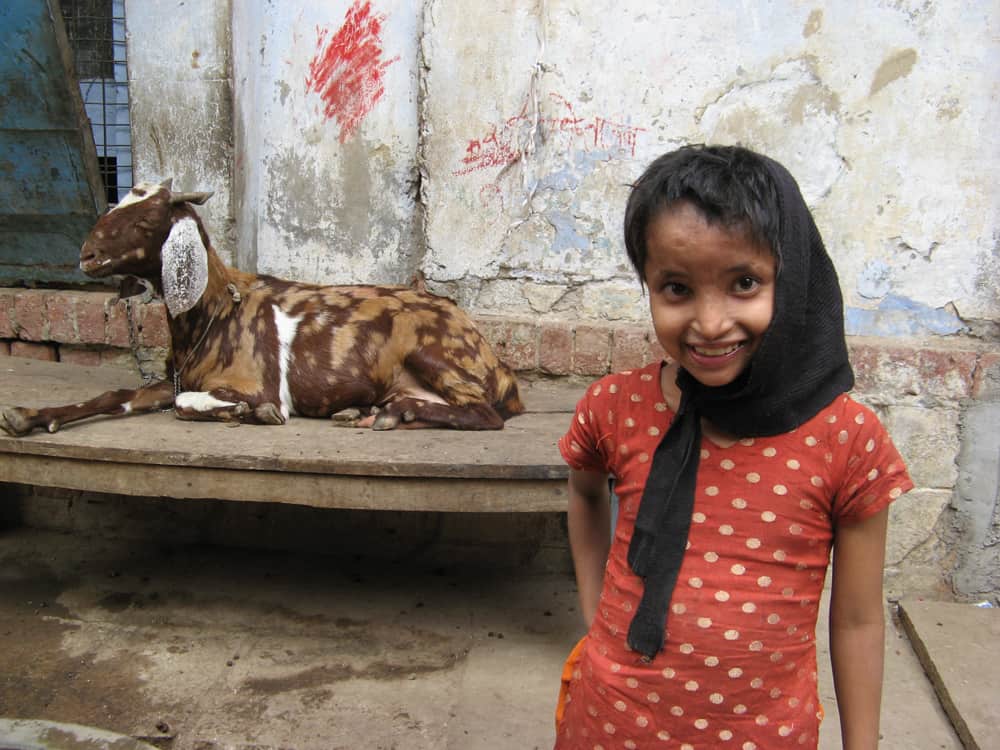
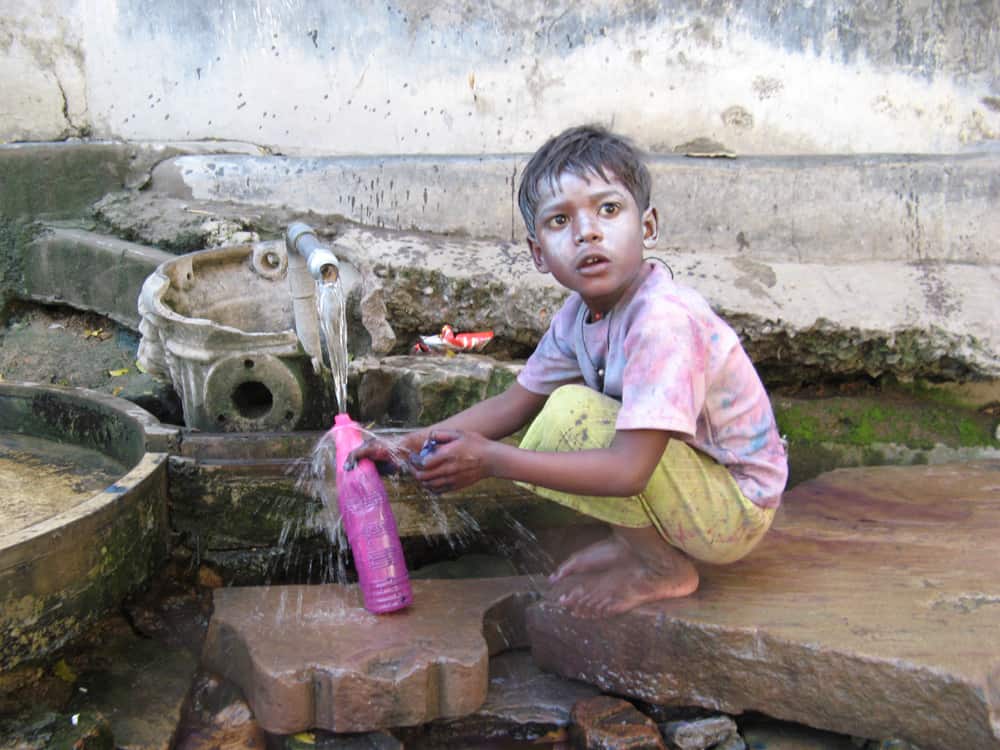
It was my great privilege to be able to work with some of the city’s most outstanding young artists. Continue reading
Urban Beautification with kindergarten-2nd graders at P.S. 74 Future Leaders Elementary School in Staten Island, NY, 2011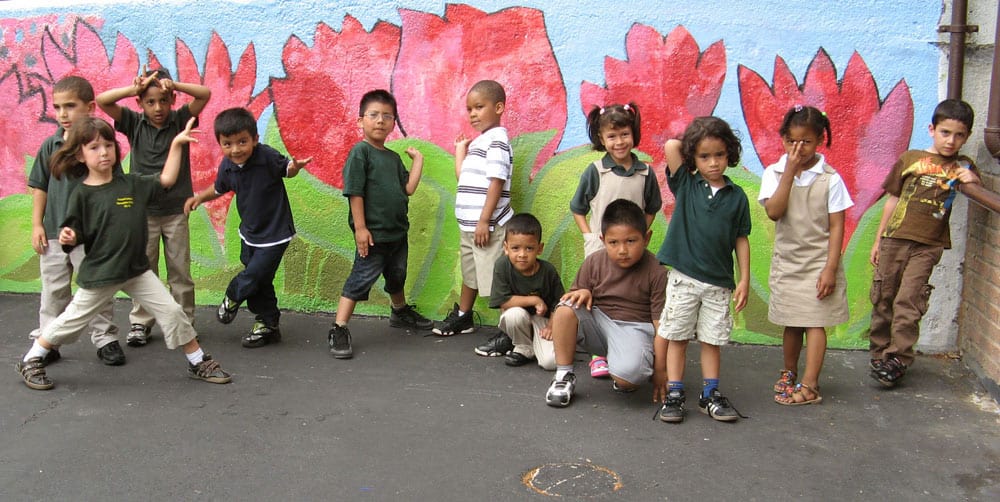
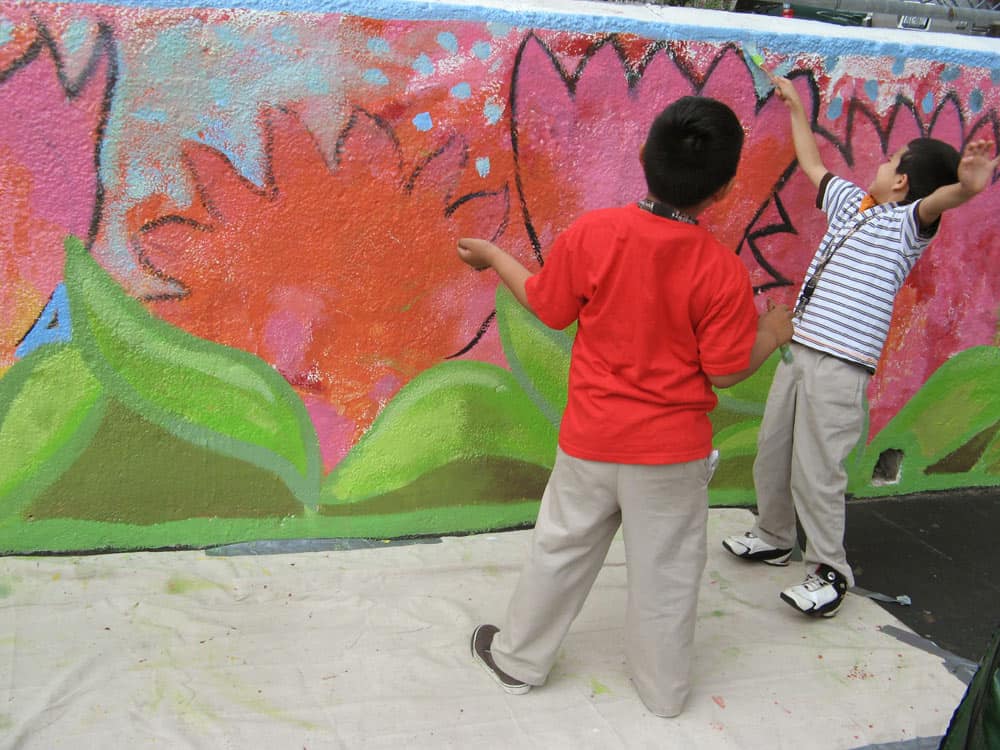
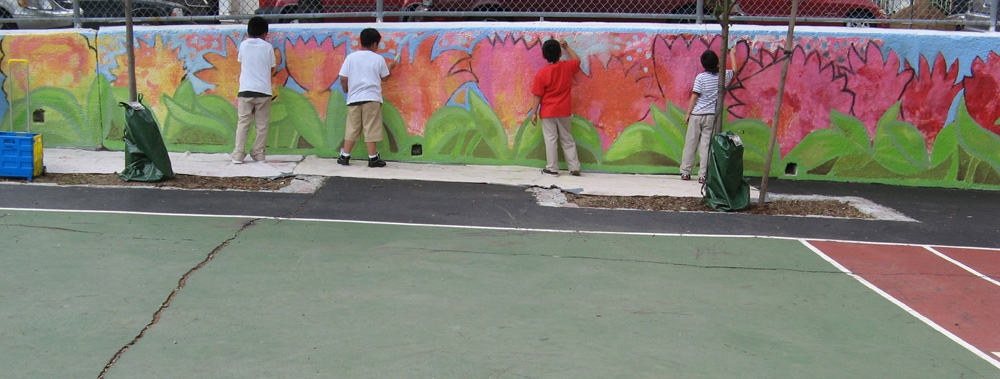
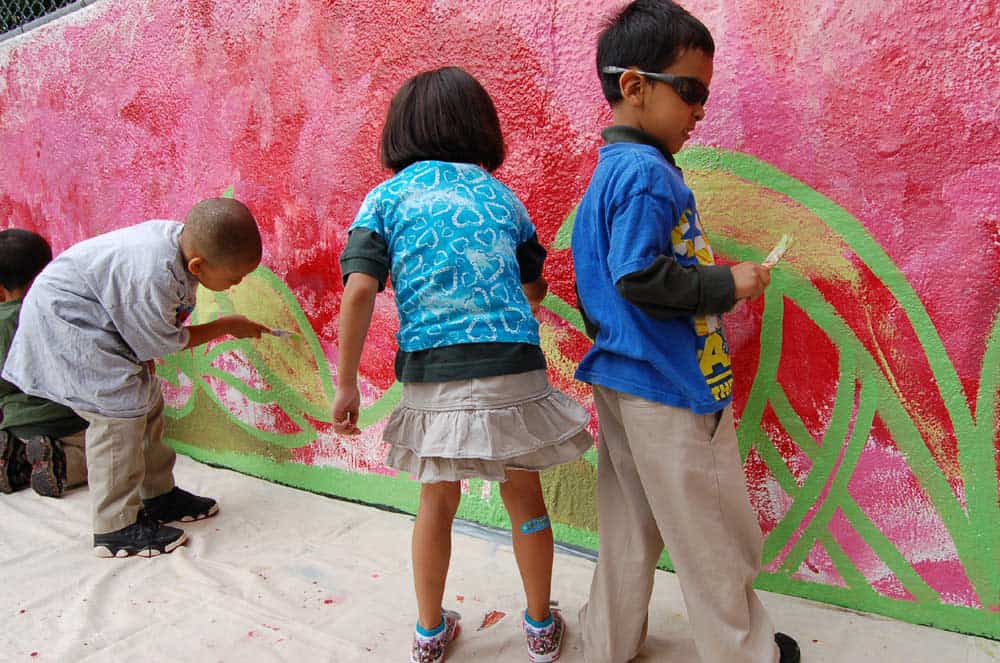

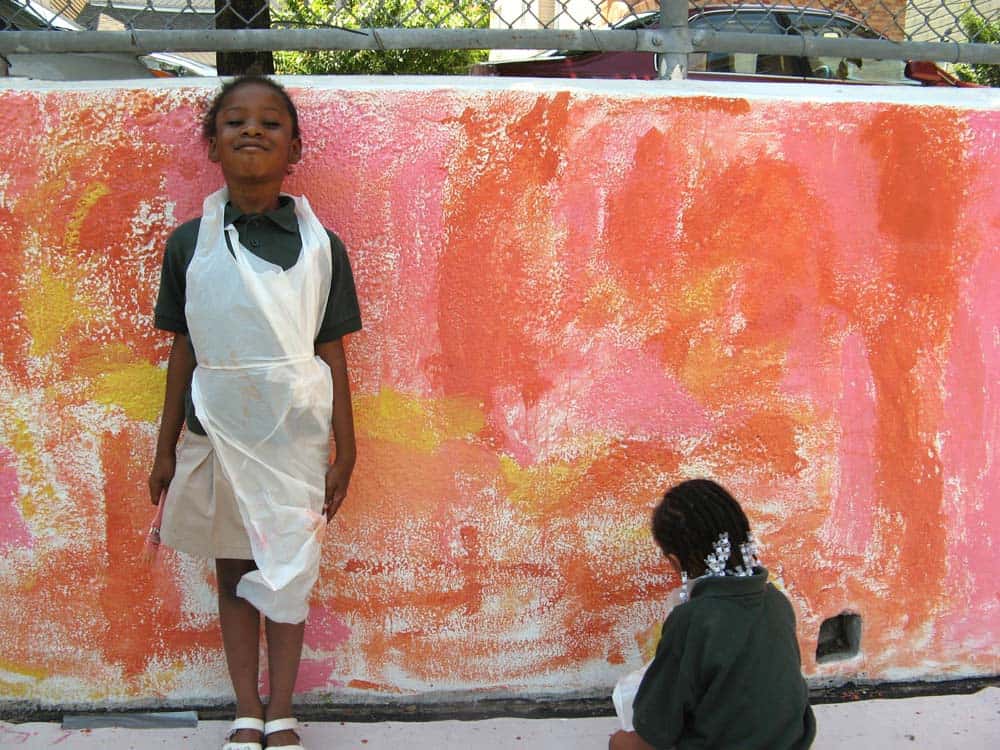
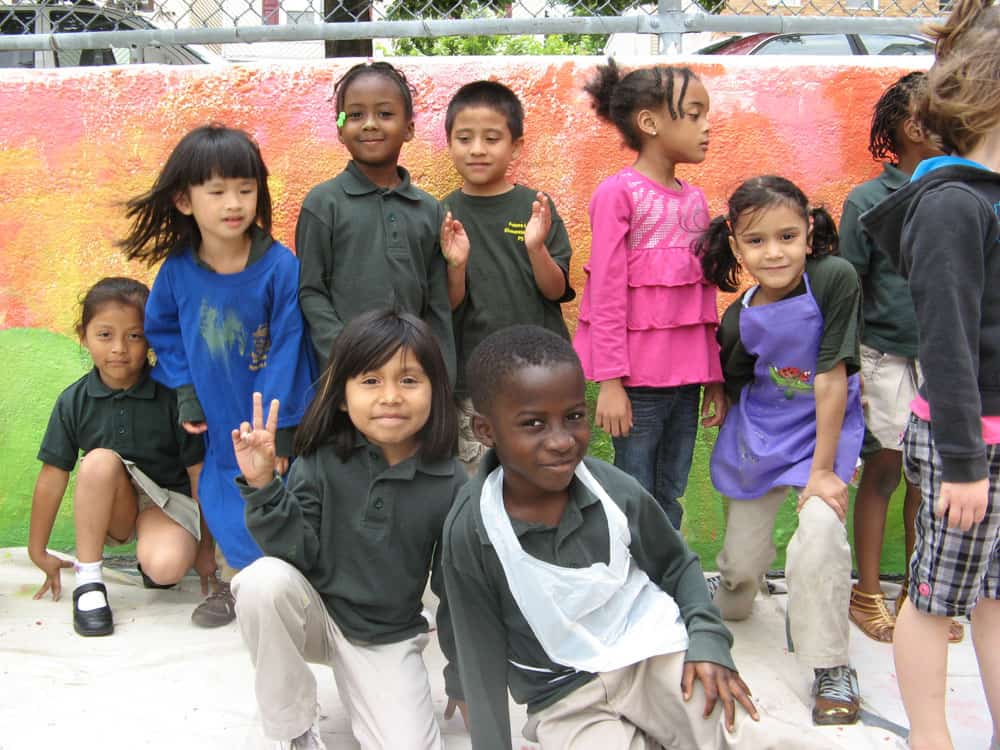
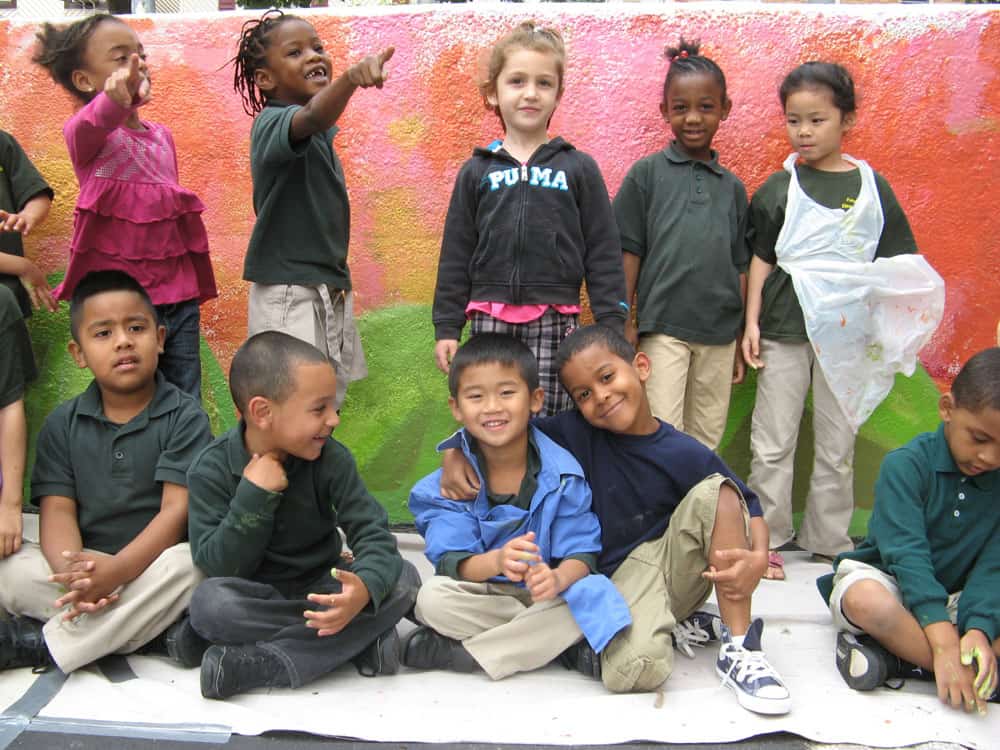
Our neighborhood: New Dorp Lane with the 3rd grade class of PS 41, Staten Island, 2011
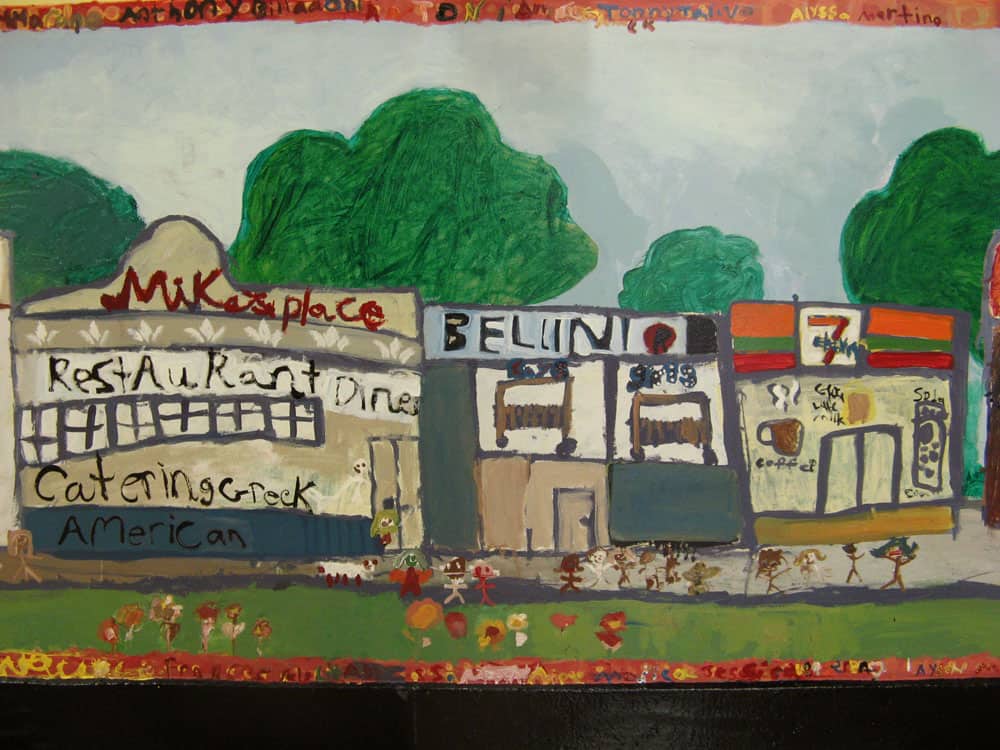
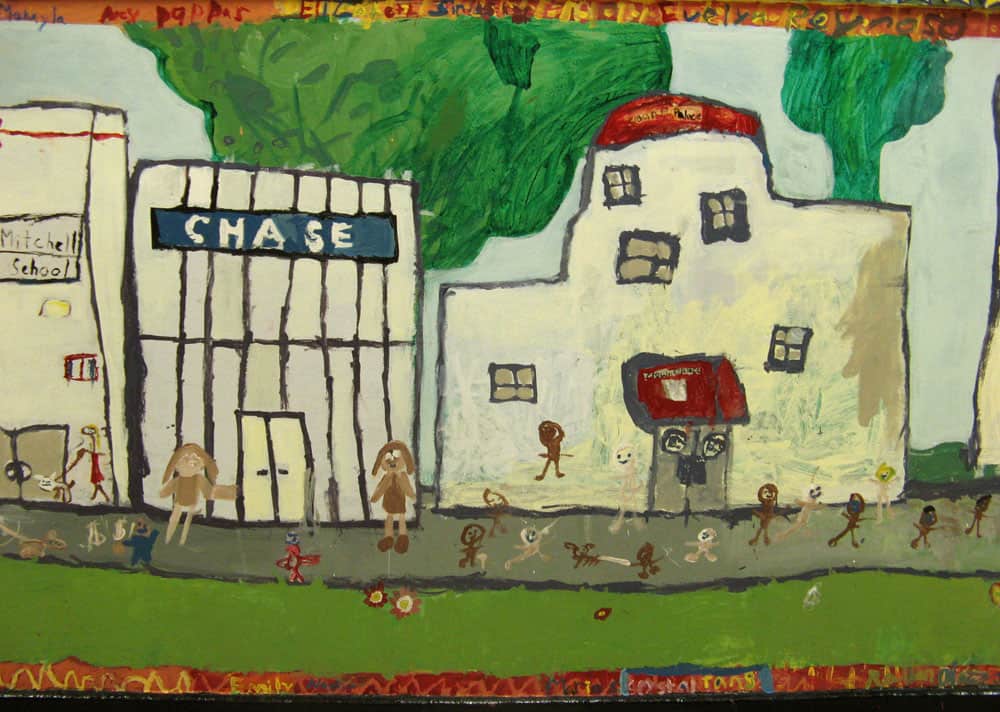
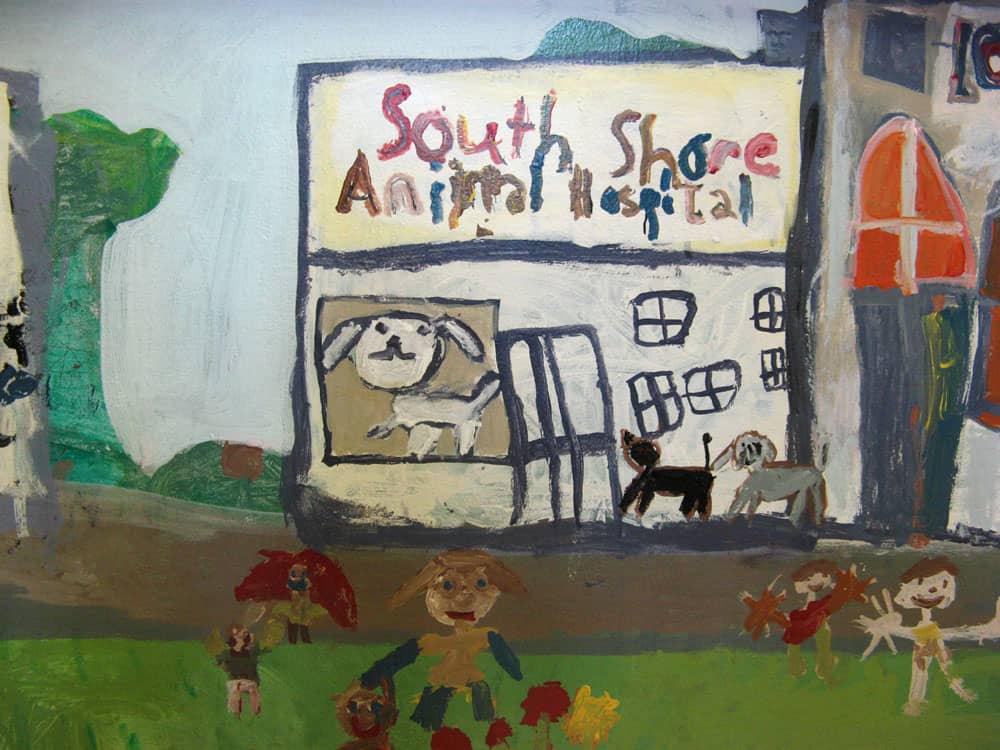
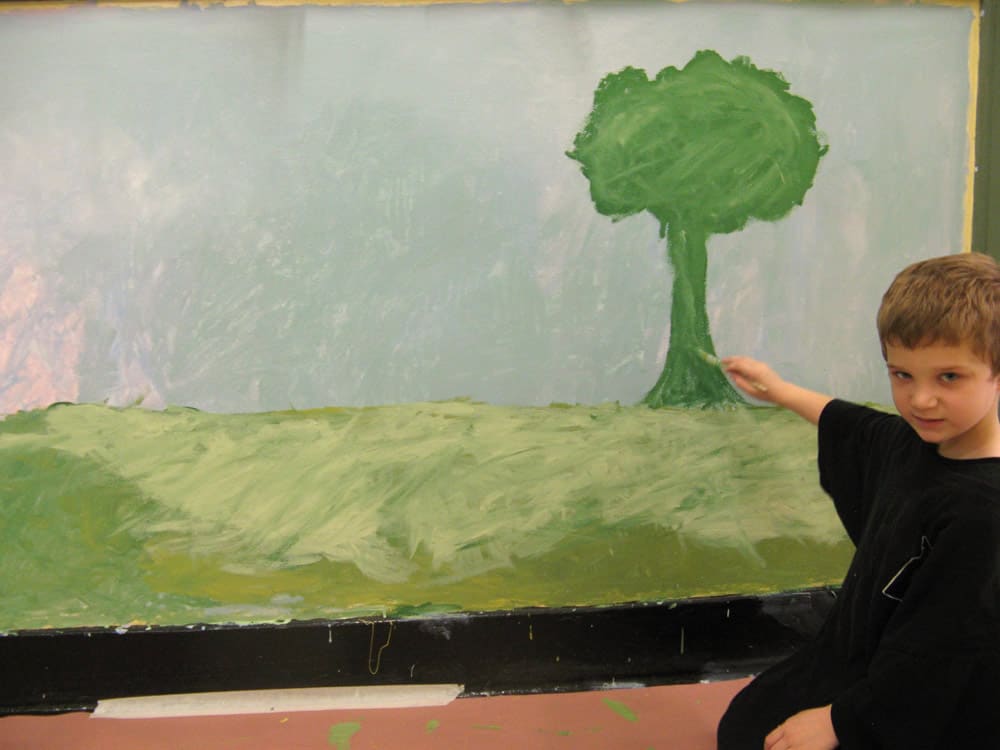

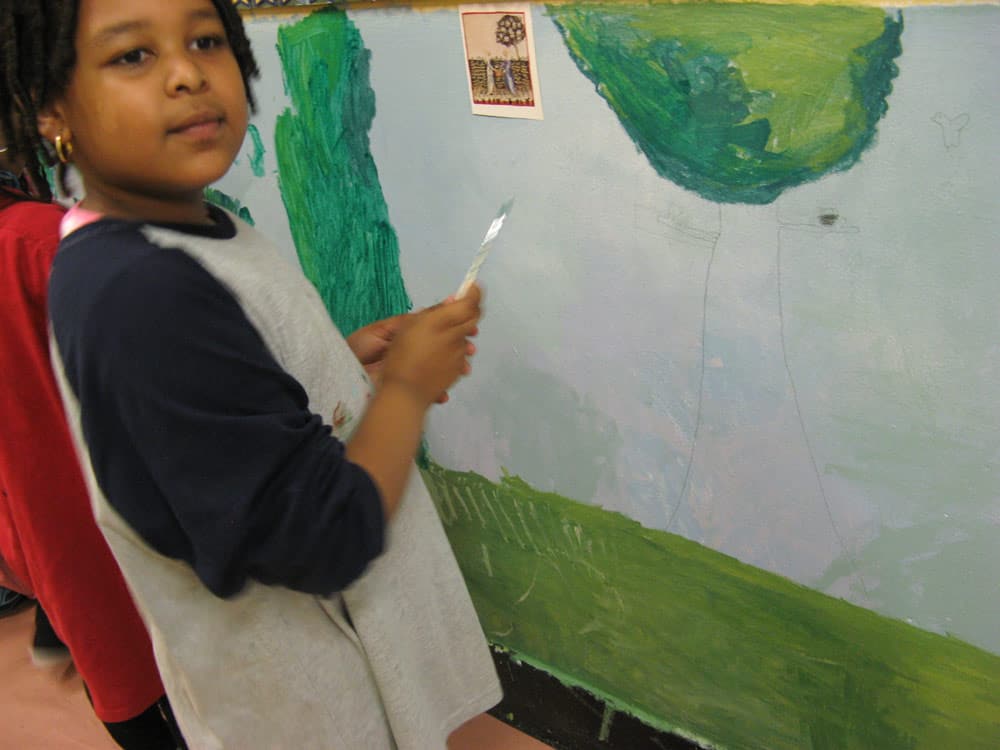
Action Word Wall with 3rd-5th graders at PS 261 in Brooklyn, 2008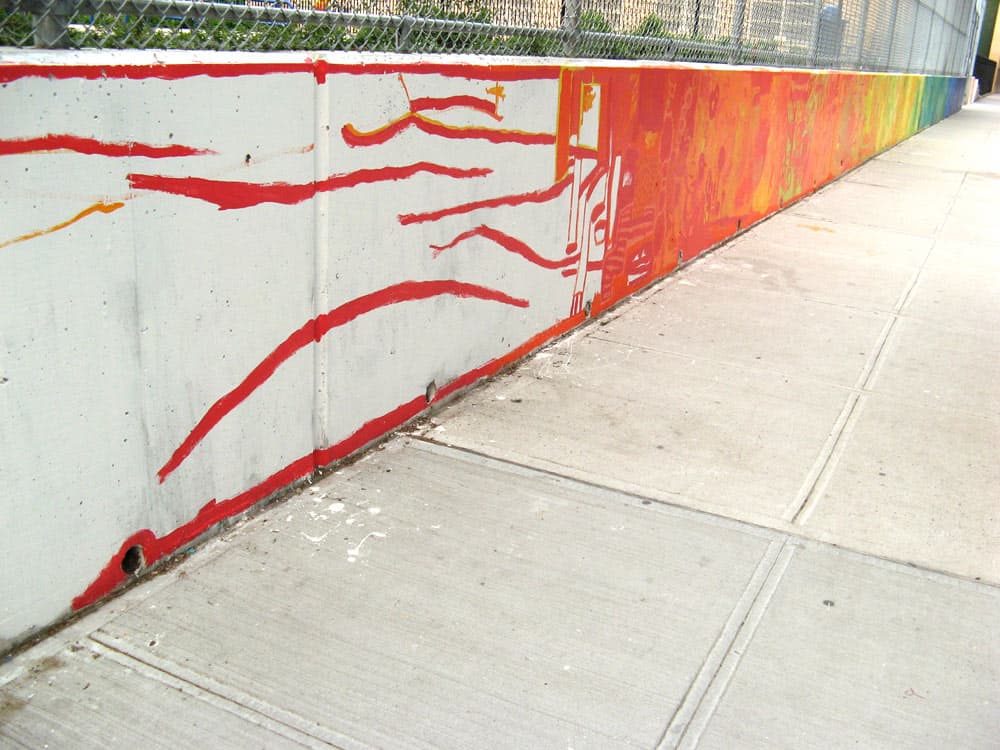
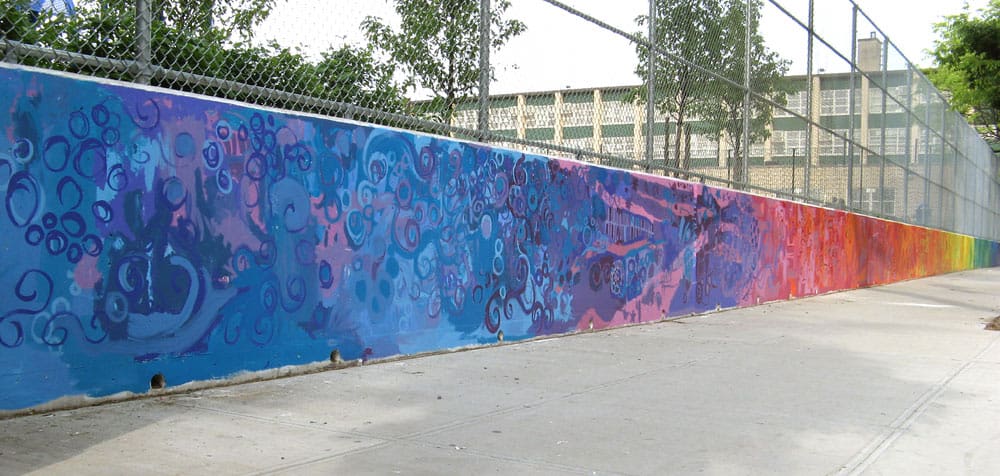
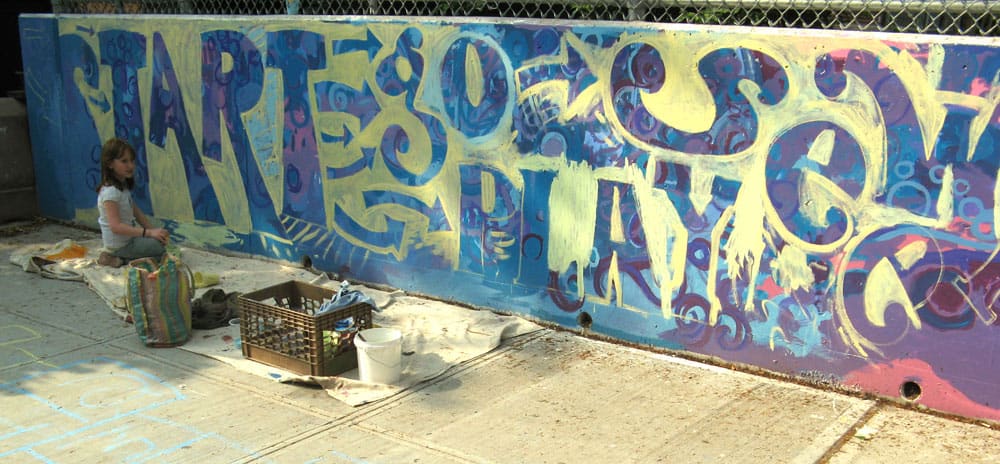
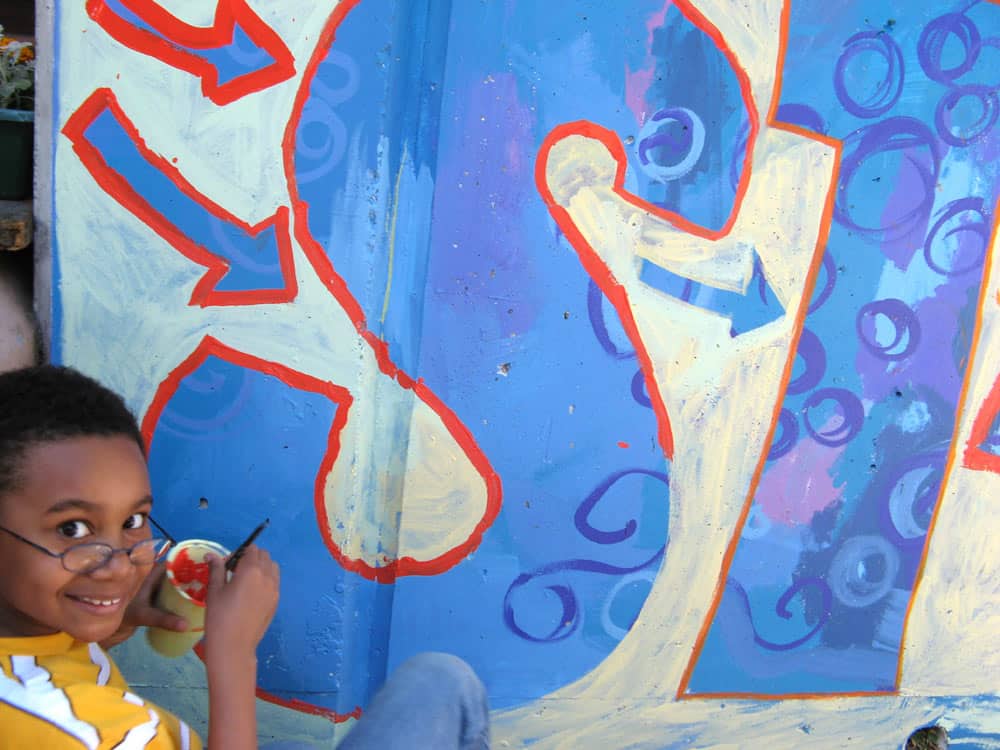
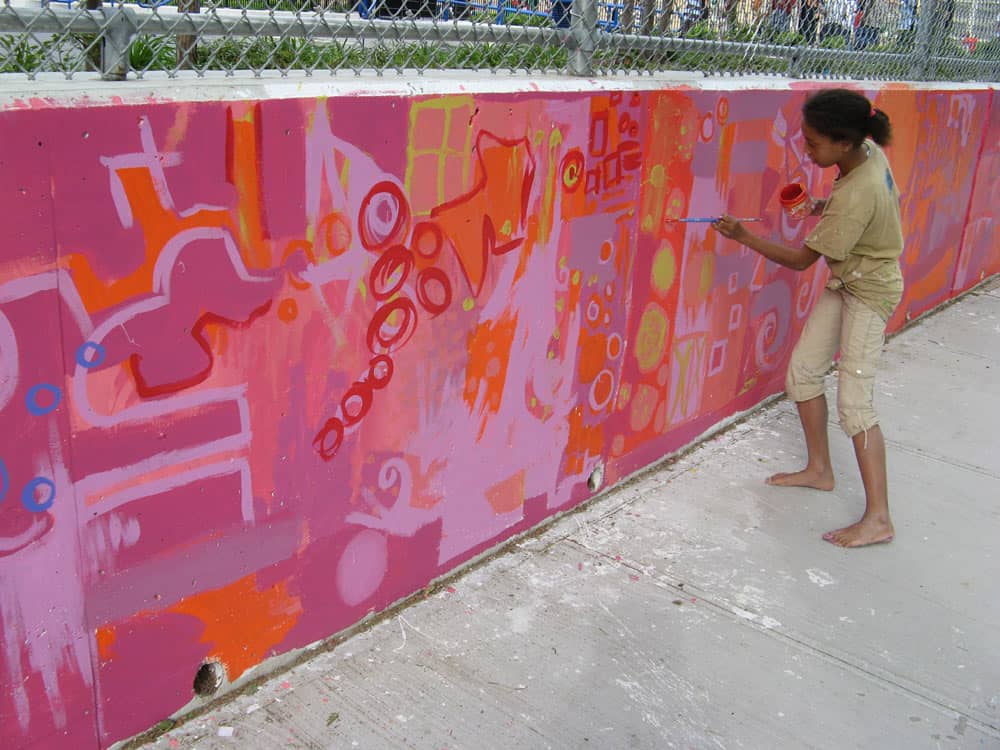
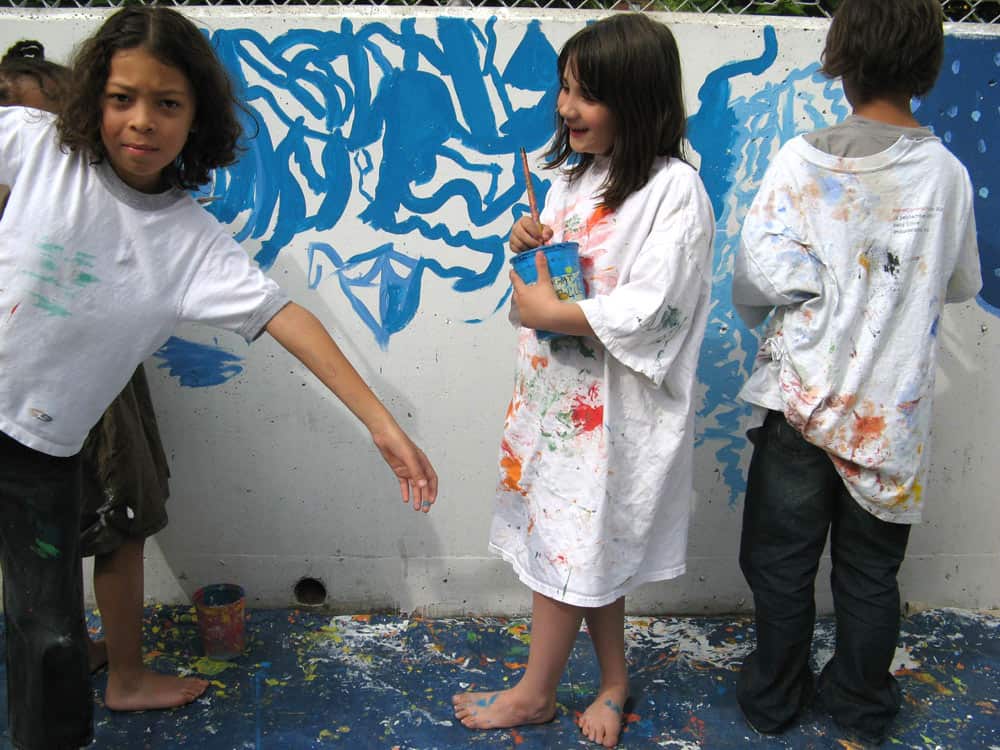
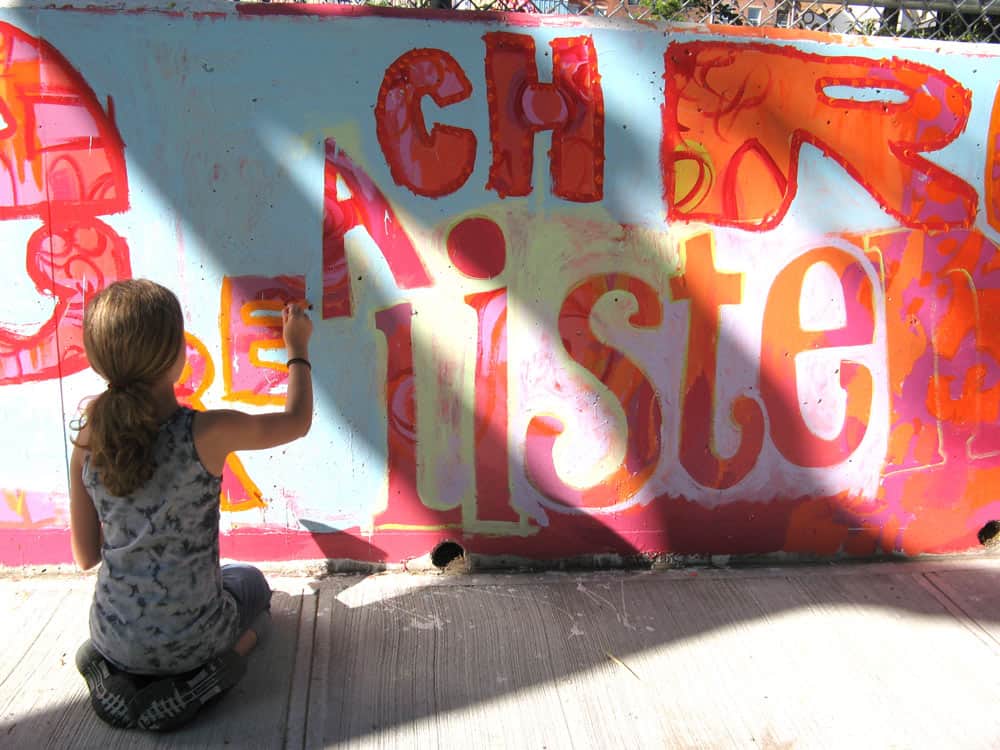
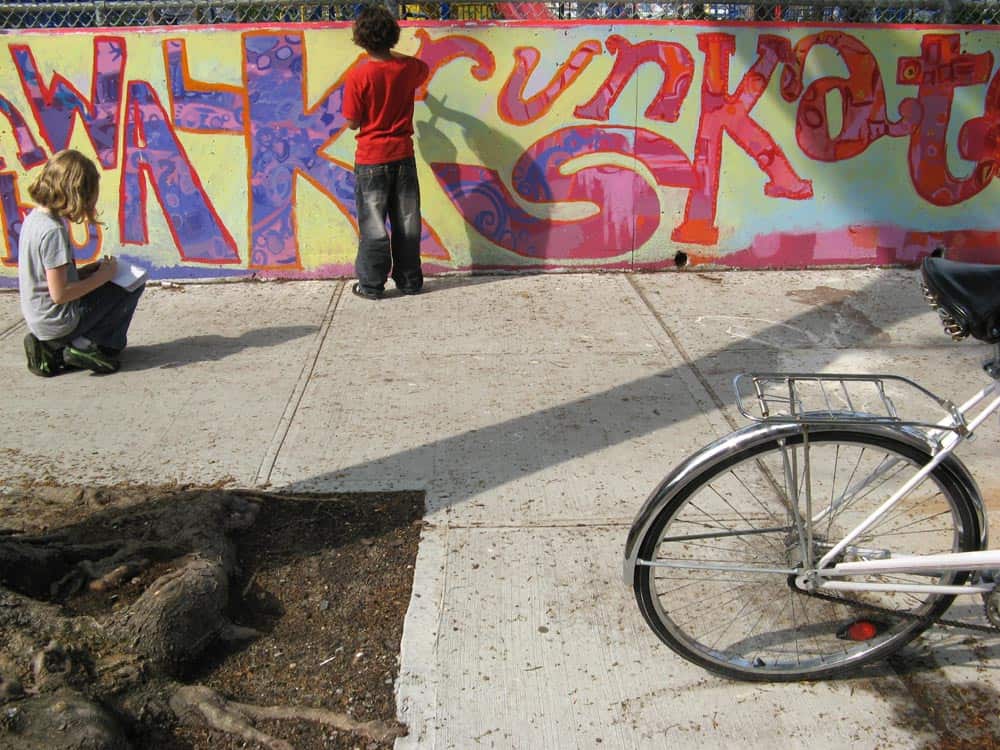
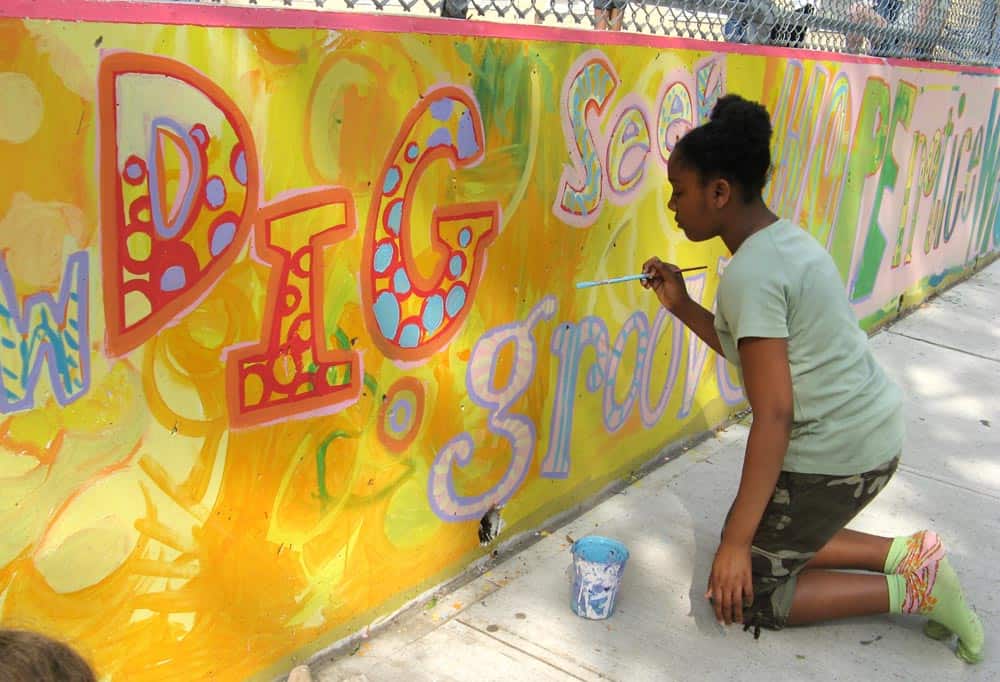
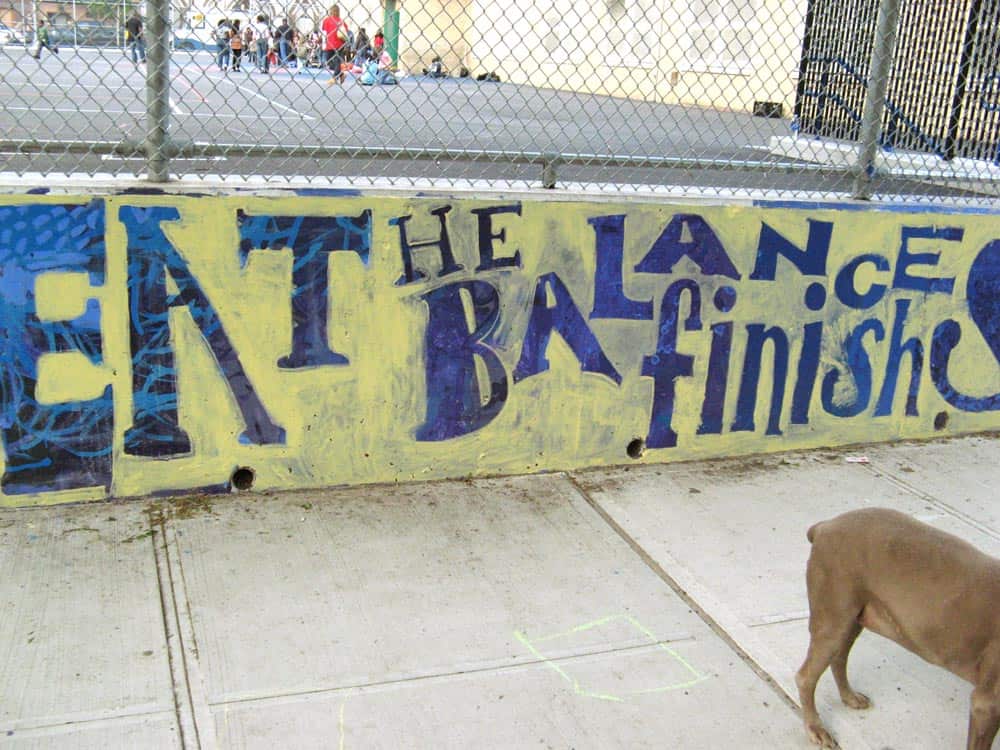
The History of Staten Island with the 4th grade class at PS 41 in Staten Island, 2009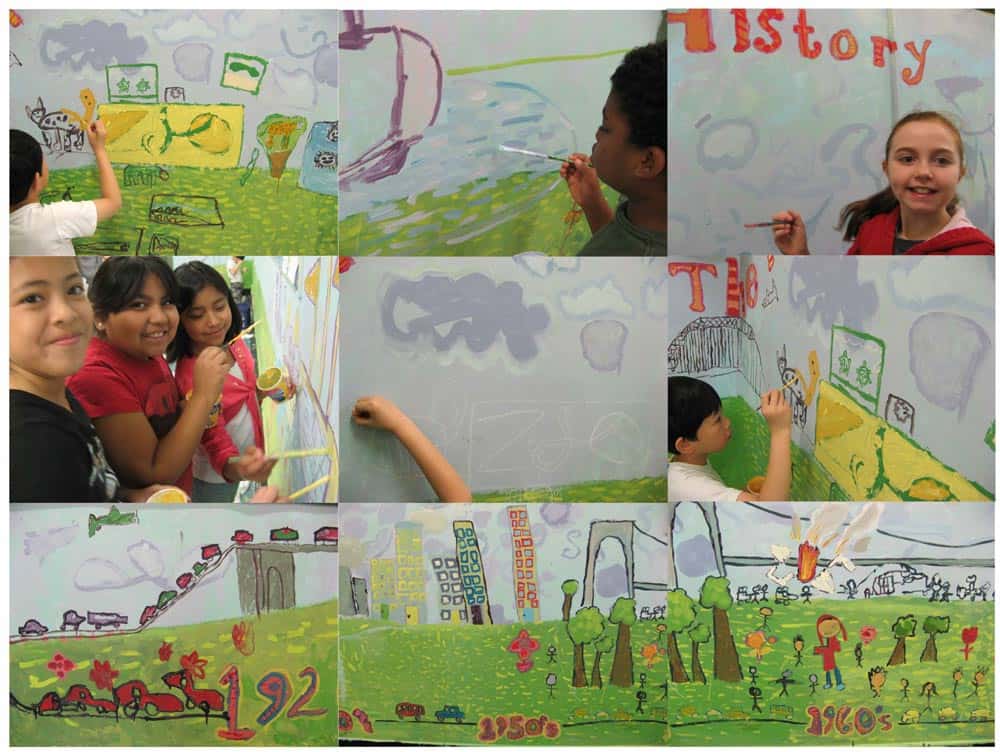
In September, I traveled to Guatemala to teach workshops on soap making.

I was invited there by the organization Oxlajuj B’atz’, based in Panajachel.
One of the workshops was in the village of Xeabaj Dos.
This community of people has been twice relocated in less than eight years.
Their original village, Santa Catarina Ixtahuacan, was completely destroyed by Hurricane Mitch in 1998. After reestablishing themselves high up in the mountains, Hurricane Stan came in 2005 and wiped out the new settlement. Many of the newly built homes in Xeabaj Dos have walls constructed from USAID tarps. They have a large, sturdy school, and just got electricity for the first time a few months ago.
You can see a photo essay here about the first relocation.
In the center is the structure we used for our workshop:


One of the goals of Oxlajuj B’atz’ is to provide opportunities for women to learn new skills and improve upon those that they already possess with the goal of developing more work opportunities, better income-earning potential and greater access to local and global markets.
The women in this village had requested to learn how to make soap, both for their own use and as a potential new product.
Soapmaking can be precarious; it involves a chemical reaction with a very caustic substance: lye. Measurements and temperatures have to be exact, and safety precautions have to be taken. Our experience proved one can still have great success soapcrafting in fairly basic conditions.
To make soap, you need three basic ingredients: an oil or fat, water, and sodium hydroxide (lye).
We started by heating up the oils over a wood-burning stove, and measured out a proper quantity of water…
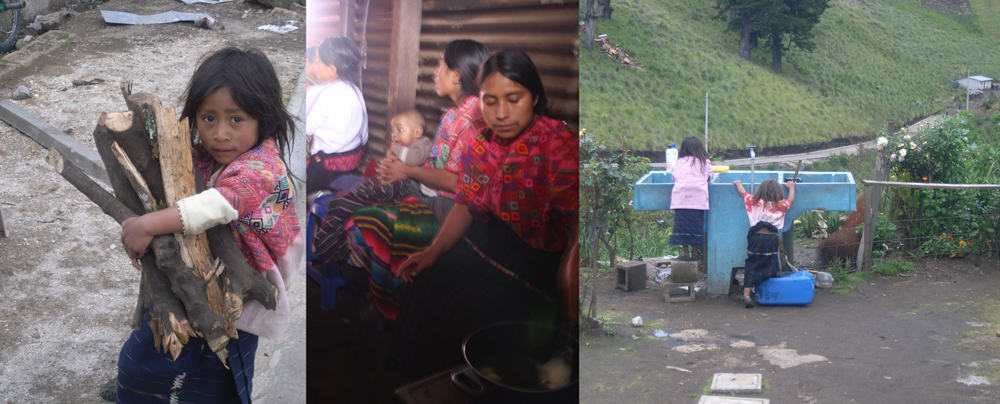
Lye is a strong base, or alkali, and can cause severe burns if it splashes on your skin or in your eyes. When handling it, you must use protective gloves and safety goggles.

When it is added to water, it also creates toxic fumes. Make sure you have plenty of ventilation when mixing your ingredients!


After the lye, water, and oil have been mixed, the mixture is poured into molds and allowed to sit for 2 days.
These women had a particular interest in making soap that had medicinal qualities. Among the plants and herbs that grew in the area, we experimented with adding eucalyptus, camomile, calendula, lavender, and achiote (annatto) as a colorant.
Lye will react with anything in its path. In order to retain the natural properties of herbs and additives, it is necessary to add them when the soap compound is stable enough. This process is called ‘rebatching’.
After the cakes of soap have rested for a couple days, they should have a ph balance neutral enough to come in contact with delicate herbs or hearty hands. The soap is then cut into small pieces, re-melted, and the dried crushed herbs are added.
Once this mixture is poured again into molds, the soap should be ready to be used in 2-4 weeks, after all the lye has neutralized.
Soap making is a new process for me, too, and the excitement at the workshops was contagious.
After all, it was the request of the women of Xeabaj Dos to be taught how to make soap that inspired me to learn how to do it myself. I consider this a great and rich collaboration.
I hope this is just the beginning of a greater involvement on my part in bringing materials and information on soap making to the women working with Oxlajuj B’atz’.
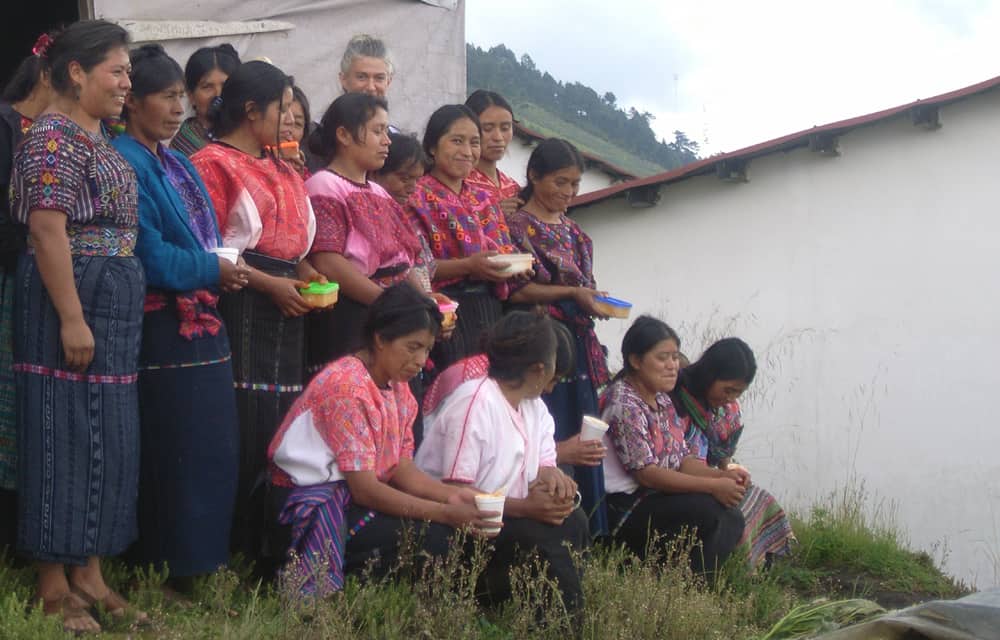
I’d like to thank everyone involved for their invitation, participation, enthusiasm, patience, and humor.
See you soon!
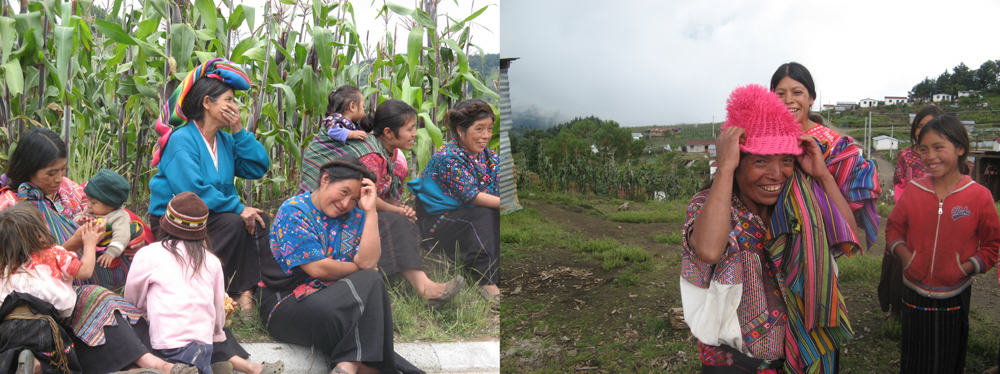
Photo credits: Eddie Haynes, Erica Harris and Taryn
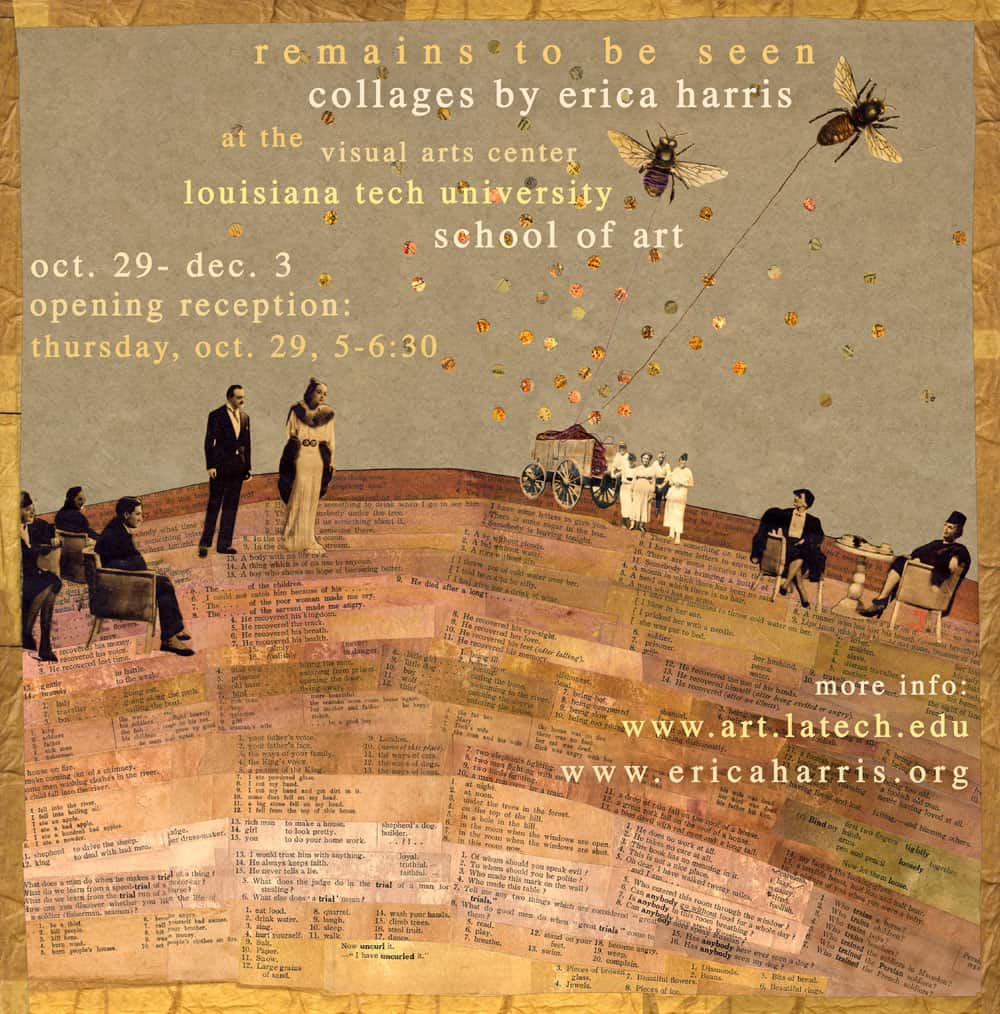
Some collaborations, collages & scenes from a 2 month residency at Sacatar Foundation, on the Bay of All Saints, in Itaparica, Bahia, Brazil.
“Miracle of the Pitanga Tree” illustrates the cover of poet Melissa Kwasny’s new book, Reading Novalis in Montana, from Milkweed Editions. Continue reading
chinterviews from erica harris on Vimeo.
| 8 min. 2007
Phoebe Keeling Vandusen, Cousin Donna Dru, and Erica Harris star in this candid and introspective commentary filmed entirely on location in Woodstock, NY.
trabalenguas from erica harris on Vimeo.
| 1 min. 2007
Griselda Rubidia Castro Rodriguez stars in this short film made in Colima, El Salvador. ‘Trabalenguas’ translates as ‘tongue twisters.’
Music by Erica Harris